F.A.T. Finn Andalus Travel GmbH – Incoming Agentur (DMC) für Spanien
Spanien mit allen Sinnen erleben
Spanien erfahren, erfühlen, erfassen – ganzheitlich, nachhaltig und entschleunigt. Mit F.A.T. bieten Sie Ihren Kunden ganzheitliche Reiseerfahrungen, ob für Gruppen oder Individualreisende. In unserer Reisemanufaktur verbinden wir anspruchsvolle Reisekonzepte mit den speziellen Wünschen und Schwerpunkten unserer Auftraggeber. Ob Kulturreise, Luxustour, Naturerlebnis oder eine Kombination daraus – durch unsere maßgeschneiderte Programmgestaltung garantieren wir, dass Ihre Kunden Spanien ganz nahe kommen. In unserem spanisch-deutschen Team verbinden wir das Beste aus beiden Kulturen: wir kennen die Heimat unserer Gäste genauso wie das Leben in Spanien. Mit dem so entstandenen weitläufigen Netzwerk in beiden Ländern schaffen wir wahre Begegnungen und Erlebnisse im Spanien – und können Ihnen während der Reise eine deutschsprachige rund-um-die-Uhr-Betreuung in allen Lebenslagen bieten. Das i-Tüpfelchen: unsere Reiseleiter. Allesamt haben sie in Spanien ihre zweite Heimat gefunden, verstehen es, Gäste für „ihr“ Land zu begeistern und sie mit in versteckte Winkel zu nehmen, genauso wie sie versiert mit allem Organisatorischen einer Tour umzugehen wissen.


Reisethemen
Wir hören gut zu, schauen genau hin und nehmen ernst, worauf Sie und Ihre Kunden Wert legen. Erst dann präsentieren wir Ihnen eine Reisekreation. Erfahrene Experten entwickeln und realisieren gemeinsam mit Ihnen individuelle Programmwünsche – alle unsere Reisen sind maßgeschneidert und punktgenau.
weiterlesen
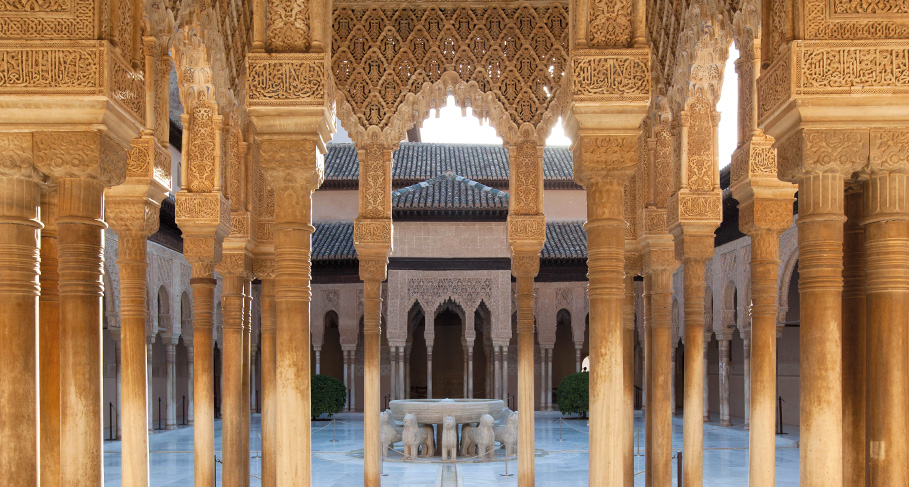
Spanien ist mit vielfältiger Geographie und Artenvielfalt, zwischen pulsierenden Städten und ursprünglichen Landschaften ein 9-sprachiger kosmopoliter Mini-Kontinent mit einzigartiger Kultur und abwechslungsreicher Geschichte. Die erlebnisreiche Gastronomie – weltprämiert von der Mittelmeerkost bis zur hohen Kochkunst – bietet kulinarische Genüsse für jeden Gaumen.
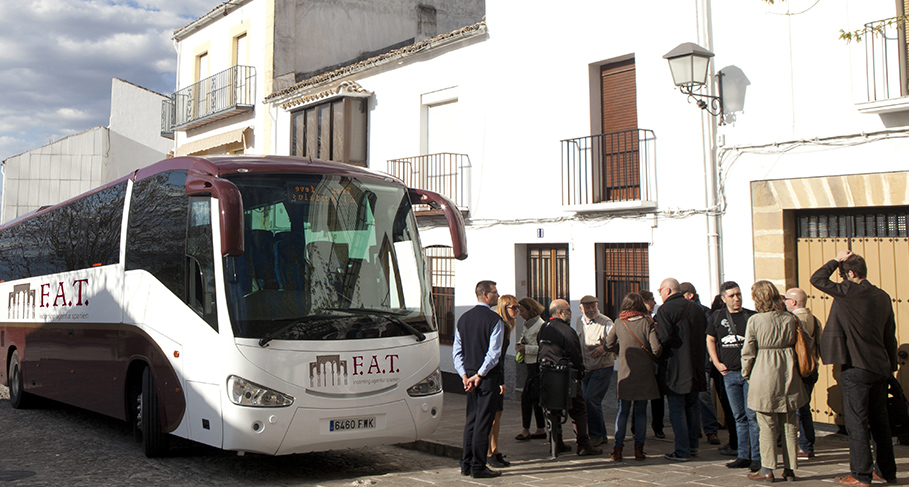
Zubucherreisen
SIE veranstalten – WIR garantieren die Durchführung Ihrer Reise! Wir bieten Gruppenreisen auf Zubucherbasis mit deutscher Studienreiseleitung vor Ort an, welche von uns entwickelt und organisiert werden. Die Reisen finden zuverlässig, zu festgelegten Terminen statt – Absagen bleiben ausgeschlossen. Es entsteht für Sie kein Veranstalter-Risiko!
Profitieren Sie von unserer Erfahrung
Wir wissen viel, sehr viel über Spanien. Seit mehr als 30 Jahren leisten wir in Sachen Spanien Pionierarbeit. In all den Jahren haben wir eine Fülle an Informationen gesammelt, die wir ständig durch engagierte Eigen-Recherchen erweitern und aktualisieren.
Unsere Vision
Wir bereichern unsere Reisekreationen kontinuierlich mit neuen und innovativen Bausteinen für ein ganzheitliches Reise-Erlebnis mit allen Sinnen.
Alle örtlichen Leistungsträger unterliegen der ständigen Qualitätskontrolle durch unsere Mitarbeiter vor Ort. Rückmeldungen von Kunden fließen direkt in unsere Reiseplanungen ein.
Wirtschaftliches Handeln
Für ein verantwortliches und nachhaltiges Wirtschaften bemühen wir uns beständig um Fairness im Einkauf und eine transparente Preisgestaltung.

Verantwortung
Gegenüber Leistungspartnern und Mitarbeitern, sozialverträgliche Preisgestaltung, Chancen für Start-ups.
Begegnung auf Augenhöhe mit unseren Kunden, Kollegen und Partnern vor Ort – das bildet unsere Basis für ein vertrauensvolles Miteinander.
Kompetenz und Kontinuität
Wir können, was wir tun: Seit 1986 pflegen wir beständig unsere weitläufigen Zielgebietskenntnisse und sozialen Vernetzungen.

Das Spanische Fremdenverkehrsamt sagt über F.A.T.:

Mit ihrer langjährigen Erfahrung und ihren profunden Kenntnissen des Spanischen Festlands kreieren die Spezialisten von F.A.T. einzigartige Reiseerlebnisse. Wer mit F.A.T. reist, lernt Spanien, die Spanier, deren Vorlieben und Gebräuche, die lokalen Spezialitäten und Besonderheiten hautnah und genussvoll kennen und hoffentlich auch lieben.

Die Liebe zu Spanien, zu Nachhaltigheit, Qualität und Autentizität sind unsere gemeinsamen Werte:

REISETHEMEN
- Studien- & Kulturreisen
- Dialog – Religion – Begegnung
- Opern- & Konzertreisen
- Incentive- & Eventreisen
- Wandern durch Raum & Zeit
- Wein- & Genussreisen
- Sport- & Aktivreisen
- Barrierefreies Reisen
- Zentralspanien
- Nordwest-Spanien
- Spanische Metropolen
AKTUELLES AUS SPANIEN
- Kulturkalender Spanien 2023 26. Januar 2023 - 10:19
- ANDALUSIEN + EXTREMADURA – Urlaub unter Geiern 25. Juli 2019 - 17:20
F.A.T. GmbH – Incoming Agentur (DMC) für Spanien Waldstraße 14 D-70825 Korntal
Tel: 0711 – 833340 E-Mail: [email protected]
- Recent Photos
- The Commons
- Flickr Galleries
- Camera Finder
- Flickr Blog
- The Print Shop
- Prints & Wall Art
- Photo Books
- Stats Dashboard
- Get Auto-Uploadr
Finn Andalus Travel
0 Followers • 1 Following
Joined 2024
Drag to set position!
- Photostream
Finn Andalus Travel hasn’t made any photos public yet.
- Travel and tourism
FAT - FINN-ANDALUS-TRAVEL GMBH
Office Building Outline icon Service Provider
The company FAT - FINN-ANDALUS-TRAVEL GMBH, is a Service Provider, which operates in the Travel and tourism industry. It also operates in the Travel agencies, Tour operators, Coaches - international travel, and Language-learning holidays industries. It is based in Korntal-Münchingen, Germany.
Other companies in the same industry:
RAND O PALMA
AZIENDA DI SOGGIORNO E TURISMO MERANO
TOSCANA VERDE RESORT
Domain icon Service Provider
Waldstrasse 14
70825 Korntal-Münchingen - Germany
Company info
Organisation.
- Main activity Service Provider
Activities of FAT - FINN-ANDALUS-TRAVEL GMBH
- Travel agencies
- Tour operators
- Coaches - international travel
- Language-learning holidays
europages also recommends
A selection of companies related to the activity:.
Store icon Multi-Category

A selection of products that might interest you
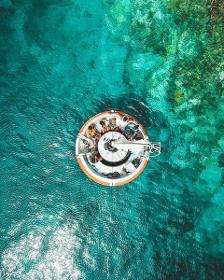
Do you have a project to create a nautical base specialising in BBQ Boats? As a professional in the boating industry, would you like to develop this concept economically? Are you in the process of changing careers and want to set up your own business? With 7 years of expertise in the nautical sector, our company BBQ BOAT offers you its experience for future creators of BBQ Boat bases. This guide is based on our in-depth knowledge of how to set up a BBQ Boat base. Right from the start, this guide facilitates discussions between you, as the project owner, and our company, in order to clearly define the objectives and expected performance of your BBQ Boat base. Please contact Us !
Request for quotes
Create one request and get multiple quotes form verified suppliers.
- Only relevant suppliers
- Data privacy compliant

FAT finn andalus travel GmbH
This company profile is a search result of implisense.com
Social Media
Products and services, size (revenue & employees), balance sheet total, commercial register, legal entity identifier (lei), incorporation, capital stock, historical names.
Order Implisense Plus now for full company profiles and complete functionality! Your benefits:
- Complete company profiles
- Plus-research for companies
- AI-based analyses (NEW)
- Executive Summary
Implisense Assist gives you the opportunity to use AI to find out about companies via chat, analyze them and much more. We from the Implisense team also provide you with ready-made analyses, e.g., an executive summary and a financial analysis. Just try it out for yourself!

ADVERTISEMENT
Intelligent sales concepts for products requiring explanation
https://strategisches-vertriebsmarketing.de/
sustainabill
Sourcing – transparent and sustainable
https://sustainabill.de/
Your advertising here
Implisense allows you to advertise your products and services to targeted decision makers.
Make an appointment
Contact persons
Search for contact persons and decision-makers in real time with our AI-supported GDPR-compliant solution.
- M••••• B••••••••••••R••••••
- Key Figures
- Balance Sheet Total
- Summarized Balance Sheet
- Annual accounts
Analysis with Implisense Assist
Create an AI analysis of the balance sheet with Implisense Assist.
See directly the latest available annual report of this company.
With a free Implisense account you can access all entries in the balance sheet total tab.
€ 766,945.00
€ 792,530.00
The key figures on balance sheet total, revenue, profit and number of employees were generated by a fully automatic extraction from published annual financial statements. The last published balance sheet total of the FAT finn andalus travel GmbH is 2021 at 800 k € . The difference compared to the previous year is +3.3% .
With Implisense Plus you can access all key figures in the tabs sales, profit and employees, if they are available with us.
1 Employees
The key figures on balance sheet total, revenue, profit and number of employees were generated by a fully automatic extraction from published annual financial statements.
The summarized balance sheet helps to check the economic situation of important customers, suppliers and competitors. The key figures are taken from the published annual financial statements of the respective company. With an Implisense Plus account you can access available data of the summarized balance sheet.
Register to see more connections via management and web links . Get access to an interactive network to better understand the environment of this company.
Products & Technologies
Products & services.
Register for a free Implisense account to get advanced analysis and more extensive search results.
FAT finn andalus travel GmbH is mentioned in public sources in the context of the following products and services. Wein , Studien and Gärten are the most common. The ranking list shown is without guarantee of completeness or correctness.
- Supply Chain Analysis
For the sector Tourism , supply chain dependencies with Switzerland , France and United Kingdom of Great Britain and Northern Ireland have been detected in macroeconomic data. Contact us for an individual analysis - increase your company's resilience and improve your ESG initiatives.
- Information for Job Seekers
- Requirements
Based on job advertisements of FAT finn andalus travel GmbH, the following specific requirements for job seekers were identified more frequently. Specific requirements can be found in the latest published job advertisements.
Persönliche Kompetenz
- Einsatzbereitschaft
- Zuverlässigkeit
Register now for a free Implisense account. Registered users have access to advanced analyses and more key figures on company profiles, receive more extensive search results and can also create and manage their own favorites.
- Richer Company Profiles
- Expanded Search Results
- Personal Favourites and Notes
Implisense Account
You may also be interested in
- Search for "FAT finn andalus travel GmbH"
- Search for "Waldstr. 14" in "70825 Korntal-Münchingen"
- Find companies with zip code 70825
- Find companies in industry "Tourism" in zip code region 70
- Products & Technologies
eVergabe.de
From now on simple and fast procurement
https://www.evergabe.de/
The Right Data for Innovators
https://www.mapegy.com/
- --request GET \
- --header "Content-Type: application/json" \
- --url "https://implisen.se/DEZHRO6TO383" | jq '.'
- "companies" : [
- "id" : "DEZHRO6TO383" ,
- "name" : "FAT finn andalus travel GmbH" ,
- "street" : "Waldstr. 14" ,
- "zip" : "70825" ,
- "city" : "Korntal-Münchingen" ,
- "profile" : "https://implisense.com/companies/DEZHRO6TO383" ,
- "active" : true
- require 'json'
- require 'net/http'
- uri = URI ( 'https://implisen.se/DEZHRO6TO383' )
- response = Net :: HTTP . get (uri)
- puts JSON . parse (response)
- "companies" => [
- "id" => "DEZHRO6TO383" ,
- "name" => "FAT finn andalus travel GmbH" ,
- "street" => "Waldstr. 14" ,
- "zip" => "70825" ,
- "city" => "Korntal-Münchingen" ,
- "profile" => "https://implisense.com/companies/DEZHRO6TO383" ,
- "active" => true
- const https = require( 'https' );
- https. get ( 'https://implisen.se/DEZHRO6TO383' , (response) => {
- let data = '' ;
- response.on( 'data' , (chunk) => {
- data += chunk;
- response.on( 'end' , () => {
- console.log(JSON.parse(data));
- { companies:
- [ { id: 'DEZHRO6TO383' ,
- name: 'FAT finn andalus travel GmbH' ,
- street: 'Waldstr. 14' ,
- zip: '70825' ,
- city: 'Korntal-Münchingen' ,
- profile: 'https://implisense.com/companies/DEZHRO6TO383' ,
- active: true } ] }
- import urllib . request
- import json
- from pprint import pprint
- response = urllib . request . urlopen( 'https://implisen.se/DEZHRO6TO383' ) . read()
- pprint(json . loads(response))
- { 'companies' : [{ 'active' : True ,
- 'city' : 'Korntal-Münchingen' ,
- 'id' : 'DEZHRO6TO383' ,
- 'name' : 'FAT finn andalus travel GmbH' ,
- 'profile' : 'https://implisense.com/companies/DEZHRO6TO383' ,
- 'street' : 'Waldstr. 14' ,
- 'zip' : '70825' }]}
- package main
- import ( "net/http"
- "io/ioutil"
- "encoding/json"
- func main() {
- response, _ := http . Get( "https://implisen.se/DEZHRO6TO383" )
- defer response . Body . Close()
- payload, _ := ioutil . ReadAll(response . Body)
- var out bytes . Buffer
- json . Indent( & out, payload, "" , " " )
- fmt . Println( string (out . Bytes()))
With the Implisense API you can enrich your CRM or ERP system with public data on over 2 million companies. Via the RapidAPI marketplace you can directly access our API. For further information, please refer to our internal page on the Implisense API .
This website uses cookies to provide this service and improve the user experience. Please select the cookies you wish to accept. You can find further information in our data protection declaration .
Urban Abroad
Urban Planning and Travel Blog
7 Days in Andalusia itinerary
Travel Blog Last Updated · Jan 10th, 2024 [post_author_posts_link] · [post_comments before=""] -->
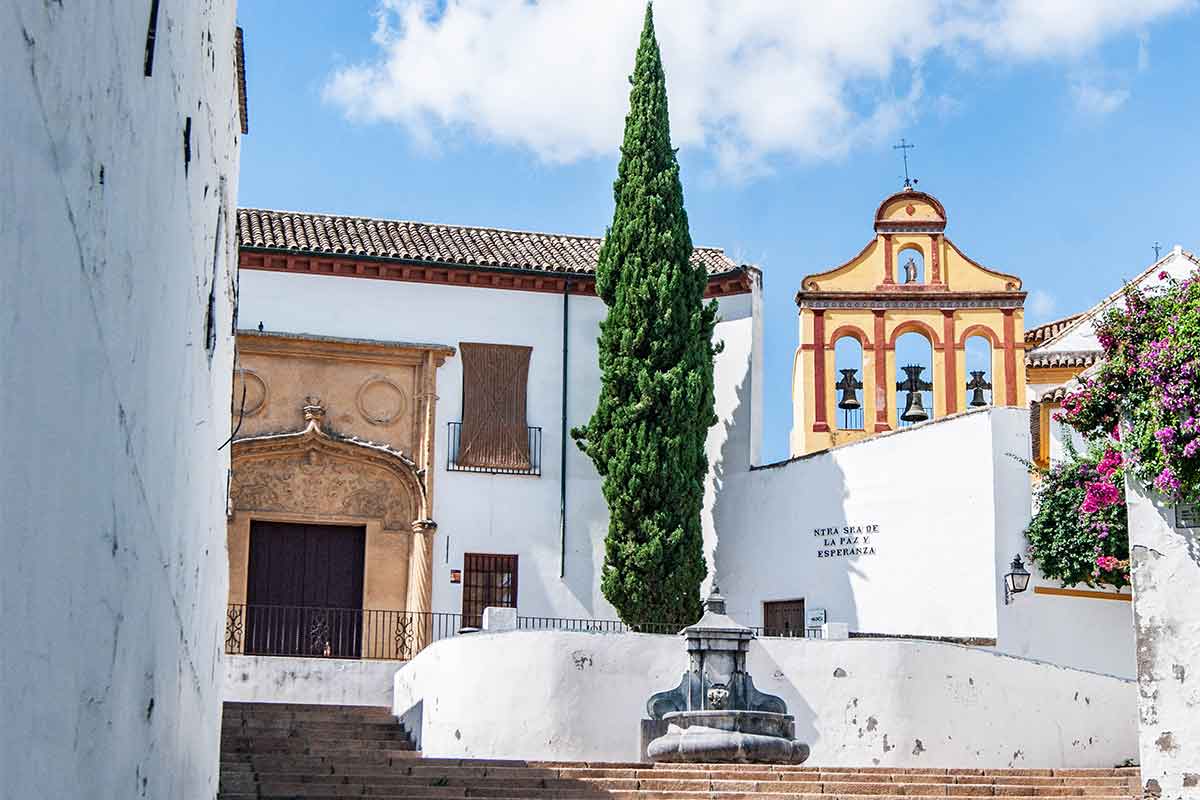
Are you planning your Andalusia itinerary and wondering how to make the most of your stay without missing the most important attractions?
This southern region in Spain is one of the most popular areas to travel to within Europe. And with its sweltering summers, stunning architecture, and beautiful beaches, it’s easy to see why.
As you may already know, Spain is famous for Andalusia and the Costa del Sol , not only for its sought after lifestyle and culture but its incredible and diverse past which is another big pull for tourism to the region.
Table of Contents
Andalusia itinerary
In this guide, we’ll explore the sunny region of Andalusia, talk about some of the main reasons to visit, and the best things to see and do.
We’ll also look at how to get around and our best tips, which include how long to stay for and the best time to visit.
Where is Andalusia?
The Andalusia region is the southernmost region of Spain. Its west side borders Portugal and the east side with Murcia, and the northern part borders the regions of Extremadura and Castilla-La Mancha.
Andalusia’s coastline is bathed by both the Mediterranean Sea and the Atlantic Ocean. This Spanish region is divided into 17 provinces.
Some these provinces are popular touristic destinations:
Did you know? Andalusia is the most populous region of Spain and the second-largest autonomous community in the country.
What is Andalusia known for?
The list of things that Andalusia is known for is quite long. Without any doubt, it’s a go-to destination for its spectacular beaches.
From the Costa del Sol to the 100 km stretch of astonishing beaches of Almería, if you’re chasing ‘sol y playa’, here you’ll feel spoiled by choice!
The artistic and architectural heritage inherited from Arab culture is another reason why Andalusia attracts thousands of visitors.
The Alhambra of Granada, the Alcazaba of Málaga and the Mezquita of Córdoba are only a few incredible Muslim monuments you can explore during your stay in this part of Spain.
Finally, this part of the country is famous for its traditional cuisine, religious festivals, flamenco and the ‘corrida’.
Is Andalusia worth visiting?
Andalusia is known as one of the best summer break destinations in Europe, with the region having consistent and hot weather.
Later in this guide, we’ll look at the climate in more detail.
Throughout the region, you’ll also find some really impressive beaches to relax on, which can be strongly argued to be some of the best in Europe.
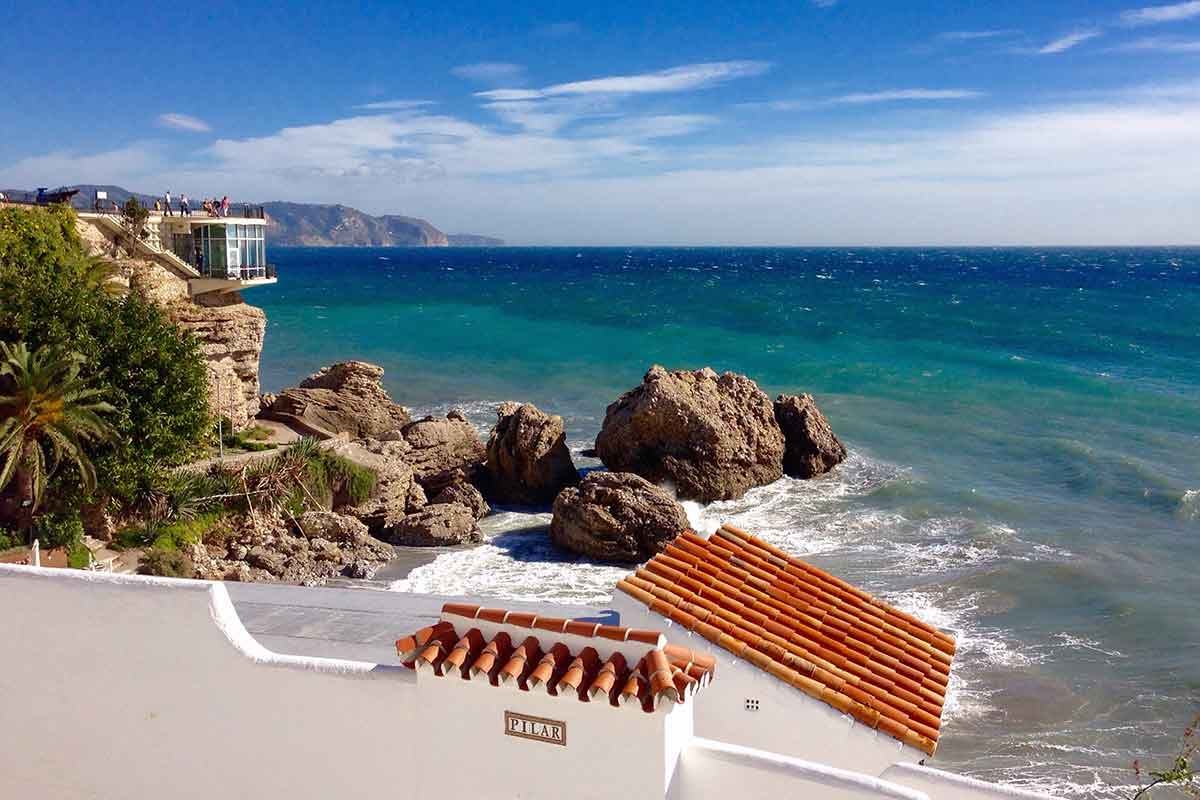
There are both popular city beaches with all amenities a stone’s throw away, as well as wild and secluded beaches for those who like a more private experience. You really can’t go wrong here.
The region is also home to many impressive destinations, as well as a large Moorish influence which can be seen all over the region.
UNESCO sites such as the Alhambra Palace in Granada and the Mezquita Cathedral in Córdoba are some of the region’s best attractions.
The stunning architecture seen in cities such as Seville and Granada is also a pull for those coming to the region, where pebble courtyards, painted tiles, and giant stone walls dominate the urban landscapes.
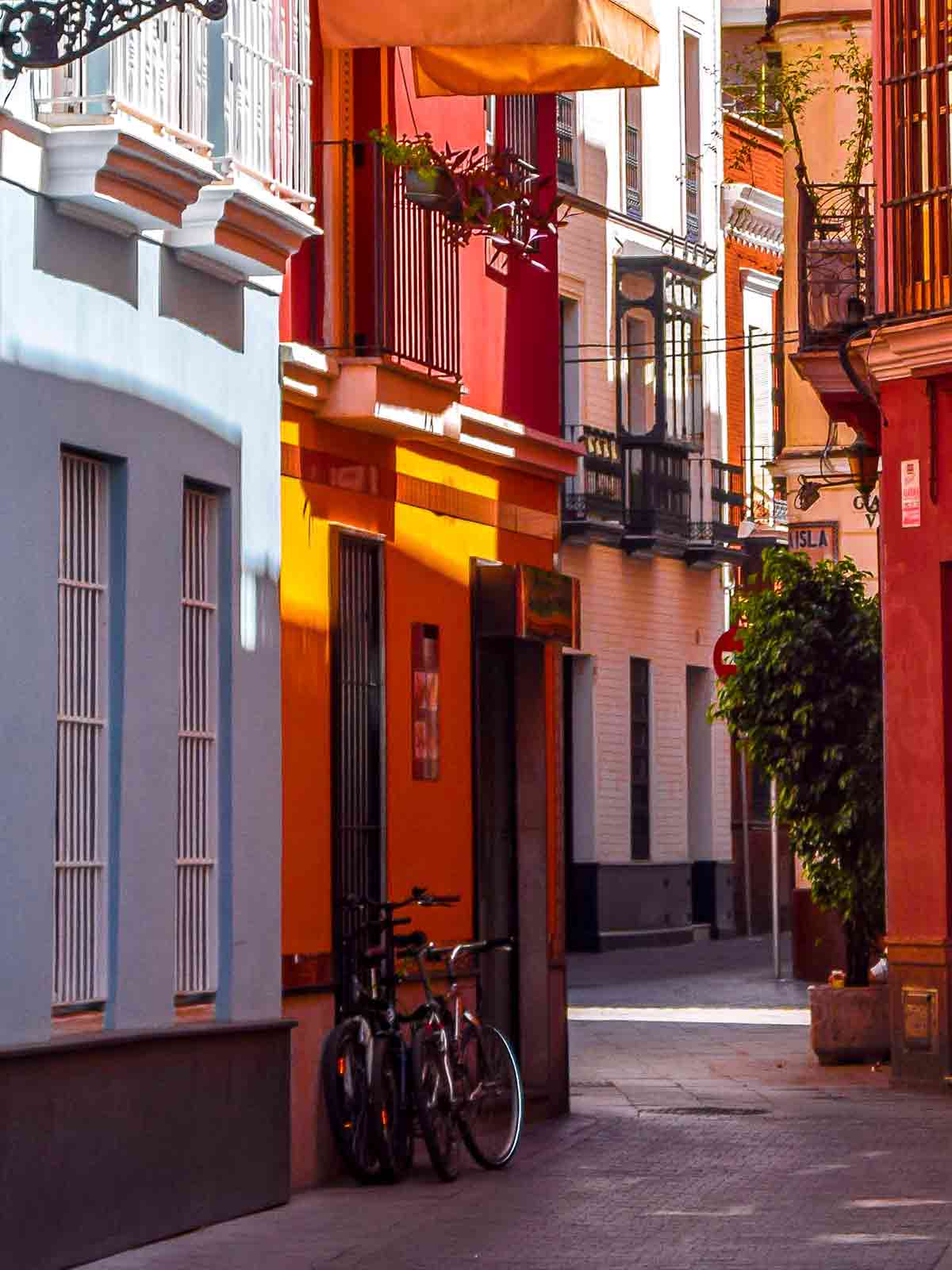
Just walk through any city or town in the region and you’ll see examples in hidden streets you pass by and on random buildings your eye catches.
Andalusia is also well-known for its food, with Gazpacho soup the absolute must-try here. Then of course there’s the tapas, with Tortillitas de Camarones and Croquetas as some of the best to start your appetite.
What is the best month to visit Andalusia?
In our opinion, the best month to visit Andalusia would be April or May.
September and October are also very favorable, especially because the average temperatures usually hover between 20 and 30 C°.
The reason why we don’t suggest visiting Andalusia during the summer months is that temperatures can be extremely hot (40 C°) and most tourists travel between July and August.
To avoid crowds, then choosing shoulder seasons is the best way to go to fully enjoy your time at the beach and when visiting the historical landmarks and historical centers.
How to get in and around Andalusia?
Andalusia is located in southern Spain, and you can easily arrive from other major cities in the country such as Madrid and Valencia. You can also arrive from Portugal, and also by ferry from Morocco in the south.
If elsewhere in Europe, then you’ll need to fly in (unless you don’t mind a very long drive or multiple buses).
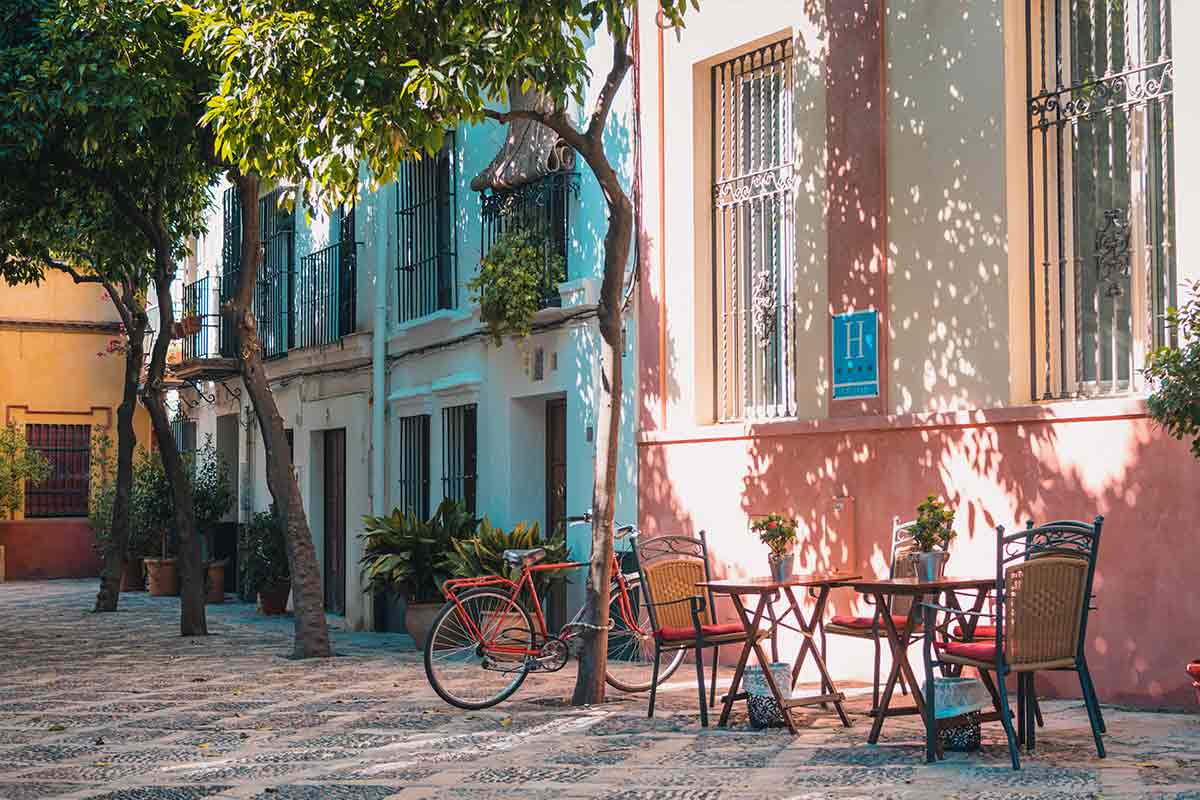
Malaga is the hub of Andalusia, and flights into the city are some of the cheapest in the region. There’s also an airport in Seville which has lots of good connections.
Andalusia is also a very easy region to get around once in. Even if you don’t have the budget to rent a car , there’s a train that runs through the major cities and towns, and the rest is well connected by bus.
How Many Days to Spend in Andalusia?
We’d say a minimum of 6 days is enough to see the best of Andalusia.
More would be better, but this amount of time would allow you to get a good feel for the Spanish region.
Here you would start by arriving in Malaga and spending a day exploring Gibralfaro Castle and also lounging on the beach.
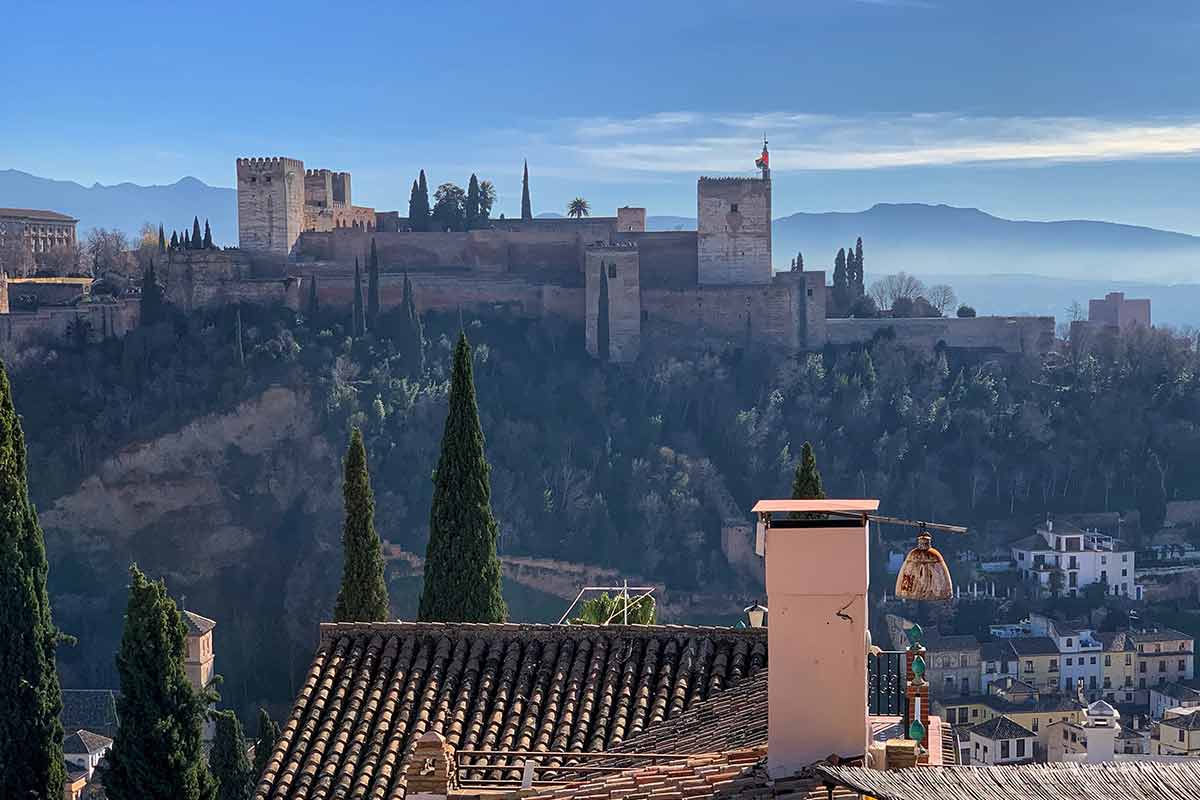
The next 2 days will be spent exploring Granada, its amazing cobblestone streets, and the impressive Alhambra Palace.
From here you would then spend 1 day in Cordoba to see the legendary Mestique Church.
Your last two days will be spent in Seville, where you can see the Plaza de Toro , the Plaza de España as well as sitting back to take in Andalusian life.
Places to visit in Andalusia
Below, we have outlined the places to visit in this Andalusia itinerary.
If you have already taken the time to read our guide to 3 days in Madrid you can be sure to trust us to have more travel gems lined up for you.
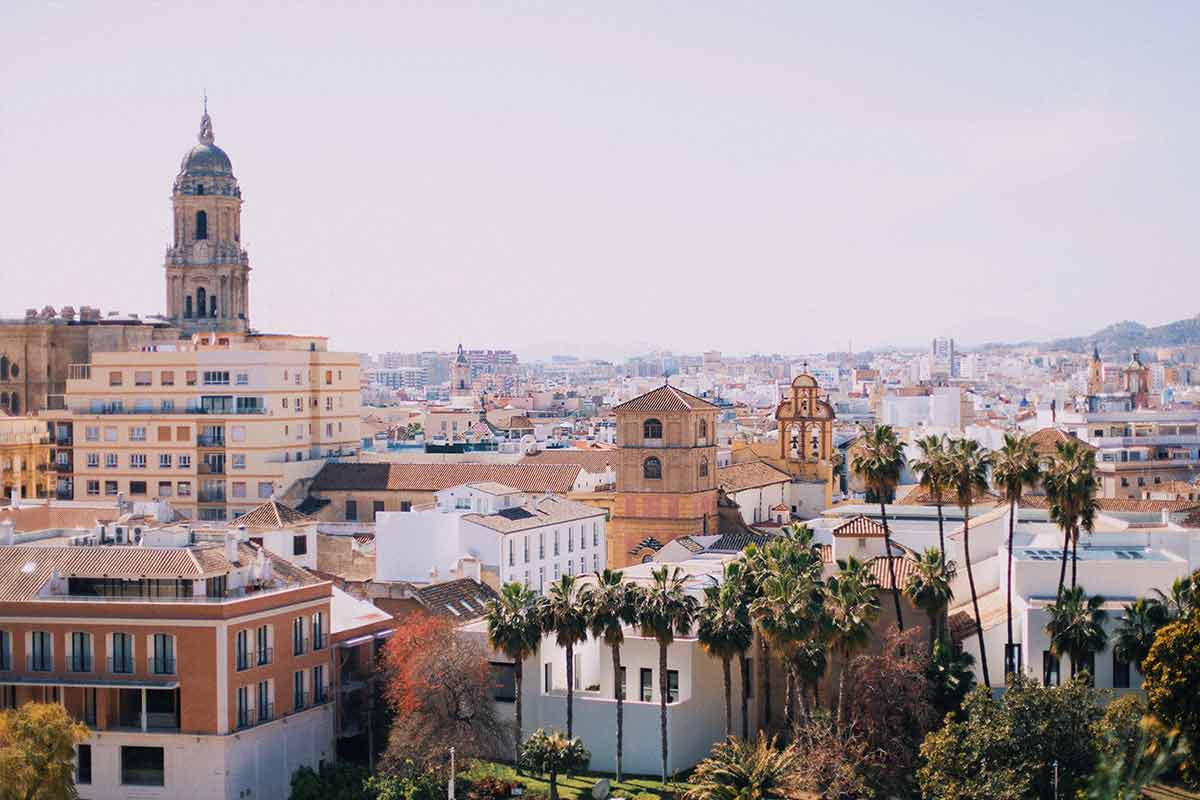
Let’s start with the popular beachside hub of Malaga. Drawing a large number of tourists from all over the world, Malaga is well-known for its position along the Costa del Sol and its incredible stretch of beaches.
One of the best things to do in Malaga is to hike up to Gibralfaro Castle. From here you’ll learn about the ancient fortress, its importance for the city as well as get some stunning views over the city and bay of Malaga.
Another great thing to do here is to visit the historic center where you can see many important landmarks and sights including the Alcazaba, doing a tour of Teatro Romano and the Cathedral of Malaga.
The Alcazaba is one of the most popular to visit, with the ancient fortress being built during the 11th century, and is a great place for travel photos.
Malaga is usually the starting point of any trip to Andalusia with its well-connected airport.
Here there are plenty of accommodation options for all budgets (even some top-notch hostels if you’re on a modest budget) and travelers.
There are also lots of quirky restaurants and bars. The best places to stay are near Malagueta Beach and also the historic center.
This cobblestone-laden city is one of Spain’s most scenic places to visit
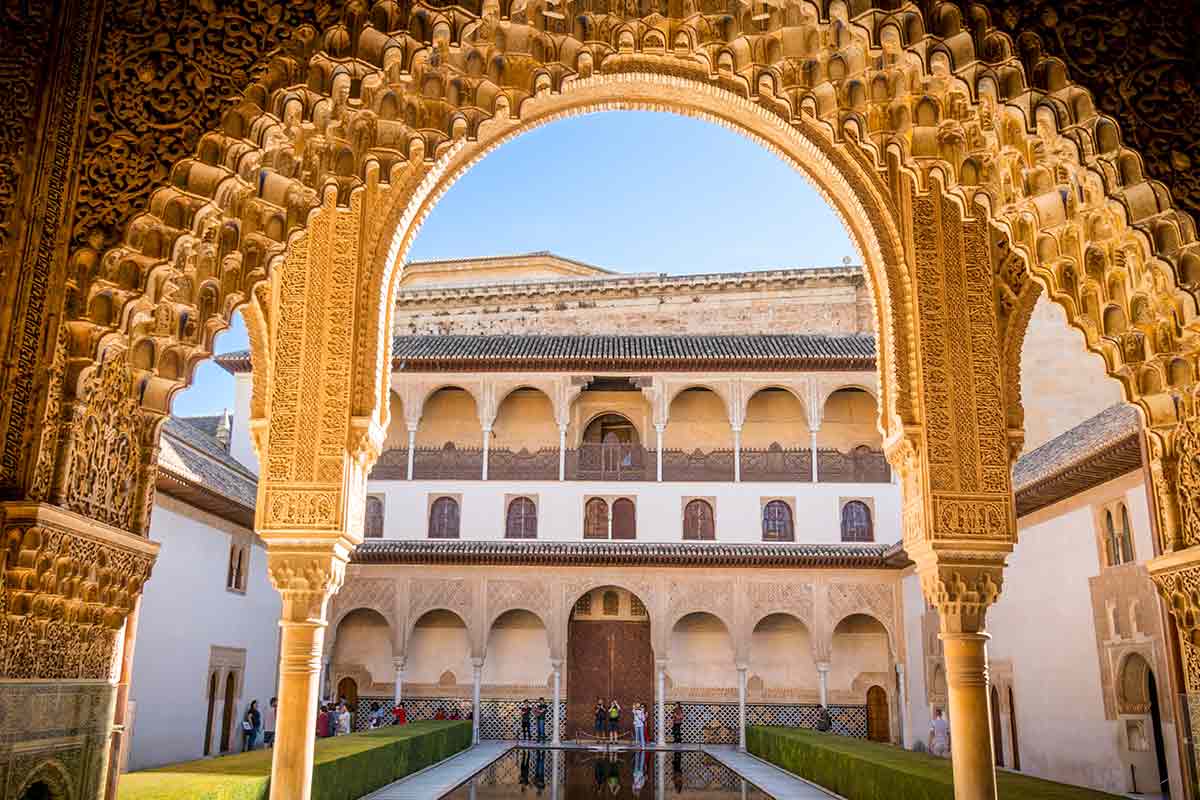
Known for its university and student life, Granada is also home to some stunning natural scenery since it’s located next to the Sierra Nevada.
The best thing to see here is the legendary Alhambra Palace. Built in 1238, this palace is situated on top of a hill and overlooks Granada. It’s a UNESCO World Heritage site and one of Spain’s most visited landmarks.
Here you can marvel at its impressive towers, picturesque fountains, and courtyards, as well as Arabic patterns and inscriptions.
Another must-visit is the Puerta del Elvira . The giant door towers over the nearby streets and was once the main gateway into Granada.
As mentioned earlier, Andalusia has a strong Moorish history which is reflected in its architecture, and Granada is one of the best places to marvel at these incredible designs and heritage.
One way to experience this unique culture is by going to a Hamman Spa where you can relax for the day. We recommend heading to Hamman Al Ándalus , which is located next to the Iglesia de San Gil y Santa Ana.
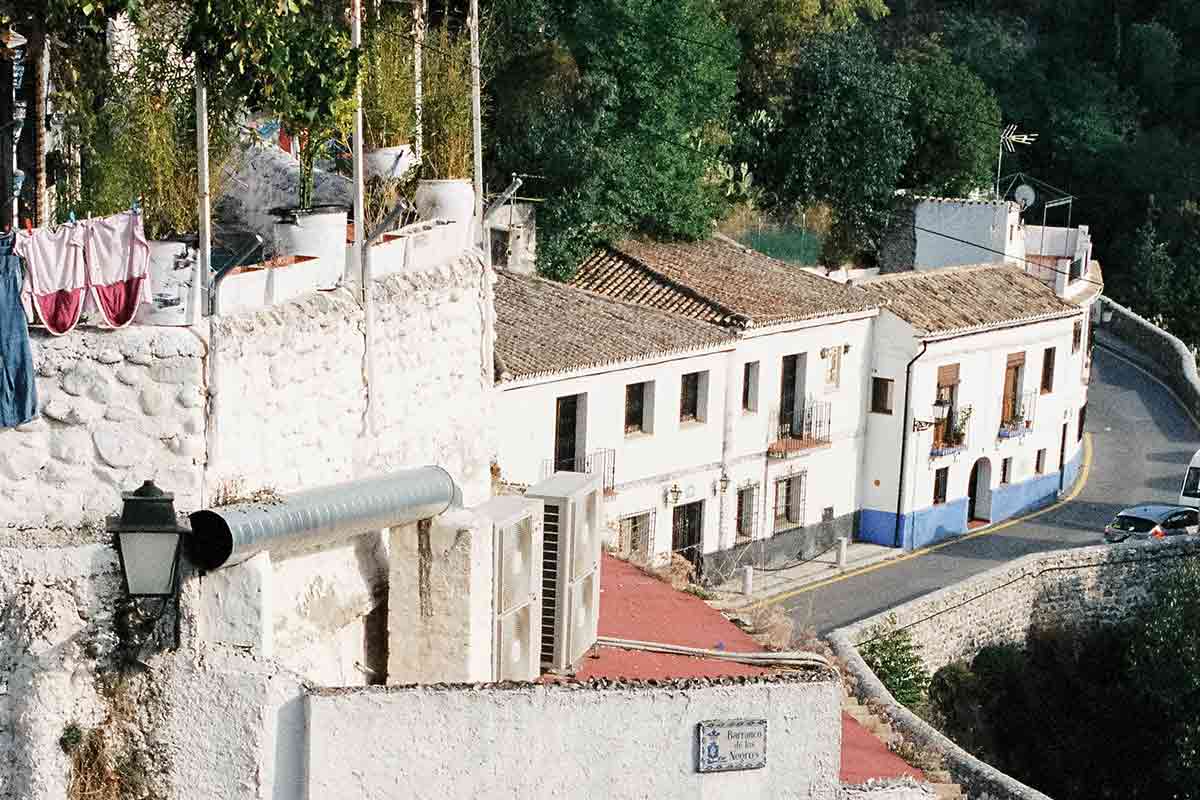
One of the best areas to stay is the Albaicin neighborhood, which is the oldest district and one of the most picturesque. Check out places Shine Albayzín for a typical Granadan stay.
Here you’ll find lively streets filled with tapas bars and markets. Also, the area around the Plaza de Santa Ana is a good place to base yourself.
Córdoba is another beautiful city located in Andalusia. Its best known for the Mezquita Cathedral, which used to be a mosque, however, has since been transformed into a Roman Catholic Church.
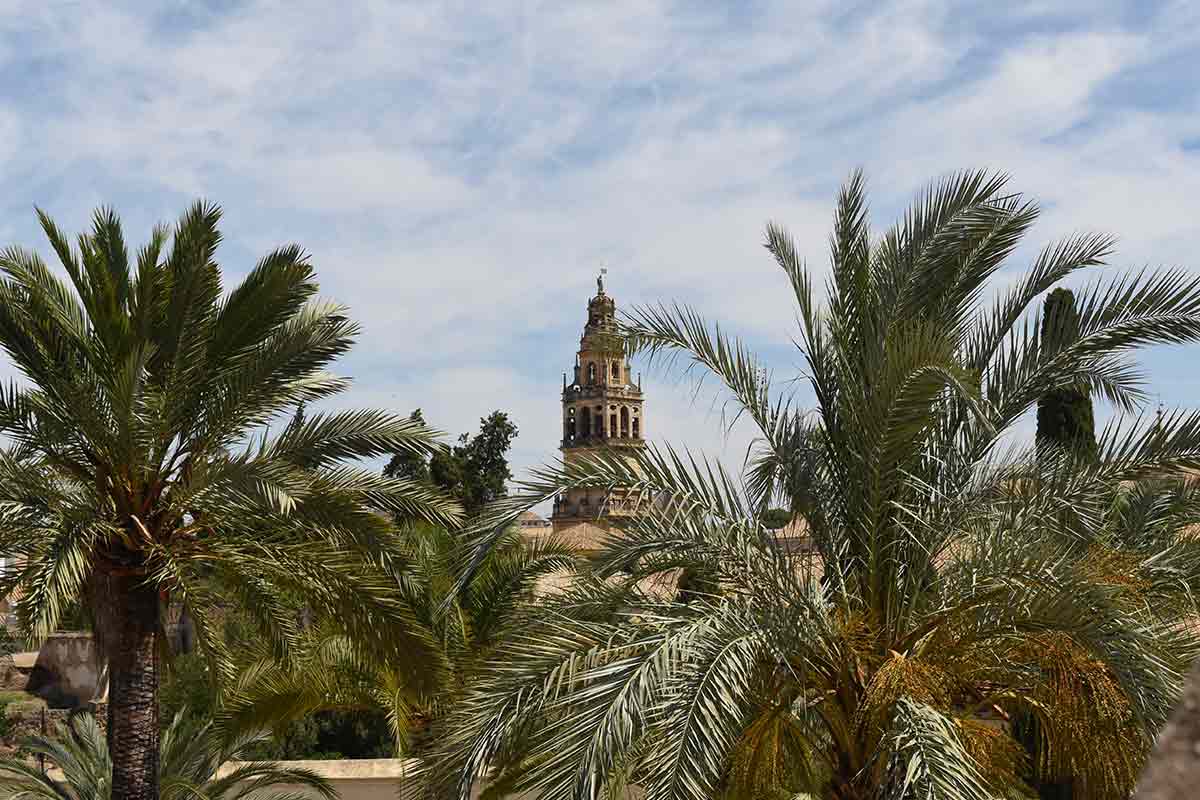
This gem is one of the region’s most popular sights, with its impressive painted columns and half-moon arches that fill the entire complex.
One of the best things to witness here is the glowing effect when the sun shines through the windows into the main hall.
There are also lots more impressive architectural delights to see in this city, which include the Alcázar de Los Reyes Cristianos and its beautiful gardens and fountains.
This royal complex is also home to the largest library in Western Europe.
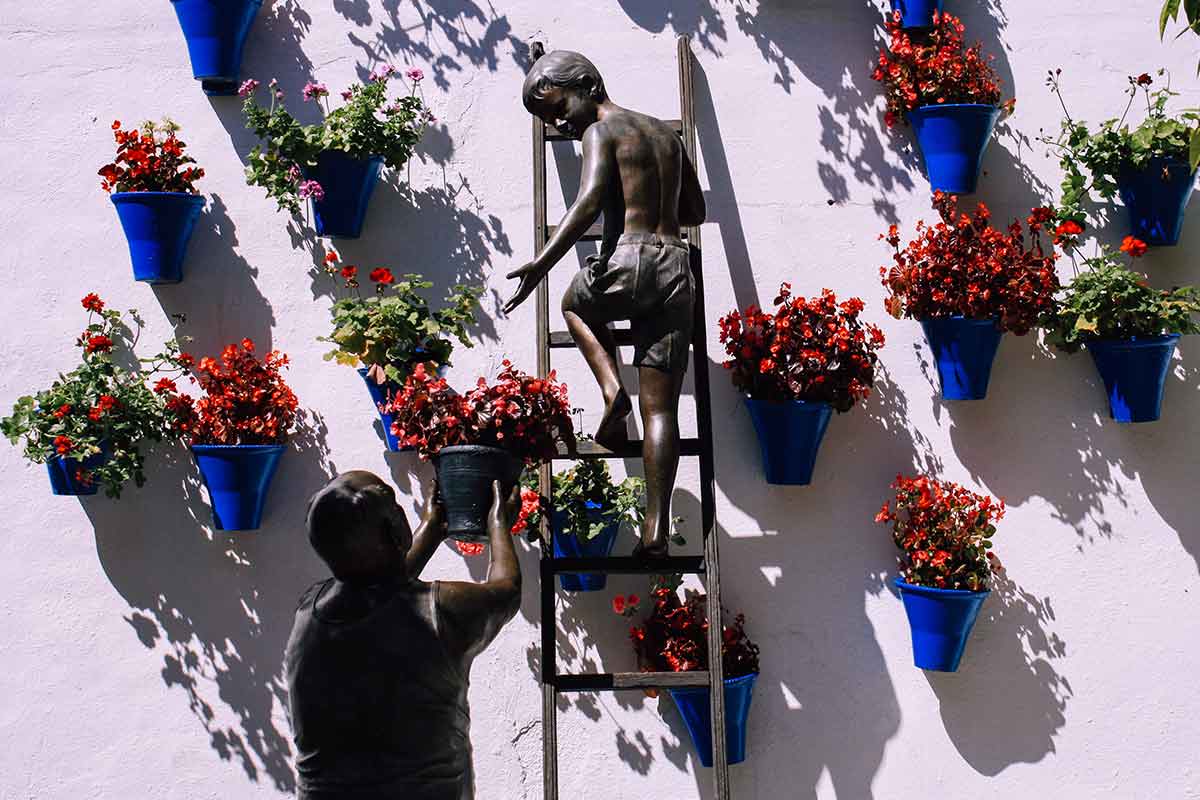
As well as this, the Jewish Historic Quarter is great to wander around with its narrow, mazing streets once thriving as the largest ghetto area of the city.
If you are looking for a place to rest your head, check out La Trinidad Córdoba for a sustainable stay which includes a traditonal breakfast.
Another must-see is the Calahorra Tower which once guarded the city from as early as the 13th century. It also later became a prison and even an all girl’s school, making for an interesting visit when in Córdoba.
The best area to stay in Córdoba has to be Juderia. The Jewish Quarter is great for those who want an authentic feel, and to be surrounded by lots of history, striking architecture, and lively streets.
The capital of the autonomous region of Andalusia, Seville definitely does not disappoint. Known for its searing summer heats and passionate flamenco dancers, this city is a must-visit on any trip to the region.
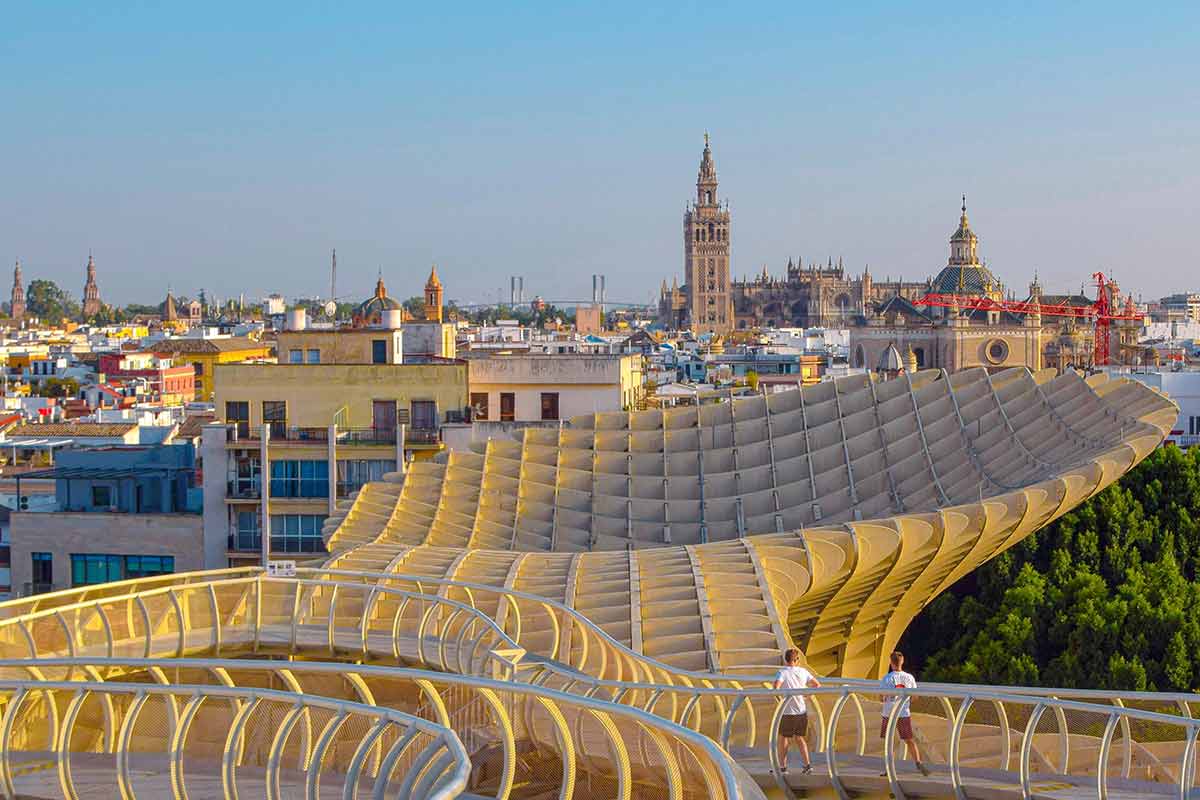
Here there are many top sights to visit. The Cathedral of Seville (along with the Giralda Tower) is one of the top highlights, and with 80 chapels, is the largest cathedral in the World.
It also houses the tomb of Christopher Columbus, and rightfully so is a UNESCO world heritage site. Plaza de España is another must-visit when here, with the massive monument built in 1929.
The curved palace is shaped like a half-moon, and is filled with beautiful azulejos (which are painted tiles native to the region). Check out this guided tour to get a closer look at all these detials.
With its public bicycles and smart city initiatives, Seville is perfect for exploring, with the Guadalquivir river and many plazas great for a stroll.
This is also the best place for seeing a live flamenco show, where spontaneous dances can happen pretty much anywhere at any time.
You can also go to designated venues to watch the dances, which are known as Tablaos .
When in Seville, the best area to base yourself is El Centro , which has most of the popular destinations located nearby. For cheap dorm rooms Black swan hostel is a popular place to stay for budget travelers.
Barrio Santa Cruz is another great area that’s worth visiting and home to Catedral de Santa María de la Sede – the world’s 3rd largest church.
Known as the white city of Spain, Cadiz is an ancient port city located in the south of Spain that is also home to the Spanish Navy.
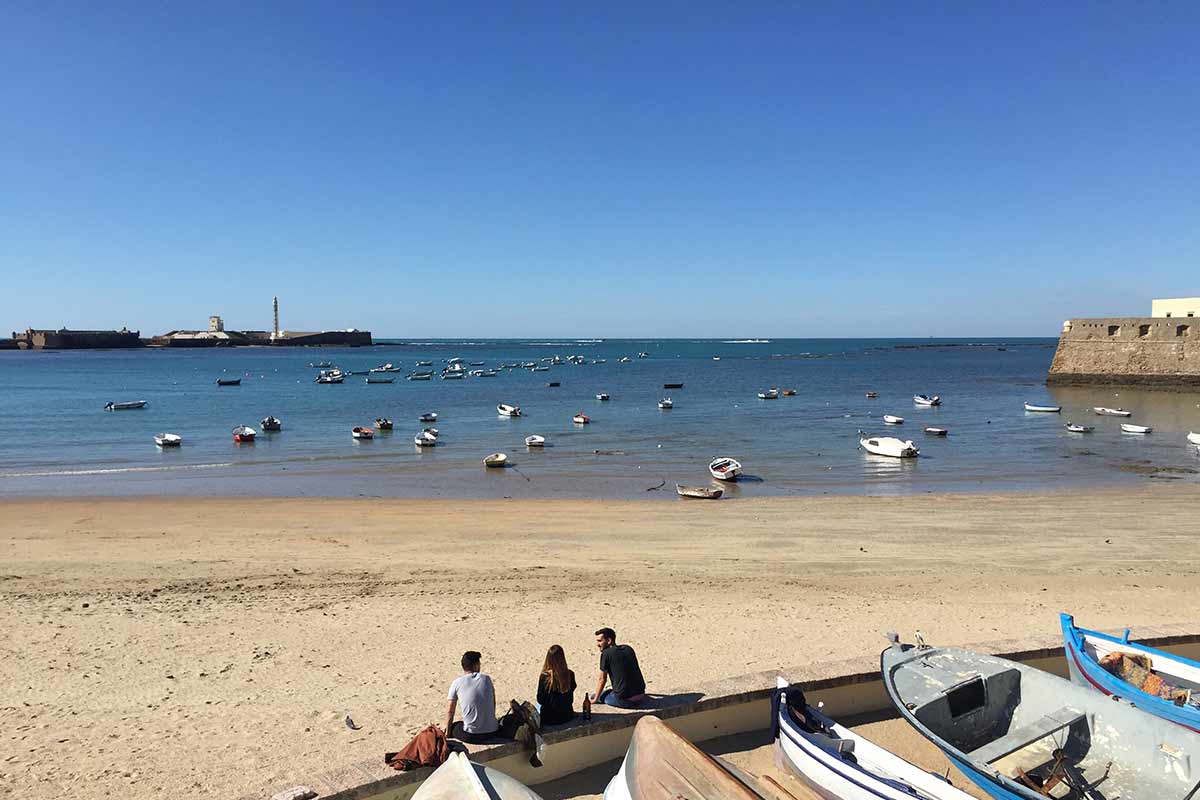
As well as the vast sea of white buildings, this city is known for its equally important architecture. A quick city bike tour reveals all the best facades.
The Torre Tavira is a tower that can be climbed for the best vantage point over the city. Other impressive sights include the cathedral of Cadiz as well as the Castillo de Santa Catalina .
For those who love beach time, then be sure to head to La Caleta (which is the best beach in the city) as well as Las Playas de Caños de Meca .
For those who love fresh seafood and other foods, be sure to head to the Mercado Central where you can try everything from fresh fish and meats to vegetables supplied by local farmers and typical Spanish baked treats.
Cadiz also has many lively plazas and dozens of watchtowers that line the coast, which gives the city a unique presence in Spain and makes it feel very similar to coastal cities in South America such as Cartagena.
When heading to Cadiz, be sure to stay in the Old Town. Not only is it home to the must-visit Torre Tavira; there are also many quaint plazas here such as Plaza San Antonio and Plaza de Mina .
Andalusia Travel Tips

See our list of travel tips to take with you:
- We first recommend taking advantage of public transportation. You can use the train to get between major destinations, running from Malaga in the east to Seville in the west. You can then also use public buses to get to the further afar and smaller towns.
- Secondly, consider visiting during some of Andalusia’s festivals. This region is known for some extraordinary events such as the Cruces de Mayo (held in early May) and the Feria de Seville (in April).
- If you decide to rent a car in Andalusia you’ll find it easier to travel outside of these bigger cities and more frequented tourist areas.
- A visit during these times promises a rich cultural experience and a better look into the values and heritage of the Andalusian people.
- The cities suggested and landmarks we have suggested above are designed for you to see some of the regions most popular places!
- Remember to get your FREE travel insurance quote from SafetyWing to receive fully comprehensive support when it comes to unforeseen travel complications.
- If you are traveling alone, be sure to ‘always’ carry your cell phone along with you, if you have one that is. Even if you are just popping out of your hotel to go to the shops.
- Try to carry cash and items of value with you at all time in a front or inside pocket, you’ll find Pacsafe make some great bags/backpacks for traveling around with valuables.
Best Time to Visit Andalusia
Andalusia is known for its hot summers, where temps can often become unbearable at times. During the summer, it’s not unusual for daytime temps to exceed 104°F, especially in the cities of Granada and Seville.
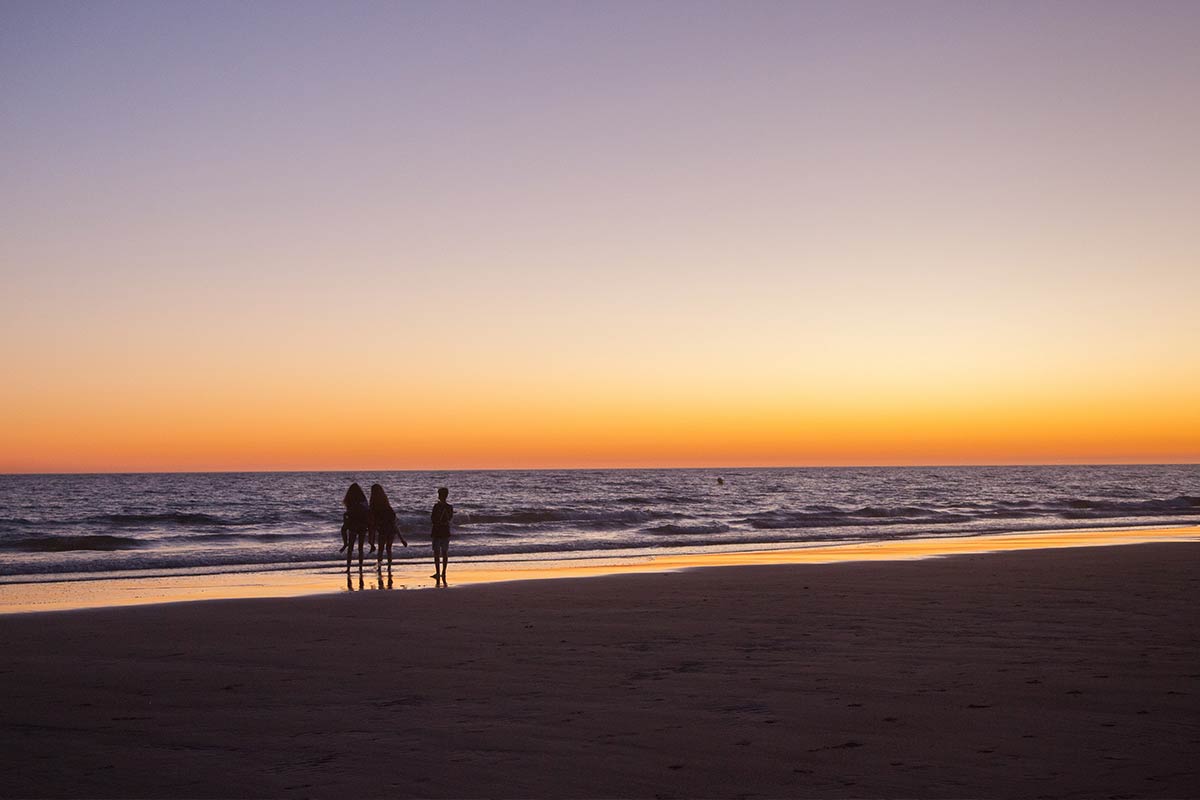
As mentioned earlier, the best time to visit for warm temperatures and a stable climate is the shoulder months of April-May / September-October.
For example in Seville, these months have average daily temps of between 64-75°F. The nights are cool and bearable compared to the hot nights during the summer.
During the summer, average temps in Seville range from 84-90°F. Whilst this sounds nice and warm, due to the city being located far inland, temperatures often feel hotter than they show.
If going in the height of the summer season, be prepared that temps can and do often rise above 104°F. So make sure you take lots of sunscreens and avoid heading out in the sun during midday.
The winter months are also popular with those traveling during the Christmas break, although a lot less visited than during the summer.
Average temps in Seville range from 52-59°F, which is a lot cooler and even sometimes chilly.
7 days in Andalusia Itinerary
As well as things to do you should have an idea of which places are integral to include in your Andalusia itinerary.
Is this all you can do in the region? Absolutely not!
There’s much more to see in the region and we guarantee that Andalusia will surprise you and make you want to revisit time and time again.
Andalusia is full of hidden gems, with everything from quaint mountain top villages, palaces, castles, and rustic shops to cafès and beaches.
Get lost exploring and get acquainted with the Andalusian culture.
Also, be sure to follow some of our sustainable travel tips to ensure that your trip has a positive impact on the local environment.
This post contains affiliate links, meaning, if you click through and make a purchase or sign up for a program, we may earn a commission. This is at no additional cost to you.
Sharing is caring!
Recent Posts
- How to get from Treviso Airport to Venice
- How to get from Verona to Lake Garda
- Marco Polo Airport to Venice
- Is Guadalajara safe?
- Living Abroad
- Sustainability
- Travel Blog
Privacy Overview
- Relationships
Culture & Lifestyle
The Best of Amaliah Straight to Your Inbox
Andalusia guide: what to see, eat and do and where to stay in southern spain.
by Heena C in Culture & Lifestyle on 11th November, 2022
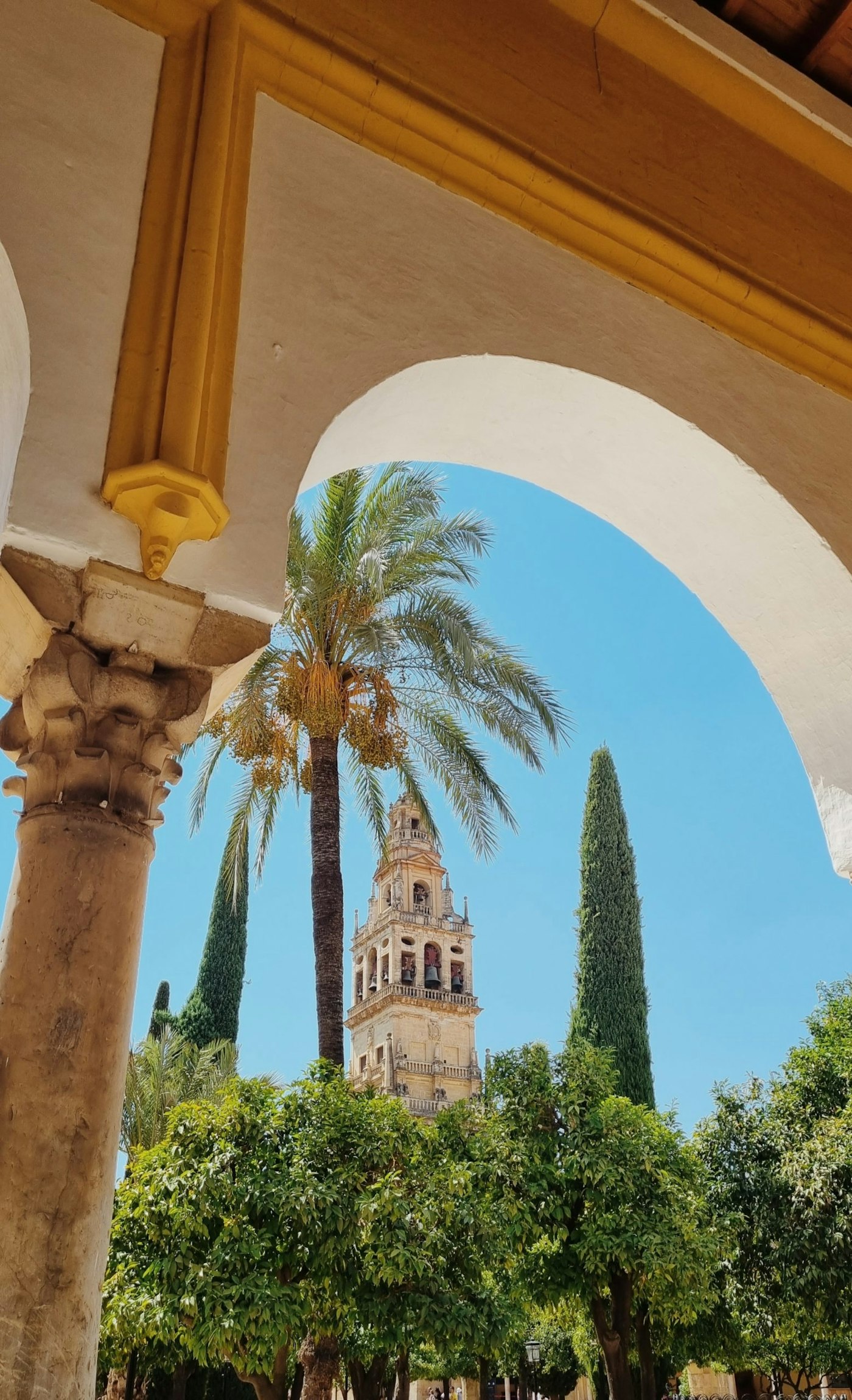
Processed with VSCO with m5 preset
Spain is our favourite holiday haunt as a young family. Before COVID lockdown we would go yearly as my eldest was under 3. This year we finally got away and as it was the first time with my youngest (being 6) and my eldest now 9 the Spanish experience was totally different. Our favourite spot to holiday is in Al-Andalus, an area in the south of Spain that was ruled by the Umayyads from 711CE till the early 11th Century. They left behind their architectural mark, flora and fauna, as well as their agricultural advances and techniques. The Andalusian part of Spain encompasses so much antiquity and culture that captures your imagination on how things once were and I’ve put together a guide that will hopefully entice you to visit and make your experience an unforgettable one!
Accommodation
Al-Andalus is a hot spot for holiday makers, so along the coast you can find an array of hotels, resorts and Airbnbs. We stayed in Torremolinos and rented a 2-bed, ground floor apartment through Airbnb that had a communal swimming pool and private courtyard with views of the mountains.

Getting Around Andalusia
Travelling between areas as well as within the same town is very accessible. There are taxi ranks at certain points that are not expensive and are happy to do 5 – 10-minute drops as well as trains that are easy to use and are air-conditioned, perfect for when travelling in the hotter months. They can take you from town to city within no time. However, be aware that not all stations are user-friendly and need updating though this is something that we noticed is being actively worked on from our visits. For longer journeys like our trip to Cordoba – you can become adventurous and hire a car for the day and take a drive up the mountains to cities further afield. Boats/small ferries are also a great form of transport. You can catch one from the port of Benalmadena that will take you to Fuengirola in an hour along the coast – a great additional experience.
Where to Eat in Andalusia
When it comes to food, each area has its own traditional style and cuisine.
Torremolinos being a traditional fishing port has an abundance of seafood with restaurants along the beach that have their catch of the day and the largest prawns you will come across. Over the last few years there has been a rise in restaurants serving Halal dishes on the promenade giving more variety if you end up getting fed up with fish.
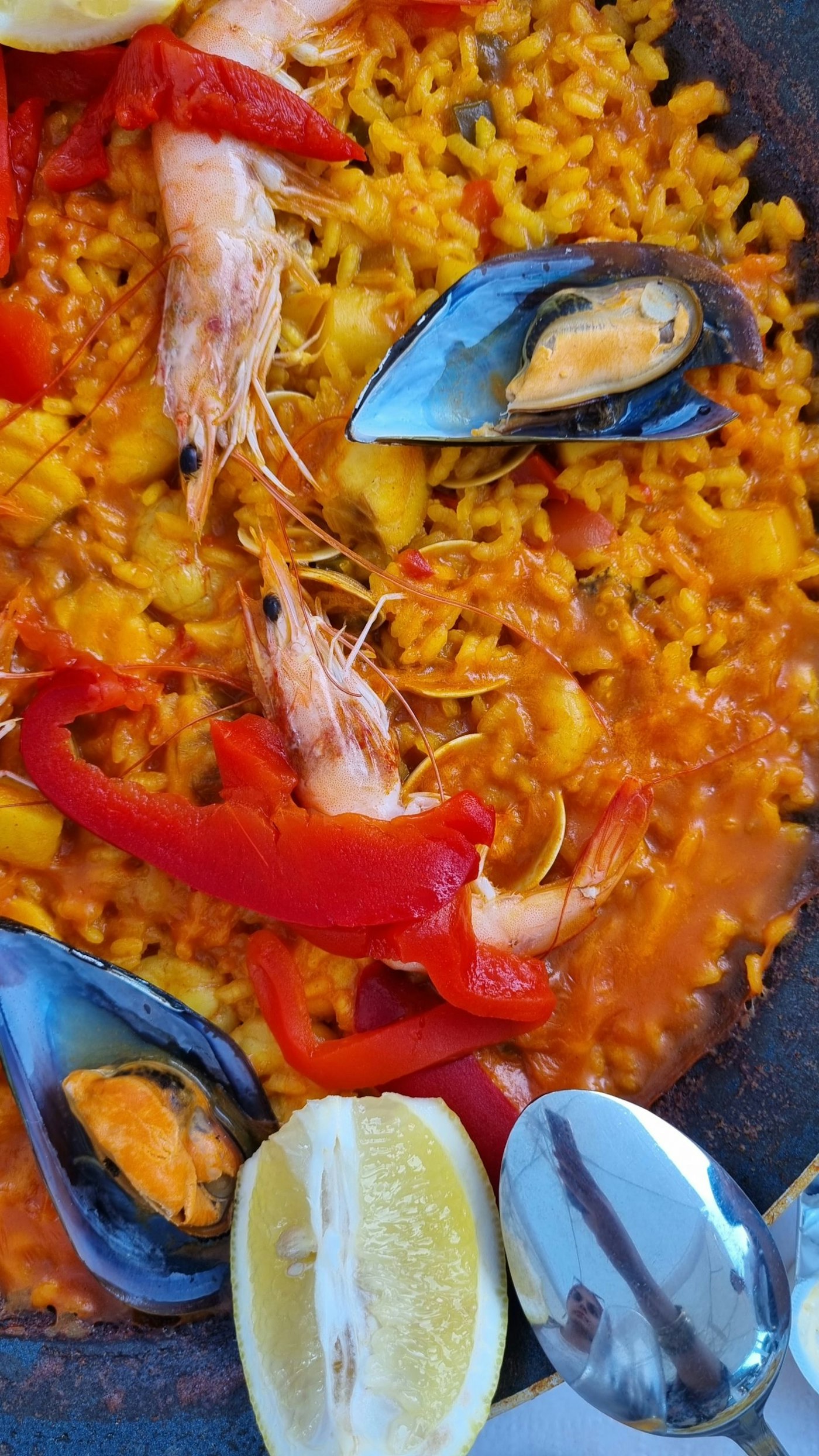
Malaga being a city has your finesse restaurants along the port however you also get those hidden café gems for churros and chocolate as well as your fast-food chains. Al-Turq is one of those fast-food chains you will find dotted around Al-Andalus – even though it may not look amazing from the outside they do one of the best shawarmas you will find.
In Cordoba you will find a mix of restaurants within the tiny city streets. These picturesque restaurants are hidden in the courtyards and converted Andalusian homes. You can find a variety of Moroccan and Lebanese restaurants; two we would recommend would be Pasilli Oriental and Resturante Damasco.
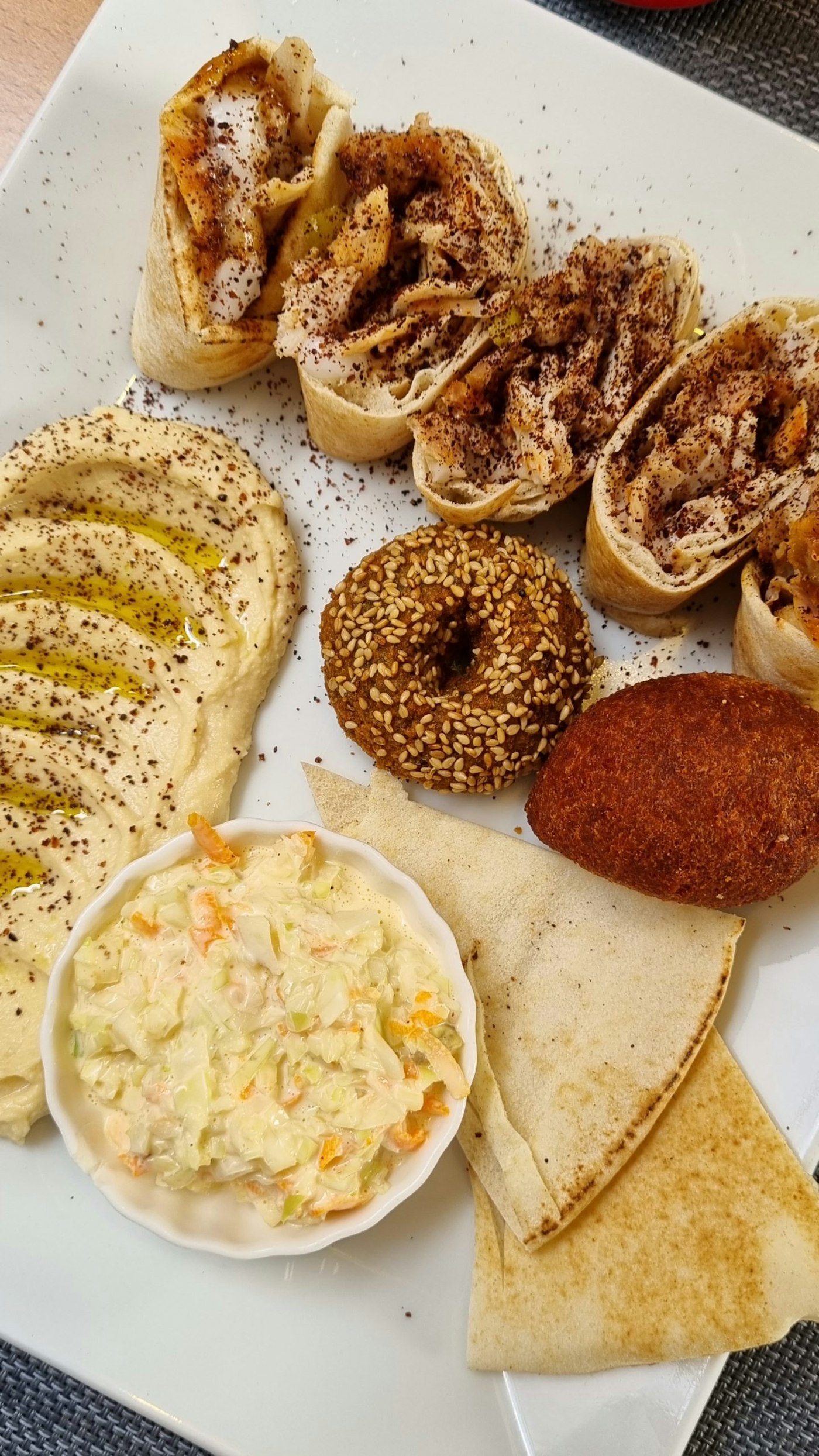
Not forgetting the amazing gelato, you can get at every street corner wherever you go – Spain has a wonderful selection of gelato flavours you will not find elsewhere.
Shopping in Andalusia
If you want traditional handmade goods, then Spain is a lovely place to do it. You will of course find the typical tourist shops selling you nick-nacks, however there are some places off the beaten path that are well worth your time.
Torremolinos has a very old ceramics shop on the cliff top along the stairway leading from San Miguel and at the bottom hidden in the cliffside is a leather store that has everything from bags to wallets.
When you head to Malaga you will again find your tourist shops for postcards and magnets but also magical bookshops like Mapas Y Compania. Malaga has high street fashion shops such as Mango or Stradivarius along the Alameda Principal. There are also confectionary shops like Vicens – Artisan Turron and Chocolate est. 1775, as well as a beautiful Berber store called Artista where the items come straight from Morocco and at a fantastic price.
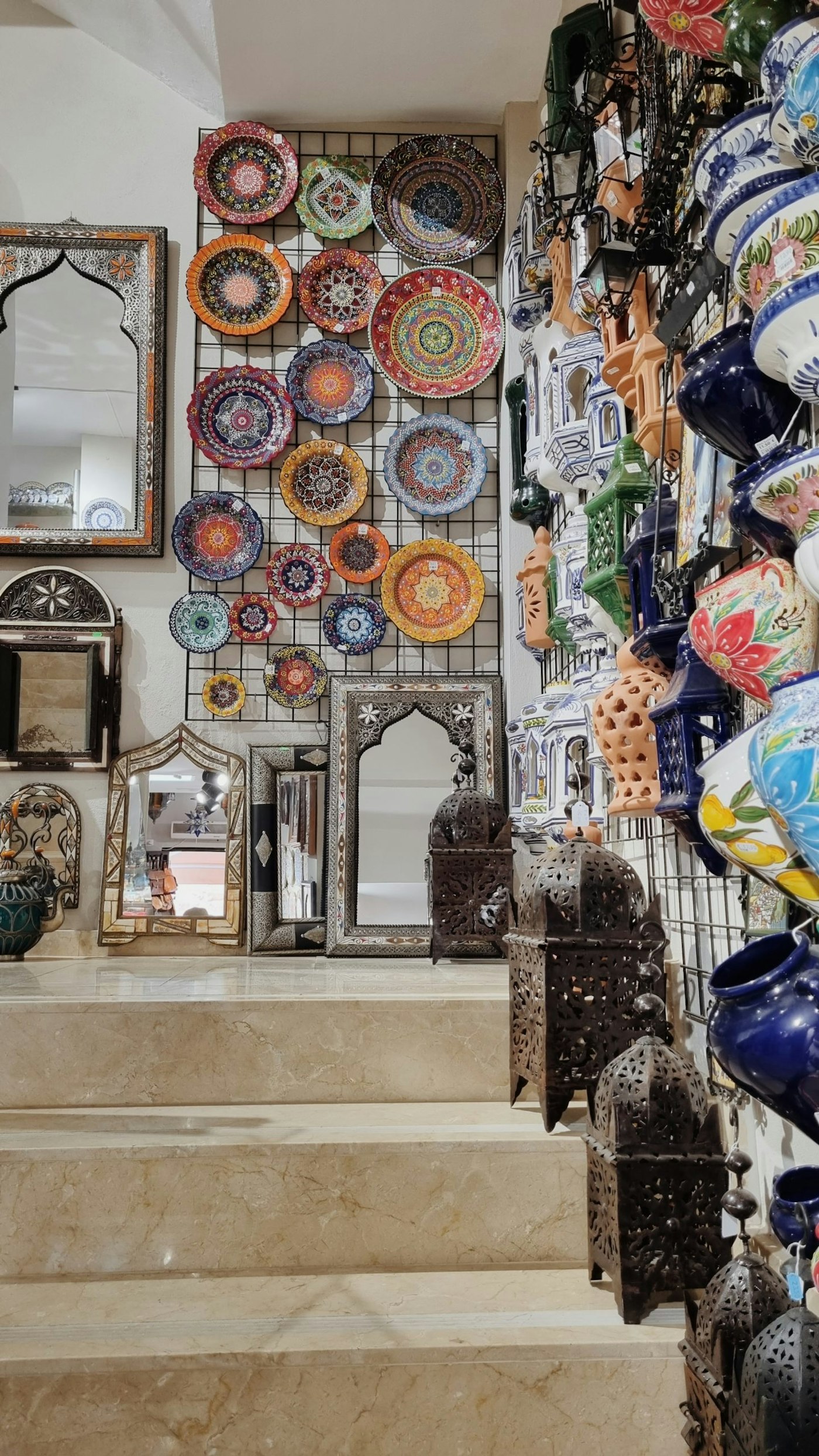
Cordoba as you can imagine has dainty streets filled with shops. A few shops we entered felt like an Aladdin’s cave, filled floor-to-ceiling with beautiful handmade intricate items. Shop around as we found some beautiful pieces here.
If you are more of a designer shopper then there’s something here for you too – Plaza Mayor is a 10-minute drive from Torremolinos where you can shop at all the outlets whilst keeping the kids busy with the in-house entertainment and eating into the night with a variety of restaurants is a win for all.
Places to Visit in Andalusia – Torremolinos, Malaga and Córdoba
With the stretch of the Al-Andalus being steeped in history you will find an abundance of places to visit wherever you go.
Torremolinos
Even though Torremolinos is a tourist town it does have some lovely places to visit once you have done the Aquaparks and Crocodile sanctuary.
- Casa Los Navajas is a clifftop building from 1872. It was renovated a few years back where it was restored to its once beautiful self after years of disuse and negligence. It is now a museum and a place you can get married.
- Another place to spend an afternoon is in the Botanical Gardens – Molino de Inca. This used to be one of the oldest mills used to make flour and the grounds and garden now co-exist as an oasis and bird rescue shelter.

As Malaga is a city along the Andalus there are many different things to do there. Over the years we have visited a few and there is still so much to explore.
- The Catedral de la Encarnacion de Malaga which is a landmark in the centre of Malaga and can be seen from as far as the end of the Port.

- Teatro Romano de Malaga otherwise known as the Roman Amphitheatre is situated behind the Cathedral at the foot of the Alcazaba hill. This theatre was formed as the basis of creating a social space for the Romans and was only rediscovered in 1951.
- Gibrafaro is a castle situated on the other side of the Alcazaba. This was used as part of the defence during the reign of the Muslim empire and housed a Mosque, quarters and supply storage.
- Malaga Park is a nice surprise as you wonder through the city. An urban botanical garden that houses a variety of vegetation. This area has over time been improved with the addition of a play park for children as well as a small amphitheatre.
- The Alcazaba is a fortress built during the Muslim-ruled era and is one of the best preserved Alcazabas in Spain. Sitting atop a tall mountainside capturing the most scenic of views across the horizon.
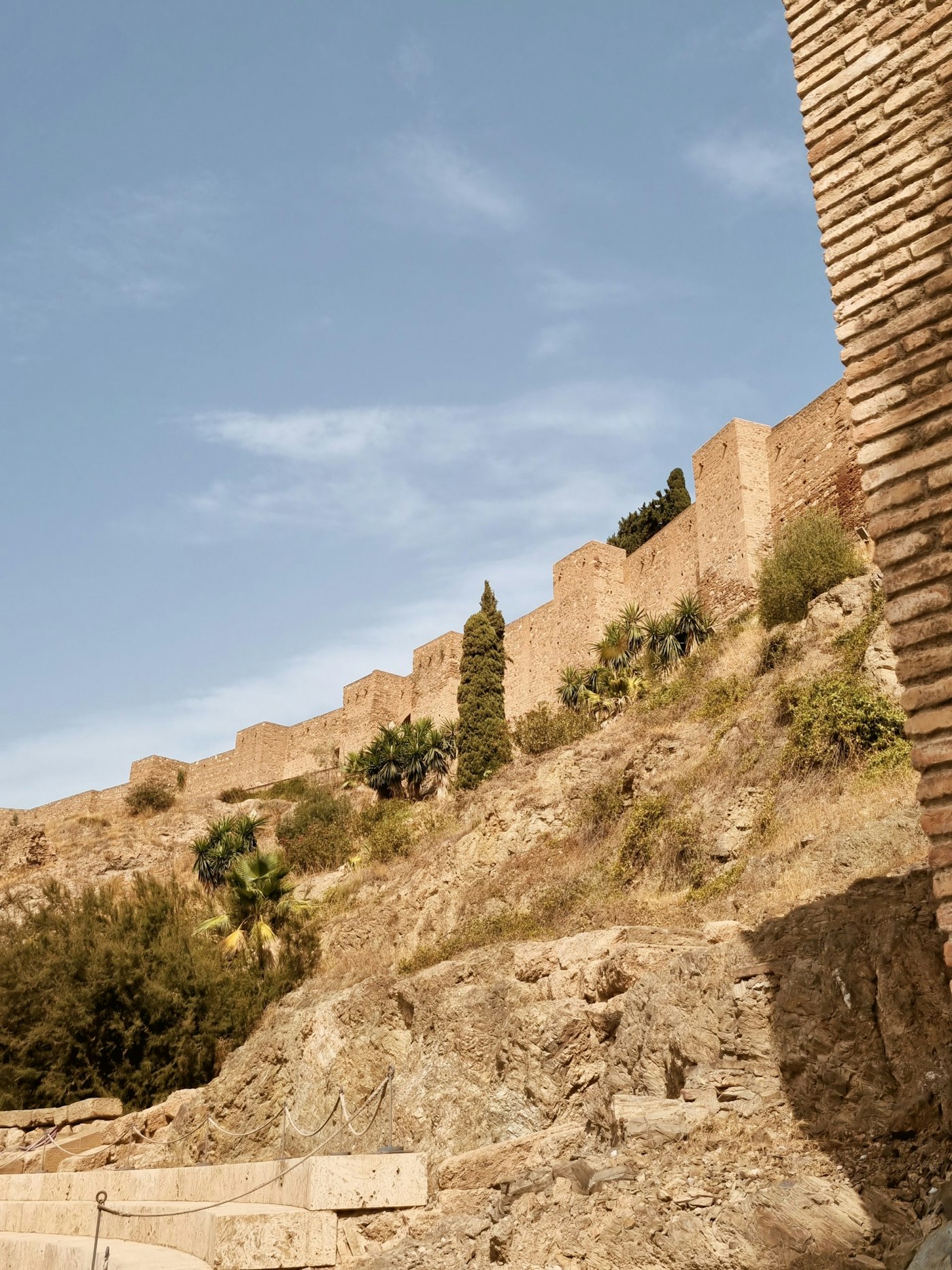
- Interactive Music Museum is hidden away in the backstreets of Malaga, walking distance from the Plaza de la Constitucion. A full family experience, this museum takes you through the history of music and musical instruments with information zones and interactive ones.
- Hammam Al Andalus is one of the best spas I have come across. Split over two floors and hidden in the streets behind the main plaza the moment you enter this building you are transported into the past – a riad of sorts with dedications of a palace. For approximately €50 for 45minutes you get a massage, mint tea and use of the various pools and heat rooms – a perfect break in your day.
- The Port of Malaga stretch takes you along the harbour all the way to the lighthouse. You can visit the many installations such as the Centre Pompidou Malaga as well as the stretch of shops – high street, designer and handmade stalls.
Cordoba is an important site for the Romans as well as a major Islamic city during the Middle Ages. This walled city encompasses many historical places you can visit.
- The Great Mosque – Cathedral of Cordoba is an architectural success. From the moment you walk into the vast courtyard you know you are stepping into an important part of the past. First built in 785CE, this building is a preserved part of Islamic history with the addition of the now Cathedral you get the mix of both religions and a sense of peace on how they have been merged into one structure.
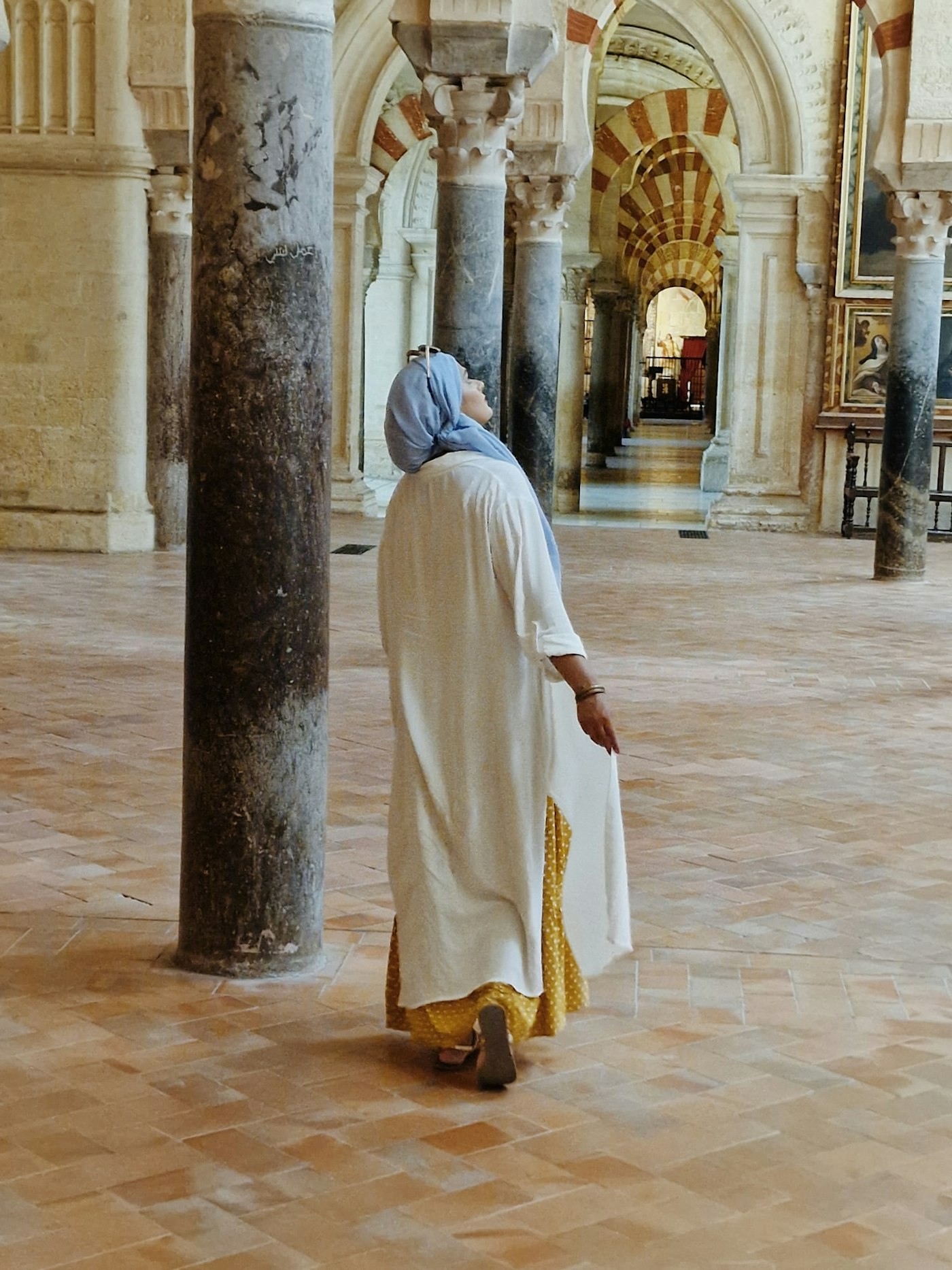
- The Roman Bridge is in the centre of Cordoba and stretches across the Guadalquivir River. It was first built in the early 1 st Century BC and later reconstructed by the Arabs in the 8 th Century. As you step across it you feel the sense of importance this bridge gives to the city.
- Alcazar of the Christian Monarchs is the former primary residence of Isabella I and Castile and Ferdinand II of Aragon. Built in 1328 on the site of previous fortresses this alcazar features magnificent gardens and courtyards taken from the inspiration of the Arabs.
Al-Andalus is a wonderful stretch of land that was a primal piece in history and today’s civilizations. It’s a gem of the Mediterranean and its past proves exactly that. Today we can go and enjoy it as a family or as individuals whilst we relax on the beach or explore its hidden treasures from the past.
If she isn't working on her online crafting business, then Heena is busy reading and reviewing or working on her writing; now drafting out her first book and poetry based on life. Heena is an advocate for women’s rights, and the rights of the oppressed. She helps to create awareness online and through teaching the next generation about what they can do to change the world and future. Her love is to travel the globe and immerse herself in different cultures, history and learn more about herself and Islam through architecture and lives lived before her. She has a keen interest in finding out about the past as well as her family history especially tracing back where her origins come from. IG: @heena.ck
Read more like this
Revisiting islamic education before colonialism.
By Iqra Babar
What Is Happening in Sudan? A Resource and Guide
By Amaliah Team
Palestine: Have Words Failed Us?
By Mariya bint Rehan
© Copyright 2023, Amaliah
Travel | September/October 2023
From Fabled Palaces to Ancient Medinas, a Journey Through Spain’s Islamic History
Amid snowcapped mountains, sandy dunes, a wild seacoast and more, the legacy of the country’s Moorish past can still be explored across the peninsula
:focal(2163x1751:2164x1752)/https://tf-cmsv2-smithsonianmag-media.s3.amazonaws.com/filer_public/a3/2b/a32b733f-d864-4e1e-a976-4a4920aa051f/septoct2023_n10_almeriaspain.jpg)
By Tony Perrottet
Photographs by Charlotte Yonga
It was well before dawn when I set off on foot through Granada’s oldest neighborhood, El Albaicín, an intricate brocade of cobbled streets overhung with fragrant jasmine trees. The first glow of sunlight revealed the titanic walls and turrets of the palace-fortress complex called the Alhambra looming above me on a spectacular crag. Poets have rhapsodized about the structure’s fairytale beauty since the finest craftsmen of the Arab world built it nearly 800 years ago. For over two centuries in the Middle Ages, it was the crown jewel of the Emirate of Granada, which stretched across Spain’s Mediterranean coast from modern-day Gibraltar past the snowcapped Sierra Nevada.
After crossing a stone bridge over the River Darro, I took a little-known back route into the palace called Cuesta del Rey Chico, a steep foot trail squeezed into a leafy ravine where the only sound was the water cascading from antique terra-cotta pipes. By now, the morning sunlight was making the Alhambra live up to its original name, al-Qal’ah al-Hamra , “the red fort.” An ornate archway led into the complex itself, an array of palaces and gardens covering 35 acres. The most famous site is the Nasrid Palace, named after the ruling dynasty. On my first visit, I had hardly known where to rest my eyes as I wandered its gorgeous chambers adorned with latticework and geometric patterns, its elegantly proportioned courtyards with burbling fountains, and the surrounding rose and orange gardens. Its interior walls are covered floor to ceiling with carved script in classical Arabic, which scholars have translated as praise for Allah, snippets of poetry and celebrations of the Nasrid rulers.
But on this morning’s visit, I was heading for a more mysterious world: the Alhambra’s secret network of underground tunnels and chambers.
/https://tf-cmsv2-smithsonianmag-media.s3.amazonaws.com/filer_public/f2/ba/f2bafd8e-2710-4b8c-9b1c-a53d2bf20ce9/septoct2023_n17_almeriaspain.jpg)
Subscribe to Smithsonian magazine now for just $19.99
This article is a selection from the September/October 2023 issue of Smithsonian magazine
At least, that was my hope. The Alhambra is the most popular attraction in Spain, drawing over two million visitors annually. It’s also one of the most strictly controlled thanks to its status as an Islamic outpost seized by Christians, which still has political overtones more than five centuries later. Gaining permission to visit its off-limits subterranean sections had been challenging. After emailing palace officials for weeks without response, I had already arrived in Granada when they bluntly denied my request. But then, suddenly, they reversed track. I received an urgent phone call: I had been approved to visit at 9 the next morning.
/https://tf-cmsv2-smithsonianmag-media.s3.amazonaws.com/filer_public/52/5f/525f6b0c-9bb1-4f0a-a42f-9d6bca2d5697/septoct2023_n02_almeriaspain.jpg)
After reporting at a special office to fill out a string of forms, I cooled my heels for a half-hour in the company of an affable security guard named Jaime, who was wearing an earpiece, aviator sunglasses and a black blazer with a green “A” sewn onto his lapel. Finally, Ignacio Martín-Lagos, a conservation officer, arrived and declared that he would be my Virgil to the palace’s subterráneo , a dimension of the complex that he said holds a special fascination for him. “The artistic beauty of the Alhambra aboveground is undeniable,” Martín-Lagos said in Spanish as we hopped over a metal barrier and walked along the fortress’s defensive walls. “But the most surprising thing is what lies below. It was really two structures. Only if you explore its subterranean levels can you grasp the palace’s true dimensions and understand how its day-to-day life really functioned.”
After passing a 40-foot drop without guardrails, which was not for the vertiginous, we arrived at the Torre de las Gallinas, or Tower of the Hens, where Martín-Lagos fished from his pocket a thin, six-inch-long master key. “You’re going to pass through the entire palace, but underground,” he said. After shouldering open a portal, he used his smartphone flashlight to guide us down worn stone steps into a labyrinth of tunnels and chambers once used by guards and staff. They were chilly, claustrophobic and, when Martín-Lagos turned off the light, sepulchral. But the underground was once teeming with activity, he said. “The Alhambra was a palace-city. As well as soldiers, it had about a thousand civilian inhabitants to serve the royal family—cooks, bakers, cleaners—who could go back and forth down here, without bothering the sultan. You need to have a double perspective: the ornamental world above versus the practical world below.”
I began to realize that the Alhambra most visitors see, like the Palace of Versailles and the great British manor houses, required an elaborate hidden support system. The upstairs palace offered exquisite luxury, where the sultan lounged on silk pillows and ate slices of oranges and honey cakes. Downstairs was penumbral darkness broken by flickering torches, where the staff toiled unseen to seamlessly maintain the opulence. The security purpose of the tunnels was also crucial, Martín-Lagos added, pointing up at the ceiling. We were under the room where the sultan held his audiences. “Squadrons of soldiers were lined up here, ready to rush upstairs at a moment’s notice.” Nearby was a stairway that had only been discovered after a 1907 landslide, with 200 steps descending to a door hidden in the fortress walls. We then ascended and opened a trapdoor to a bell-shaped chamber with walls of raw stone that had been converted from a grain silo to a dungeon. (Prisoners were lowered 20 feet from the surface by rope, so it was impossible to escape.)
/https://tf-cmsv2-smithsonianmag-media.s3.amazonaws.com/filer_public/49/2c/492c7e02-4ca6-433a-a053-31300bdd58d1/septoct2023_n01_almeriaspain.jpg)
The grand finale was Martín-Lagos’ favorite site. As travelers at an outdoor café in a palace courtyard snapped photographs, he unlocked two panels of a metal trapdoor in the ground and heaved them open, sending up clouds of dust. “Take care!” he said, now pointing a hefty light down a tight spiral staircase. “Take lots of care!” The electric beams cut through the darkness to reveal a vast cistern, including an ancient bucket suspended by a rope and encrusted with skeletal algae. “The major problem of the Alhambra was water,” Martín-Lagos whispered in awe. “Enormous cisterns were needed to supply the palace and its huge staff.” According to Martín-Lagos, the German traveler Hieronymus Münzer saw this cavern in 1494 and declared that it was bigger than the cathedral in his home city. “We all know that the finest engineers in history were the Romans,” he said. “That’s undeniable. But we must acknowledge the technical skill of the Spanish Muslims.”
Travelers have long regarded the Alhambra as the climax of a trip to Andalusia, as the southernmost region of Spain is known. For me, it was only the start. Just as the palace’s underground revealed the Alhambra’s inner workings, I realized that if I wanted to understand the saga of Islamic Spain, I should seek out the more far-flung and forgotten corners of the Nasrid Emirate, beyond its famous official beacon, the city of Granada, where the sultan presided in his version of the mythic Shangri-La. In fact, the Nasrid Kingdom had sprawled across an area that is today covered by four Spanish provinces. One, which extends along the Mediterranean coast, holds a special attraction for travelers: Almería.
/https://tf-cmsv2-smithsonianmag-media.s3.amazonaws.com/filer_public/14/d4/14d46d22-0fda-464c-8f1e-b8d817b39c98/septoct2023_n98_almeriaspain.jpg)
The region’s major port, Almería—which gives the modern province its name—was always of “special importance” within the emirate, says Jesús Bermúdez López, a Granada-based scholar specializing in Islamic Spain. It had been the kingdom’s lifeline to the outside world because of its geographical location, he says, “closer to the ports of the Balearic Islands, the Italian peninsula and the North African coast, with which the Nasrids carried on regular trade.”
For 21st-century travelers, though, the province of Almería has a renewed allure as one of the most spectacular and little-visited corners of Spain. Its hinterland includes the awe-inspiring Tabernas Desert, while the isolated Almería coast has largely escaped the rampant overdevelopment that has scarred much of Spain’s shoreline. Its modern core is the Cabo de Gata-Níjar Natural Park, one of the largest wilderness reserves in Spain and the pride of Spain’s extensive conservation network. Covering some 150 square miles, its coast is lined with beaches beneath headlands crowned by ruined castles, while offshore is one of the country’s most extensive marine preserves.
/https://tf-cmsv2-smithsonianmag-media.s3.amazonaws.com/filer_public/05/ee/05eef09a-b0ff-450b-9e5d-44bf3ddab945/septoct2023_n04_almeriaspain.jpg)
Even so, relatively few international travelers make the pilgrimage to the remote region. I hoped that a journey across the former emirate would also answer a historical question: Does the brilliance of Islamic Spain, which flourished in the medieval era, survive as a living presence or only as a glorious memory?
For centuries, many visitors have declared that all that remained of the medieval Arab culture in Spain were majestic and abandoned ruins. The American writer Washington Irving, who arrived in Andalusia in 1829, dismissed the Moriscos (as the descendants of the Arabs who had converted to Christianity were known) as a vanished people who had been erased from Spanish history. Irving regarded the architectural remains of the Arab world with wonder. “Never was the annihilation of a people more complete than that of the Morisco-Spaniards,” Irving declared. “Where are they?” The Alhambra, like other Islamic-era forts and walls, was an “elegant memento of a brave, intelligent and graceful people, who conquered, ruled, flourished and passed away.”
/https://tf-cmsv2-smithsonianmag-media.s3.amazonaws.com/filer_public/9c/bb/9cbbcebb-9a73-4651-913a-895cd6a03a66/spain_map.jpg)
In recent decades, scholars have taken a more subtle view, pointing out that Spain emerged from its Muslim era very different from the rest of Europe. “The Arab-Islamic culture dominated the Iberian Peninsula for almost eight centuries—practically the entire Middle Ages—and it left a great mark,” says Bermúdez López. “Al-Andalus contributed innumerable advances to humanity, in the fields of agronomy, architecture, science, philosophy, and it still remains in all aspects of Spanish daily life in food, language, topographical names.” Its influence reached far beyond the borders of Spain, enriching both northern Europe and the Arab-Islamic world stretching for thousands of miles across North Africa to Arabia. In short, Islamic Spain was a cultural conduit that shaped our modern world.
This extraordinary chapter of European history began in A.D. 711 when the armies of the Umayyad Caliphate crossed by sea from North Africa into southern Spain, which was then ruled by Christian Visigoths. The Umayyads soon conquered most of the Iberian Peninsula, which became known in the Islamic world as al-Andalus. (Christians called its inhabitants “Moors.”)
/https://tf-cmsv2-smithsonianmag-media.s3.amazonaws.com/filer_public/1c/93/1c93ff11-5e8b-4a2f-be09-ae3e96a5d8a0/septoct2023_n99_almeriaspain.jpg)
The Umayyad Caliphate ruled from the city of Córdoba for a century, turning Spain into a thriving center of art, literature and science, a florescence that continued when the peninsula was split into separate Muslim kingdoms after 1031. Its libraries contained rare copies of works by ancient Greek authors such as Aristotle, as well as Arab texts on astronomy, science and mathematics, all of which were read by scholars who made arduous trips from northern lands. The Hispano-Arab era was also known for its relative religious tolerance: Muslims, Jews and Christians lived side by side. But the caliphate fragmented around the year 1100, leaving a patchwork of Islamic kingdoms that one by one succumbed to Christian armies in a Spanish version of the Crusades later dubbed La Reconquista, “The Reconquest.”
From 1238, the Nasrid Emirate of Granada managed to hold out against the onslaught thanks to the diplomatic acuity of a leader named Ibn al-Ahmar of the Nasr family, who secured his kingdom’s independence by helping a Christian army. As a result, the glories of al-Andalus survived in this last corner of Spain for another 250 years. At the emirate’s cultural height in the 1300s, the capital of Granada was beautified by the Arabs’ advanced hydraulic engineering, filled with fountains, pools and gardens. It also boasted one of Spain’s first universities, the madrasa of Granada, and one of the country’s first hospitals, the Maristan. Along the southern coastline, in today’s province of Almería, valleys were irrigated to grow gustatory marvels unknown in the rest of Europe, like lemons, chickpeas, watermelon, oranges, eggplants and saffron. Münzer reported Almería to be an earthly paradise.
The Nasrid Emirate’s independence could not endure, as Europe in the 15th century became more religiously intolerant. Christian armies began to march on the Islamic kingdom in the 1480s, and in 1489 the port of Almería was ceded by its governor. Soon after, on January 2, 1492, the emirate’s capital city, Granada, surrendered without a cannon fired to the so-called Catholic Monarchs, Isabella I of Castile and Ferdinand II of Aragon, ending the emirate’s 275 years of independence and the near-800-year saga of al-Andalus. The power couple personally took possession of the Alhambra, taking the keys from the last Nasrid king, Muhammad XII (also known as Boabdil). In deference to the emirate’s traditions, they wore Arab robes at the ceremony and personally signed guarantees of religious freedom for all of Boabdil’s Muslim subjects.
/https://tf-cmsv2-smithsonianmag-media.s3.amazonaws.com/filer_public/b9/9f/b99f02ac-74a3-49b8-b6db-39c16ff47e96/span_king_queen.jpg)
And yet, after the Reconquest, the once-wealthy region fell into decay. By the early 19th century, it had become so wild and impoverished that Washington Irving was forced to trudge its grueling mountain roads in a mule team convoy with armed guards to protect from highwaymen. (Although the Alhambra complex was in ruin, Irving spent several months living there, listening to the songs of nightingales and the tinkling of fountains while penning his travel memoir Tales of the Alhambra , which became an instant best seller when it was released in 1832.) By contrast, I zigzagged the 100 miles from Granada to Almería in a few short hours on a comfortable local train. Rural Spain is known for its wild landscapes: In fact, Irving had felt the need to warn American grand tourists that in contrast to “voluptuous Italy,” Spain is “a stern, melancholy country, with rugged mountains and long sweeping plains, destitute of trees, and indescribably silent and lonesome.”
/https://tf-cmsv2-smithsonianmag-media.s3.amazonaws.com/filer_public/6a/e7/6ae7d464-2837-4db4-8526-1bb9961c8c0e/septoct2023_n16_almeriaspain.jpg)
My introduction to Almería, the Tabernas Desert, is the closest thing Europe has to a “pure” or genuine desert. I gazed out the train window at a parched expanse carved with bluffs and gorges. Littered at random were poignant signs of failed habitation: ghost towns, abandoned farms and ruined rail platforms. When my own train stopped, no passengers got on or off. If not for the remains of what I thought was a Roman aqueduct bleached by the sun, I might have been in backcountry Utah.
I was hardly the first to notice the resemblance. In the 1960s, this starkly beautiful landscape doubled for the American West in director Sergio Leone’s beloved spaghetti westerns, including the Clint Eastwood classics The Good, the Bad and the Ugly and A Fistful of Dollars . The cinematic love affair has extended to the rest of the province of Almería, too. Its spectacular wastes have doubled for Egypt (in Cleopatra ), Jordan (David Lean’s Lawrence of Arabia ), the Republic of Hatay ( Indiana Jones and the Last Crusade ) and Tunisia ( Patton ). It also featured in the “Game of Thrones” franchise.
“I know of no other location that has been transformed more vigorously into other places,” writes the Spanish film director Manuel Martín Cuenca in the catalog of an exhibition on cinema in Almería. “A location that, endowed with a chameleon skin, has been disguised so often and with such good fortune, fooling viewers around the world.”
/https://tf-cmsv2-smithsonianmag-media.s3.amazonaws.com/filer_public/45/a2/45a2bf7b-8146-4150-ae2f-2886e7b7973f/septoct2023_n15_almeriaspain.jpg)
The remote setting has also seen its share of violence. In 1568, more than seven decades after the Reconquest, the Muslims of Almería joined the so-called Rebellion of the Alpujarras against Christian domination in Spain, creating an outlaw Islamic enclave that held out until it was crushed in 1571. Some 350 years later, Federico García Lorca’s classic 1932 play Blood Wedding was based on a real “honor killing” in 1928, when a young couple eloped from a farmhouse called El Cortijo del Fraile in southern Almería but were caught by the family of the girl’s jilted fiancé. The boy was gunned down. Lorca himself would face an equally savage fate four years later, at the start of the Spanish Civil War in 1936, when Nationalist troops led by General Francisco Franco rebelled against the democratically elected Republican government; the writer was dragged from a friend’s house in Granada by Nationalist soldiers and executed. His body has never been found.
Soon after, a mass escape of Republican civilian refugees on the desert highway from Málaga to Almería was strafed remorselessly by Franco’s Nazi-supplied planes, leaving at least 3,000 dead. The city of Almería then became “a vast encampment,” in the words of Canadian doctor Norman Bethune, a humanitarian crisis documented by the Hungarian American photographer Robert Capa. Despite daily bombing by Franco’s air force, Almería was one of the most resilient holdouts in Republican Spain and among the last cities to surrender in 1939. It managed to endure in part because its feisty citizen-militias had dug three miles of tunnels so the entire population of 37,000 could shelter from the air raids.
/https://tf-cmsv2-smithsonianmag-media.s3.amazonaws.com/filer_public/80/5b/805ba0f7-aa55-4551-8fee-16fb7d1d83ab/septoct2023_n05_almeriaspain.jpg)
Today Almería is a sleepy provincial port surrounded by mountains that travelers often pass through quickly en route to the beaches that scallop the coast. But a little digging tells a richer story. Almería is only a short jump to North Africa—the Moroccan city of Nador 120 miles to the south is linked by daily ferries—and the Islamic past feels surprisingly close. Even Almería’s layout has the sparse geometric elegance of its Arab heritage. In the palm-fringed plaza, I ate plump olives on a rooftop across from the cathedral, which was converted from a tenth-century mosque and still has an original Islamic wall and alcove.
From there, steps ascended into the Medina, or Walled City, dating from the tenth century, a maze of narrow laneways shaded by palm trees. At its summit presides the Alcazaba, an Arab palace-fortress complex that was reinforced in the Nasrid era. Although second in grandeur only to the Alhambra, with 270-degree views of the glittering Mediterranean, it was devoid of visitors, allowing me to laze Washington Irving-style in the shady gardens, lulled by the tinkling of water running through irrigation channels by my feet.
Like the capital Granada, Almería at its height in the 1300s enjoyed urban living standards that were in stark contrast to the squalid, flea-infested world of contemporary cities in northern Europe, such as London. The ancient Romans would have been impressed by Almería’s paved, well-lit streets, fine sanitation and dozens of hammams , or heated baths. Its busy shipyard and rich silk factories funded a thriving cultural life, with the influx of foreign merchants and intellectuals adding a cosmopolitan air.
/https://tf-cmsv2-smithsonianmag-media.s3.amazonaws.com/filer_public/14/01/1401be1b-f298-4cbc-85bb-349e3496f118/septoct2023_n06_almeriaspain.jpg)
East along the coast of Almería, the route is scattered with place names of Arab origins, and at every turn of the highway the spectacular lunar landscape meets the Mediterranean with an explosion of piercing light. In the 1980s, this remote coast became the holdout of yet another quixotic rebel group: Spanish environmentalists, who for decades had been fighting a rear-guard action against real estate developers who had disfigured much of the country’s Mediterranean shore.
Created in 1987, the Cabo de Gata-Níjar Natural Park may look desolate but is far from lifeless, explains Luis Berraquero, an ecologist and mobilization coordinator for Greenpeace Andalusia. “It’s a volcanic, arid landscape, but there is enormous biodiversity in both the vegetation and wildlife,” he says. “It looks like a desert but has many endemic species, particularly wild birds. It’s a paradise for reptiles! Its offshore oceans are an underwater garden for the aquatic plant Posidonia oceanica , which has a unique capacity to filter water. That’s why the sea there is so clear for swimming and so marvelous for diving.”
Over the following week, I sought out the remotest corners of Spain’s remotest park. I had the sense of entering uncharted territory, a rare feeling in European travel today. Back home in Manhattan, I was searching without success in the New York Public Library for a detailed guidebook to this raw coastline when I came across a 1966 volume in the catalog. Produced by a certain B. Martín del Rey, the guidebook was filled with murky black-and-white photographs of solitary beaches, grizzled farmers riding horses along unpaved roads, fishermen repairing their nets, women wearing traditional Andalusian dress. Now that I had arrived in Almería myself, it was pleasant to discover that the sparsely populated coastline looked largely unchanged.
/https://tf-cmsv2-smithsonianmag-media.s3.amazonaws.com/filer_public/5d/1f/5d1fc280-6135-463a-8590-59d6c1d10829/septoct2023_n08_almeriaspain.jpg)
The whole experience took on the prelapsarian air of travel in a bygone age. I had made no hotel bookings in advance. Instead, after meandering the coast, I decided to base myself in a fishing village called Agua Amarga (“Bitter Water”), where I rented a room from an elderly lady and her daughter I met by chance on the street, both of them named Antonia. “The Two Antonias,” as I dubbed them, apologized for the room’s basic decor before showing me its terrace, which had million-dollar views over the Mediterranean.
/https://tf-cmsv2-smithsonianmag-media.s3.amazonaws.com/filer_public/a9/25/a9255d74-c950-4e90-a613-4101e6295c82/septoct2023_n14_almeriaspain.jpg)
Some stretches of the park’s coast were elemental. Although it lies over 200 miles east of the Pillars of Hercules, as ancient sailors called the Strait of Gibraltar, the North Atlantic can feel near. At the exposed Playa de los Genoveses (named for a Genovese war fleet that anchored there for two months in the 12th century), a fierce gale sent waves pounding into the sea cliffs. Other beaches offered calm waters and historical secrets. One called Playa el Playazo de Rodalquilar looked windswept at first, but the Two Antonias had instructed me to hike around the eastern headland, where I discovered a small, protected cove with gentle waters, crowned with a ruined, golden-hued fortress, the Castillo de San Ramón.
I had guessed that the castle was another Arab-era fort, but I later learned that it had been built by Spanish Christians. It was an idyllic point to ponder the cataclysmic upheavals that followed the final capitulation of the Nasrid Emirate in 1492.
That year would prove to be a pivot of world history . In January, Queen Isabella summoned Christopher Columbus to her splendid new palace in Granada and, on April 17, signed a contract funding his three-ship expedition across the Atlantic. (He set sail from Palos de la Frontera, near Seville, on August 3.) By then, the Catholic Monarchs had also reneged on their vow of religious freedom. On March 31, they ordered all Jews who lived in Spain (known as Sephardic Jews) to renounce their faith and convert to Christianity or leave the country within four months. A large percentage of the world’s Jewish population resided in the Iberian Peninsula at the time, and the result was a colossal and traumatic exodus: Around 200,000 Sephardim were forced to gather their belongings overnight and seek refuge across Europe.
/https://tf-cmsv2-smithsonianmag-media.s3.amazonaws.com/filer_public/b3/bf/b3bf9212-51df-45d7-8671-14256a40b2c2/septoct2023_n09_almeriaspain.jpg)
Today, the dramatic human history of this coast is reflected in its Spanish place names: From Agua Amarga, I drove at different times past the Rambla de los Feos (“Promenade of the Ugly Ones”), Venta del Pobre (“The Poor Man’s Hostel”) and along Camino del Cementerio (“Cemetery Road”) to Playa de los Muertos (“The Beach of the Dead”). Perversely, the most dismal appellations indicate the most seductive locations, as if Almerienses use a reverse PR to stop outsiders from finding their hideaways. After I hiked down a cliff, the Beach of the Dead turned out to be a ravishing arc of egg-shaped pebbles caressed by ankle-high waves. A pillar of stone at the beach’s south hid another secret cove with the air of an ancient sanctuary; I half-expected Jason and his Argonauts to arrive in a trireme, or the Cyclops to lumber from a cave.
Spain’s attempts at reconciliation have ranged from symbolic—a 2022 apology to women executed as witches in Catalonia—to acts that have direct contemporary impact, like the exhumation of victims in mass graves from the Spanish Civil War, offering closure to descendants who want their relatives identified and properly reburied. In 2015, there was also an attempt to deal with injustices following the demise of al-Andalus, when the Madrid government apologized for the 1492 Edict of Expulsion aimed at Sephardic Jews and offered Spanish citizenship to their international descendants. (This generous reparations bid had a setback in 2021 when some 3,000 ostensibly eligible candidates from around the world received unexplained rejections; legal cases are ongoing.)
/https://tf-cmsv2-smithsonianmag-media.s3.amazonaws.com/filer_public/00/d8/00d8f2be-ef29-472c-acdf-08de9deed488/septoct2023_n03_almeriaspain.jpg)
The promise of citizenship was not extended to the descendants of Muslims and Moriscos who were expelled in the 16th and 17th centuries, most of whom now live in North Africa. This omission reopened wounds that have barely healed since 1492. Under the reactionary regime of the dictator Franco, who ruled from 1939 to his death in 1975, Islam could not officially be practiced in Spain either in public or private—a situation that changed only in 1989. Since then, Islam has flourished. Today, there are some 2,000 mosques and 2.5 million Muslims, many converted native-born Spaniards.
Tourism is also helping the return of Arab culture. In 1998, the Hammam al-Andalus became the first Arab-style bathhouse to open in Granada in over 500 years, built on the foundations of a 13th-century hammam closed after the Reconquest. Guests drift through ornate steam rooms and candlelit hot pools, then are massaged with fragrant oils (a choice of rose, pomegranate, lavender or red amber). And Arab cuisine is enjoying a resurgence. On the last day of my trip, I returned to Almería port and stopped at a lushly colorful North African restaurant called Tetería Almedina, with tables set up in a lane beneath the vines where hummus, couscous and spiced vegetables were served. The owners were recent arrivals from Morocco who spoke to each other in French, part of the new wave of Arab immigrants who have made the return journey to Spain since the 1980s.
/https://tf-cmsv2-smithsonianmag-media.s3.amazonaws.com/filer_public/da/bd/dabd30d4-b67c-46d5-87c9-0f1114b38b21/septoct2023_n12_almeriaspain.jpg)
On a deeper level, Arab cuisine never left the peninsula: The influence of al-Andalus permeates every Spanish kitchen today in recipes and ingredients. Even paella, effectively the national dish, would not exist without Arab-introduced rice. But the complexity of the historical exchange is suggested by the ostentatious display of pork products in Spain. In Almería and beyond, almost all traditional Spanish restaurants are decorated with sides of ham dangling from the walls like enormous oily fruit. The practice dates to the 15th and 16th centuries, when converted Jews and Muslims wanted to prove to their neighbors—and agents of the Inquisition—that they were “good Christians” by displaying a product forbidden in their own religions. The writer Julio Camba argues that this is why Spain remains so pork-centric: “Spanish cooking overflows with garlic and religious prejudices.”
Not all native-born Spaniards have welcomed the return of Arab culture. The word moro , “Moor,” is still used as an insult. Meanwhile, many North African immigrants regard the centuries of Arab rule wryly. When I asked one Moroccan-born restaurateur why he had moved to Granada, he replied: “I am here to take back the Alhambra!” When Spain and Morocco faced off in World Cup soccer in Qatar last year, social media abounded with jokes: “The winner gets al-Andalus.”
/https://tf-cmsv2-smithsonianmag-media.s3.amazonaws.com/filer_public/59/82/59823d95-d717-4008-b2cc-25e235492644/028001616-28-vk.jpg)
The Granada-based scholar Jesús Bermúdez López argues that the waves of humanity passing between Spain and North Africa since the 700s are a key element of Europe’s historical wealth. “In our contemporary society, the past should be seen as something enriching, not a source of division or bitterness,” he told me in an interview. The medieval Arab legacy should be celebrated: “Not all current countries are lucky enough to be able to boast the contribution of so many cultures and civilizations through history as Spain.”
Get the latest Travel & Culture stories in your inbox.
/https://tf-cmsv2-smithsonianmag-media.s3.amazonaws.com/accounts/headshot/tony.png)
Tony Perrottet | READ MORE
Tony Perrottet is a contributing writer for Smithsonian magazine, a regular contributor to the New York Times and WSJ Magazine , and the author of six books including ¡Cuba Libre!: Che, Fidel and the Improbable Revolution that Changed World History , The Naked Olympics: The True Story of the Ancient Games and Napoleon's Privates: 2500 Years of History Unzipped . Follow him on Instagram @TonyPerrottet .
Charlotte Yonga | READ MORE
Charlotte Yonga is a photographer based in Paris and Barcelona.
Andalusia Travel Guide
Book your individual trip , stress-free with local travel experts
- roughguides.com
- Travel guide
- Itineraries
- Local Experts
- Travel Advice
- Accommodation
The popular image of Spain as a land of bullfights, flamenco, sherry and ruined castles derives from Andalucía (Andalusia), the southernmost territory and the most quintessentially Spanish part of the Iberian Peninsula. Above all, it’s the great Moorish monuments that compete for your attention here. The Moors, a mixed race of Berbers and Arabs who crossed into Spain from Morocco and North Africa, occupied al-Andalus for over seven centuries. Their first forces landed at Tarifa in 710 AD, and within four years they had conquered virtually the entire country; their last kingdom, Granada , fell to the Christian Reconquest in 1492. Between these dates, they developed the most sophisticated civilization of the Middle Ages, centred in turn on the three major cities of Córdoba , Seville and Granada .
Andalucia’s fiestas
Andalucía’s cuisine, garganta del chorro, antequera and around, parque natural de el torcal, the costa del sol resorts, towards cádiz and seville, the sierra morena, el puerto de santa maría, sanlúcar de barrameda, seville to córdoba, las alpujarras.
Book tickets and tours in Córdoba
Each one preserves extraordinarily brilliant and beautiful monuments, of which the most perfect is Granada’s Alhambra palace, arguably the most sensual building in all of Europe. Seville , not to be outdone, has a fabulously ornamented Alcázar and the grandest of all Gothic cathedrals. Today, Andalucía’s capital and seat of the region’s autonomous parliament is a vibrant contemporary metropolis that’s impossible to resist. Córdoba’s exquisite Mezquita, the grandest and most beautiful mosque constructed by the Moors, is a landmark building in world architecture and not to be missed.
Book things to do in Granada
These three cities have, of course, become major tourist destinations, but it’s also worth leaving the tourist trail and visiting some of the smaller inland towns of Andalucía. Renaissance towns such as Úbeda, Baeza and Osuna, Moorish Carmona and the stark white hill-towns around Ronda are all easily accessible by local buses. Travelling for some time here, you’ll get a feel for the landscape of Andalucía: occasionally spectacularly beautiful but more often impressive on a huge, unyielding scale.
The region also takes in mountains – including the Sierra Nevada , Spain’s highest range. You can often ski here in March, and then drive down to the coast to swim the same day. Perhaps more compelling, though, are the opportunities for walking in the lower slopes, Las Alpujarras. Alternatively, there’s good trekking among the gentler (and much less known) hills of the Sierra Morena, north of Seville .
Thinking about visiting Seville? Book tickets and tours
On the coast, it’s easy to despair. Extending to either side of Málaga is the Costa del Sol, Europe’s most heavily developed resort area, with its poor beaches hidden behind a remorseless density of concrete hotels and apartment complexes. However, the region offers two alternatives, much less developed and with some of the best beaches in all Spain. These are the villages between Tarifa and Cádiz on the Atlantic, and those around Almería on the southeast corner of the Mediterranean. The latter allow warm swimming in all but the winter months; those near Cádiz , more easily accessible, are fine from about June to September. Near Cádiz , too, is Parque Nacional Coto de Doñana, Spain’s largest and most important nature reserve, which is home to a spectacular range of flora and fauna.
Book tickets and tours in Cádiz
The realities of life in contemporary Andalucía can be stark. Unemployment in the region is the highest in Spain – over twenty percent in some areas – and a large proportion of the population still scrapes a living from seasonal agricultural work. The andaluz villages, bastions of anarchist and socialist groups before and during the Civil War, saw little economic aid or change during the Franco years, and although much government spending has been channelled into improving infrastructure such as hospitals and road and rail links, the lack of employment opportunities away from the coastal tourist zones persists. For all its poverty, however, Andalucía is also Spain at its most exuberant – those wild and extravagant clichés of the Spanish south really do exist and can be absorbed at one of the hundreds of annual fiestas, ferias and romerías.
Find things to do in Málaga
Tailor-made travel itineraries for Spain, created by local experts

9 days / from 2468 USD
Andalucía Explored
Discover the best of Andalucía's breathtaking palaces, churches, museums, vineyards, and more, as you travel through spectacular scenery dotted with pueblos blancos and bordered by rugged mountains and coast en route to Granada, Seville, Ronda and Jerez de la Frontera.

4 days / from 643 USD
A culinary experience in Seville
Explore the cuisine and surroundings of Seville in Andalucia. From Iberian ham over sherry wines to the production and secrets of olive oil, this tour is an ideal weekend getaway. Decide yourself if you prefer a rental car or a chauffeur-driven car to explore the beauty of Andalucia.

10 days / from 3791 USD
Spanish Honeymoon
Discover Andalusia, starting with the cultural city of Seville, then on to Córdoba and Granada, home of the stunning Alhambra Palace. Next you'll visit Granada and the Albayzin Arab quarter, then enjoy a stunning hot-air balloon ride, before ending your trip with a luxury boat trip from Marbella!
Tailor-made trips for Spain
1: San Cecilio Fiesta in Granada’s traditionally gypsy quarter of Sacromonte.
Week before Lent: Carnaval An extravagant week-long event in all the Andalucian cities. Cádiz , above all, celebrates, with uproarious street parades, fancy dress and satirical music competitions.
March/April
Easter: Semana Santa (Holy Week) You’ll find memorable processions of floats and penitents at Seville , Málaga , Granada and Córdoba , and to a lesser extent in smaller towns such as Jerez, Arcos, Baeza and Úbeda. All culminate with dramatic candlelight processions at dawn on Good Friday, with Easter Day itself more of a family occasion.
Last week of April: Feria de Abril Week-long fair at Seville : the largest fair in Spain.
First week: Cruces de Mayo Celebrated in Córdoba and includes a “prettiest patio” competition in a town full of prize examples.
Early May (week after Feria de Abril): Feria del Caballo A somewhat aristocratic horse fair is held at Jerez de la Frontera .
Pentecost: Romería del Rocío Horse-drawn carriages and processions converge from all over the south on El Rocío ( Huelva ).
Last week: Feria de la Manzanilla Prolonged binge in Sanlúcar de Barrameda to celebrate the town’s major product, with flamenco and sporting events on the river beach.
13: San Antonio Fiesta at Trevélez (Las Alpujarras) with mock battles between Moors and Christians.
Third week The Algeciras Feria Real is another major event of the south.
End June/early July: International Festival of Music and Dance Major dance/flamenco groups and chamber orchestras perform in Granada’s Alhambra palace, Generalife and Carlos V palace.
Early July: International Guitar Festival Brings together top international acts from classical, flamenco and Latin American music in Córdoba .
End of month: Virgen del Mar Almería’s major annual shindig, with parades, horseriding events, concerts and lots of drinking.
First week The first cycle of horse races along Sanlúcar de Barrameda’s beach, with heavy official and unofficial betting; the second tournament takes place two weeks later.
5: Trevélez observes a midnight romería to Mulhacén.
13–21: Feria de Málaga One of Andalucía’s most enjoyable fiestas for visitors, who are heartily welcomed by the ebullient malagueños.
15: Ascension of the Virgin Fair With casetas (dance tents) at Vejer and elsewhere.
Noche del Vino Riotous wine festival at Competa ( Málaga ).
23–25: Guadalquivir festival Bullfights and an important flamenco competition, at Sanlúcar de Barrameda.
September & October
First two weeks Sept: Feria de Ronda Ronda’s annual feria, with flamenco contests and Corrida Goyesca – bullfights in eighteenth-century dress.
First/second week Sept: Vendimia Celebrating the vintage at Jerez.
27–Oct 1: Feria de San Miguel In Órgiva (Las Alpujarras) featuring traditional dancing and a huge paella cook-up.
The most striking feature of Andalucía’s cuisine is its debt to the Moors. In their long period of hegemony over the region the North Africans introduced oranges and lemons as well as spices such as cumin and saffron and refined techniques for growing olives and almonds. Their chilled soups such as ajo blanco (made with ground almonds) and gazpacho are still a welcome refresher in high summer temperatures. Of course, gazpacho is today made with tomatoes and green peppers, both brought back from the Americas by Columbus, who sailed from Andalucía.
The region is also the birthplace of tapas, the classic tidbits that Spaniards love to tuck into as they drink. Between 6 and 9pm most evenings city bars are humming with conversations of tapeadores (as aficionados are termed). One of Andalucía’s favourite tapas is jamón serrano, mountain-cured ham from prime producing zones in the Sierra de Aracena and the Alpujarras. The most prized ham of all is jamón ibérico from black Iberian pigs, and in the curing village of Jabugo this is graded into five levels of quality with the very best accorded five jotas or “j’s” (for Jabugo). If you can afford it, the taste is mouthwateringly delicious and far superior to the standard white-pig jamón sold in supermarkets.
Andalucía is also known in Spain as the zona de los fritos (fried food zone) and fried fish is a regional speciality. Chanquetes (whitebait), sardines, calamares and boquerones (anchovies) are all andaluz favourites and the seafood chiringuitos (beach restaurants) of Málaga are famous for their fritura malagueña (assorted fried fish).
Inland, Andalucía is a mountainous region and the specialities here are carnes de caza (game). Jabalí (wild boar), venado (venison), cabrito (kid) and perdiz (partridge) all make memorable meals in the hands of a competent chef.
The wine par excellence of Andalucía – particularly to accompany tapas – is fino (dry sherry) from Jerez de la Frontera , although nearby Sanlúcar de Barrameda’s manzanilla and montilla (produced in Córdoba ) are similar and display their own prized characteristics.
Fifty kilometres northwest of Málaga lies the deep, rugged canyon of the Río Guadalhorce, known as the Garganta del Chorro. It’s an amazing place – an immense five-kilometre-long cleft in a vast limestone massif, which has become Andalucía’s major centre for rock-climbers. The gorge’s most stunning feature, however, is a concrete catwalk, El Camino del Rey, which threads the length of the gorge, hanging precipitously halfway up its side. Built in the 1920s as part of a hydroelectric scheme, it was one of the wonders of Spain, but it has fallen into disrepair, and access to the catwalk has finally been cut at each end of the gorge, making it impossible to reach without a guide and climbing gear. It’s still possible to explore the rest of the gorge, however, and get a view of the camino by doing the walk described in The walk from El Chorro. A glimpse of both gorge and camino can also be had from any of the trains going north from Málaga – the line, slipping in and out of tunnels, follows the river for a considerable distance along the gorge, before plunging into a last long tunnel just before its head.
Antequera, some 55km north of Málaga on the main rail line to Granada , is an undistinguished, modern town, but it does have peripheral attractions in a number of fine churches, a group of prehistoric dolmen caves among the most important on the Spanish peninsula, and a fine old Plaza de Toros.
Approaching Antequera along the old road from Málaga (MA424) via Almogía and Villenueva de la Concepción, you pass the entrance to the popular natural park famed for its haunting rock sculptures. Parque Natural de El Torcal, 13km south of Antequera, is one of the most geologically arresting of Spain’s natural parks. A massive high plateau of glaciated limestone tempered by a lush growth of hawthorn, ivy and wild rose, it can be painlessly explored using the three walking routes that radiate from the centre of the park, outlined in a leaflet available from the Centro de Visitantes.
The eastern section of the Costa del Sol ribbons east of the city of Málaga as far as Almería , and is generally uninspiring. Inland there are plenty of attractive sierras to explore but, though far less developed than its twin coastal strip to the west of Málaga , there’s little to tempt you to stop before you reach the twin resorts of Nerja and Almuñécar – which are its saving feature. First, some 40km out of Málaga , comes NERJA, nestling in the foothills of the Almijara range. This was a village before it was a resort, so it has some intrinsic character, and villa development has been shaped around it.
The focus of the whitewashed old quarter is the Bálcon de Europa, a striking palm-fringed belvedere overlooking the sea. The beaches flanking this are also reasonably attractive, with a series of quieter coves within walking distance. There are plenty of other great walks around Nerja, too, well documented in the turismo’s own leaflets; or, at Smiffs Bookshop, c/Almirante Ferrandiz 10, you can buy individual leaflets detailing walks in the area by local resident and hiker Elma Thompson.
Book a Nerja and Frigiliana Tour Day Tour
The lively resort of Almuñécar is marred by a number of towering holiday apartments, and the rocky grey-sand beaches are rather cramped, but the esplanade behind them, with palm-roofed bars (many serving free tapas with each drink) and restaurants, is fun, and the old quarter – clustered around a sixteenth-century castle – attractive. The two main beaches, the Playa San Cristóbal and the Playa Puerta del Mar are separated by the towering headland of the Peñon del Santo.
West of Málaga – or more correctly, west of Málaga airport – the real Costa del Sol gets going, and if you’ve never seen this level of tourist development, it’s quite a shock. These are certainly not the kind of resorts you could envisage anywhere else in Europe. The 1960s and 1970s hotel and apartment tower-blocks were followed by a second wave of property development in the 1980s and 1990s, this time villa homes and leisure complexes, funded by massive international investment. It’s estimated that 300,000 foreigners now live on and around the Costa del Sol, the majority of them British and other Northern Europeans, though marina developments such as Puerto Banús have also attracted Arab and Russian money.
Approached in the right kind of spirit, it is possible to have fun in resorts like Torremolinos, Fuengirola and, at a price, in Marbella. But if you’ve come to Spain to be in Spain, put on the shades and keep going at least until you reach Estepona.
Book tickets and tours in the Costa del Sol
Algeciras occupies the far side of the bay from Gibraltar , spewing out smoke and pollution in the direction of the Rock. The last town of the Spanish Mediterranean, it must once have been an elegant resort; today, it’s unabashedly a port and industrial centre, its suburbs extending on all sides. When Franco closed the border with Gibraltar at La Línea it was Algeciras that he decided to develop to absorb the Spanish workers formerly employed in the British naval dockyards, thus breaking the area’s dependence on the Rock.
Most travellers are scathing about the city’s ugliness, and unless you’re waiting for a bus or train, or heading for Morocco, there’s admittedly little reason to stop. Yet some touch of colour is added by the groups of Moroccans in transit, dressed in flowing jallabahs and slippers, and lugging unbelievable amounts of possessions. Algeciras has a real port atmosphere, and even passing through it’s hard to resist the urge to get on a boat south, if only for a couple of days in Tangier. Once you start to explore, you’ll also discover that the old town has some very attractive corners that seem barely to have changed in fifty years, especially around Plaza Alta.
Ronda has good transport connections in most directions. Almost any route to the north or west is rewarding, taking you past a whole series of White Towns, many of them fortified since the days of the Reconquest from the Moors – hence the mass of “de la Frontera” suffixes.
Perhaps the best of all the routes, though a roundabout one, and tricky without your own transport, is to Cádiz via Grazalema, Ubrique and Medina Sidonia. This passes through the spectacular Parque Natural Sierra de Grazalema before skirting the nature reserve of Cortes de la Frontera (which you can drive through by following the road beyond Benaoján) and, towards Alcalá de los Gazules, running through the northern fringe of Parque Natural de los Alcornocales, which derives its name from the forests of cork oaks, one of its main attractions and the largest of its kind in Europe.
The longest of Spain’s mountain ranges, the Sierra Morena extends almost the whole way across Andalucía – from Rosal on the Portuguese frontier to the dramatic pass of Despeñaperros, north of Linares. Its hill towns marked the northern boundary of the old Moorish Caliphate of Córdoba , and in many ways the region still signals a break, with a shift from the climate and mentality of the south to the bleak plains and villages of Extremadura and Castilla-La Mancha. The range is not widely known – with its highest point a mere 1110m, it’s not a dramatic sierra – and even Andalucians can have trouble placing it.
Aracena and around
Some 90km northwest of Seville , Aracena is the highest town in the Sierra Morena with sharp, clear air, all the more noticeable after the heat of the city. A substantial but pretty place, it rambles partly up the side of a hill topped by the Iglesia del Castillo, a Gothic-Mudéjar church built by the Knights Templar around the remains of a Moorish castle. The town is flanked to the south and west by a small offshoot of the Sierra Morena – the Sierra de Aracena – a wonderfully verdant corner of Andalucía with wooded hills and villages with cobbled streets.
Gruta de las Maravillas
Although the church is certainly worth the climb, Aracena’s principal attraction is the Gruta de las Maravillas, the largest and arguably the most impressive cave in Spain. Supposedly discovered by a local boy in search of a lost pig, the cave is now illuminated and there are guided tours as soon as a couple of dozen or so people have assembled; to protect the cave there’s now a strict limit of 35 persons per visit. At weekends and holiday periods, try to visit before noon – coach parties with advance bookings tend to fill up the afternoon allocation. On Sunday, there’s a constant procession, but usually plenty of time to gaze and wonder. The cave is astonishingly beautiful, and funny, too – the last chamber of the tour is known as the Sala de los Culos (Room of the Buttocks), its walls and ceiling an outrageous, naturally sculpted exhibition, tinged in a pinkish-orange light.
The king of hams
Surrounding Aracena is a scattering of attractive but economically depressed villages, most of them dependent on the jamón industry and its curing factory at Jabugo. Jamón serrano (mountain ham) is a tapa or bocadillo standard throughout Spain, and some of the best, jamón de bellota (acorn-fed ham), comes from the Sierra de Aracena, where herds of sleek black pigs grazing beneath oak trees are a constant feature. In October, the acorns drop and the pigs, waiting patiently below, gorge themselves, become fat and are promptly whisked off to be slaughtered then cured in the dry mountain air. The meat of these black pigs is exceptionally fatty when eaten as pork but the same fat that marbles the meat adds to the tenderness during the curing process. This entails first of all covering the hams in coarse rock or sea salt to “sweat”, after which they are removed to cool cellars to mature for up to two years. Jamón serrano from mass-produced white pigs is matured for only a few weeks, hence the incomparable difference in taste. At Jabugo the best of the best is then further graded from one to five jotas (the letter “J” for Jabugo) depending on its quality. A whole leg of cinco jotas jamón will set you back anything from €250 to €350. The turismo can provide details of where to sample and buy.
The Costa de la Luz
Stumbling on the villages along the Costa de la Luz, between Algeciras and Cádiz , is like entering a new land after the dreadfulness of the Costa del Sol. The journey west from Algeciras seems in itself a relief, the road climbing almost immediately into rolling green hills, offering fantastic views down to Gibraltar and across the Strait to the just-discernible white houses and tapering minarets of Moroccan villages.
Beyond, the Rif mountains hover mysteriously in the background, and on a clear day, as you approach Tarifa, you can distinguish Tangier on the edge of its crescent-shaped bay. Beyond Tarifa lies a string of excellent golden-sand beaches washed by Atlantic breakers and backed by a clutch of low-key resorts such as Conil. Inland, the haunting Moorish hill town of Vejer de la Frontera beckons, while set back from the sea at Bolonia is the ancient Roman settlement of Baelo Claudia.
Things to do in Costa de la Luz
As opposed to many other Costas in Spain, Costa de la Luz sees high-rise hotel buildings replaced with sand dunes and pine trees. The beaches are almost unspoiled with golden sands, hidden coves and clear waters. There is plenty to do in the area, whatever your desire.
National Parks
For nature lovers, head to Sierra de Grazalema, famed as the best national park in the Andalucia area for its limestone landscape and exceptional wildlife, including a variety of birds. Estrecho National Park and Bahia de Cadiz are just as impressive, with features such as natural monuments i.e. Tombolo de Trafalgar.
Costa de la Luz translates quite literally to "Coast of Light", so what better way to enjoy the sunshine than on the beach! The coast is divided into two sections from the mouth of the Guadalquivar River to Tarifa and the Southernmost point in Europe. On the South side, kite and windsurfing is major - something to bare in mind if you love watersports.
El Puerto de Santa Maria and Cadiz offer historic old towns to explore in between relaxing on the sands and Conil de la Frontera offers toned down tourism a beach stretching for several kilometres. Tarifa is in the east, along with Baelo Claudia and Atlanterra.
Spain in general is a haven for the retired wishing to live out their days in the sunshine, this, added with the area being a popular holiday destination, has seen the construction of more than 20 golf courses in the area. Alcaidesa Heathland, La Estancia and Villaneuva, to name a few, are any golfers dream.
Whale- and dolphin-watching trips
Tarifa is home to whale-and dolphin-watching excursions in the Strait of Gibraltar , which leave daily from the harbour.
Just 10 km across the bay, EL PUERTO DE SANTA MARÍA is the obvious choice for a day-trip from Cádiz, a traditional family resort for both gaditanos and sevillanos – many of whom have built villas and chalets along the fine Playa Puntillo. This strand is a little way out from town (10–15 minute walk or local bus ride), a pleasant place to while away an afternoon; there are friendly beach bars where for ridiculously little you can nurse a litre of sangría while munching mariscos.
Things to do in El Puerto de Santa Maria
Exploring the cobblestone streets of the old town, surronded by orange trees is a charming way to get to know El Puerto de Maria. The coastal town boasts glorious seafood, with the cuisine offered at almost all restaurants in the area. For a dose of Andaluz history, head to Castillo San Marcos, the famed castle built on the remains of a Moorish moque in 1264. Wine in this region of Spain is particularly tasty, thanks to the ideal climate. The wine route, or Ruta de los Sentidos as the Spainish call it, is exactly what you would expect - a walking route to several wineries that offer tastings and opportunities to learn about the wines as well as Flamenco music and dancing.
If you are seeking-fun as a means to entertain the family, head to Aqualand Bania de Cadiz nearby, the waterpark has rapids, whirlpools and a range of water rides along with a food court - making a great day out.
Beaches in El Puerto de Santa Maria
Playa de Valdelagrana sits between the Guadalete River and Levante Beach, so you can only imagine how beautiful of a destination it is. There is a promenade with restaurants, bars and hotels as well as watersport activities such as kitesurfing and windsurfing. Nearby is Los Torunos Natural Park, ideal for a little mid-afternoon stroll on the boardwalks taking in the wildlife. Nearby beaches include Fuentebravia and Santa Catalina.
Like its neighbour El Puerto, Sanlúcar de Barrameda, 15km to the northwest, also has its sherry connections. Nine kilometres east of Chipiona and set at the mouth of the Guadalquivir, it’s the main depot for manzanilla wine, a pale, dry variety much in evidence in the bars, which you can also sample during visits to the town’s bodegas. Sanlúcar is also the setting for some exciting horse races along the beach in the first and third weeks of August, a great time to be here.
Parque Nacional Coto de Doñana
One of the best things about Sanlúcar is its shell-encrusted river beach and warm waters, just a short walk from the town centre. This is flanked, on the opposite shore, by the beginnings of the Parque Nacional Coto de Doñana, whose vast marshy expanses (strictly regulated access) signal the end of the coast road to the west. The park boasts exceptional flora and fuana, known for its great ecological wealth and population of migrating birds.
Visiting Parque Nacional Coto de Doñana
Access to the park is limited to ensure the wildlife is protected, however, there are boardwalks nearby visitor centres that allow sufficient exploring. Centres with designated walking areas include El Acebuche, La Rocina, Palacio de Acebron and Jose Antonio Valverde.
Cruises at Parque Nacional Coto de Doñana
Visits to the park from Sanlúcar are possible with a boat cruise, which, while it doesn’t allow for serious exploration, is nevertheless a wonderful introduction to this remarkable area. The trip lasts approximately four hours and allows two short, guided walks inside the park to spot wildlife. The Real Fernando – which has a cafetería on board – leaves daily from the Bajo de Guía quay (Mon–Sat June–Sept 10am & 5pm; March, April, May & Oct daily 10am & 4pm; Nov–Feb daily 10am; €16.35, under-12s half-price; booking essential on t956 363 813, w www.visitasdonana.com ).Tickets should be collected (at least 30min before sailing) from the Fábrica de Hielo, Bajo de Guía s/n, the national park’s exhibition centre (daily 9am–8pm) opposite the Real Fernando’s jetty. Also note that binoculars are pretty essential, and, while they can be hired on board, having your own is a distinct advantage.
The direct route from Seville to Córdoba , 135km along the valley of Guadalquivir, followed by the train and some of the buses, is a flat and rather unexciting journey. There’s far more to see following the route just to the south of this, via Carmona and Écija, both interesting towns, and more still if you detour further south to take in Osuna as well. There are plenty of buses along these roads, making travel between the villages easy. Overnighting, too, is possible, with plenty of places to stay – although Carmona is an easy day-trip from Seville .
Osuna (like Carmona and Écija) is one of those small Andalucian towns that are great to explore in the early evening: slow in pace and quietly enjoyable, with elegant streets of tiled, whitewashed houses interspersed with fine Renaissance mansions. The best of these are off the main street, c/Carrera, which runs down from the central Plaza Mayor, and in particular on c/San Pedro, which intersects it; at no.16, the Cilla del Cabildo has a superb geometric relief round a carving of the Giralda, and, farther along, the eighteenth-century Palacio de El Marqués de la Gomera – now a hotel and restaurant – is a stunning Baroque extravaganza. There’s also a marvellous casino on Plaza Mayor, with 1920s Mudéjar-style decor and a grandly bizarre ceiling, which is open to all visitors and makes an ideal place for a cool drink.
Set on a low hill overlooking a fertile plain, CARMONA is a small, picturesque town made recognizable by the fifteenth-century tower of the Iglesia de San Pedro, built in imitation of the Giralda. The tower is the first thing you catch sight of and it sets the tone for the place – an appropriate one, since the town shares a similar history to Seville , less than 30km distant. It was an important Roman city (from which era it preserves a fascinating subterranean necropolis), and under the Moors was often governed by a brother of the Sevillan ruler. Later, Pedro the Cruel built a palace within its castle, which he used as a “provincial” royal residence.
Beyond the mountains, farther south from Granada , lie the great valleys of the Alpujarras, first settled in the twelfth century by Berber refugees from Seville , and later the Moors’ last stronghold in Spain.
The valleys are bounded to the north by the Sierra Nevada , and to the south by the lesser sierras of Lujar, La Contraviesa and Gador. The eternal snows of the high sierras keep the valleys and their seventy or so villages well watered all summer long. Rivers have cut deep gorges in the soft mica and shale of the upper mountains, and over the centuries have deposited silt and fertile soil on the lower hills and in the valleys; here the villages have grown, for the soil is rich and easily worked. The intricate terracing that today preserves these deposits was begun as long as two thousand years ago by Visigoths or Ibero-Celts, whose remains have been found at Capileira.
The Moors and after
When they came to occupy the Alpujarras, the Moors set about improving agricultural techniques and modified the terracing and irrigation in their inimitable way. They transformed the Alpujarras into an earthly paradise, and here they retired to bewail the loss of their beloved lands in al-Andalus, resisting a series of royal edicts demanding their forced conversion to Christianity. In 1568, they rose up in a final, short-lived revolt, which led to the expulsion of all Spanish Moors. Even then, however, two Moorish families were required to stay in each village to show the new Christian peasants, who had been marched down from Galicia and Asturias to repopulate the valleys, how to operate the intricate irrigation systems.
Through the following centuries, the land fell into the hands of a few wealthy families, and the general population became impoverished labourers. The Civil War passed lightly over the Alpujarras: the occasional truckload of Nationalist youth trundled in from Granada , rounded up a few bewildered locals and shot them for “crimes” of which they were wholly ignorant; Republican youths came up in their trucks from Almería and did the same thing. Under Franco, the stranglehold of the landlords increased and there was real hardship and suffering. Today, the population has one of the lowest per capita incomes in Andalucía, with – as a recent report put it – “a level of literacy bordering on that of the Third World, alarming problems of desertification, poor communications and a high degree of underemployment”.
Ironically, the land itself is still very fertile – oranges, chestnuts, bananas, apples and avocados grow here – while the recent influx of tourism is bringing limited wealth to the region. The so-called “High” Alpujarras have become popular with Spanish tourists and also with migrants from northern Europe who have purchased property here; Pampaneira, Bubión and Capileira, all within half an hour’s drive from Lanjarón, have been scrubbed and whitewashed. Though a little over-prettified, they’re far from spoilt, and have acquired shops, lively bars, good, unpretentious restaurants and small, family-run pensiones. Other villages, less picturesque or less accessible, have little employment, and are sustained only by farming.
Top image © Takashi Images/Shutterstock
Discover more places in Spain
- Almería province
- Huelva province
- Jaén province
- Jerez de la Frontera
- Parque Nacional Sierra Nevada
The Rough Guides to Spain and related travel guides
In-depth, easy-to-use travel guides filled with expert advice.

Find even more inspiration here

Planning your own trip? Prepare for your trip
Use Rough Guides' trusted partners for great rates
- Castellar de la Frontera
- Vejer de la Frontera
- Alhama de Granada
- Cazalla de la Sierra
- Arcos de la Frontera
- Rodalquilar
written by Rough Guides Editors
updated 10.05.2021
Ready to travel and discover Spain?
Get support from our local experts for stress-free planning & worry-free travels.
- Where to stay
- Travel advice
We’re on the road right now – join in on the fun and follow @thebrokebackpacker on IG!
- Meet the Team
- Work with Us
- Czech Republic
- Netherlands
- Switzerland
- Scandinavia
- Philippines
- South Korea
- New Zealand
- South Africa
- Budget Travel
- Work & Travel
- The Broke Backpacker Manifesto
- Travel Resources
- How to Travel on $10/day
Home » Europe » Moscow
EPIC MOSCOW Itinerary! (2024)
Moscow is the heart of Mother Russia. Just the mention of this city conjures images of colorful bulbous pointed domes, crisp temperatures, and a uniquely original spirit!
Moscow has an incredibly turbulent history, a seemingly resilient culture, and a unique enchantment that pulls countless tourists to the city each year! Although the warmer months make exploring Moscow’s attractions more favorable, there’s just something about a fresh snowfall that only enhances the appearance of the city’s iconic sites!
If you’re a first-time visitor to Moscow, or simply wanting to see as much of the city as possible, this Moscow itinerary will help you do just that!

Unlock Our GREATEST Travel Secrets!
Sign up for our newsletter and get the best travel tips delivered right to your inbox.
Best Time To Visit Moscow
Where to stay in moscow, moscow itinerary, day 1 itinerary in moscow, day 2 itinerary in moscow, day 3 and beyond, staying safe in moscow, day trips from moscow, faq on moscow itinerary.
Here is a quick look at the seasons so you can decide when to visit Moscow!
The summer months (June-August) are a great time to travel to Moscow to take advantage of the enjoyable mild temperatures. This is considered peak travel season. Bear in mind that hotel prices rise along with the temperatures!

If you’re planning a trip to Moscow during fall (September-November) try to plan for early fall. This way the temperatures will still be pleasant and winter won’t be threatening.
Russian winters (December-February) are not for the faint of heart as Napoleon learned to his peril. Some days the sun will be out for less than an hour, and snow is guaranteed. Although winters are exceptionally cold, this is when you’ll get a true glimpse of the Moscow experience!
The best time to visit Moscow is during spring (March-May). The temperatures will begin to creep up and the sun begins to shine for significant portions of the day. Hotel rates will also have yet to skyrocket into peak ranges!

With a Moscow City Pass , you can experience the best of Moscow at the CHEAPEST prices. Discounts, attractions, tickets, and even public transport are all standards in any good city pass – be sure invest now and save them $$$ when you arrive!
Moscow is a large city with many accommodation options to choose from. Staying in a location that fits with your travel plans will only enhance your Moscow itinerary. Here is a brief introduction to a few great areas of the city we recommend checking out!
The best place to stay in Moscow to be close to all the action is Kitay-Gorod. This charming neighborhood will put you within walking distance to Moscow’s famous Red Square, thus cutting down on travel time. This will allow you to see more of the city in a shorter amount of time!

It’s surrounded by restaurants, cafes, bars, and shops. If you’re a first-time visitor to Moscow, or just planning a quick weekend in Moscow, then this area is perfect for you!
Another great area to consider is the Zamoskvorechye district. This area of the city offers a blend of new and old Moscow. It has an artsy vibe and there are plenty of fun sites you can explore outside of the main touristy areas of Moscow.
Of course, as in all areas of Moscow, it’s close to public transportation that will quickly connect you with the rest of the city and make your Moscow itinerary super accessible!
Best Airbnb in Moscow – Exclusive Apartment in Old Moscow

Modern and cozy, this apartment is in the heart of Old Moscow. Bordering the Basmanny and Kitay-Gorod districts, this two-bedroom flat is walking distance to the Kremlin and Red Square. Safe, quiet, and comfortable, this is the best Airbnb in Moscow, no question!
Best Budget Hotel in Moscow – Izmailovo Alfa Hotel

The Izmailovo Alfa Hotel is a very highly rated accommodation that provides all the components necessary for a comfortable trip to Moscow. There is an on-site restaurant, bar, fitness center, and an airport shuttle service. The rooms are modern and spacious and are equipped with a TV, heating/air conditioning, minibar, and more!
Best Luxury Hotel in Moscow – Crowne Plaza Moscow World Trade Centre

If you’re touring Moscow in luxury, the Crowne Plaza Moscow World Trade Centre is the hotel for you! Elegantly furnished rooms are equipped with a minibar, flat-screen TV, in-room safes, as well as tea and coffee making facilities! Bathrooms come with bathrobes, slippers, and free toiletries. There is also an onsite restaurant, bar, and fitness center.
Best Hostel in Moscow – Godzillas Hostel

Godzillas Hostel is located in the center of Moscow, just a short walk from all the major tourist attractions and the metro station. Guests will enjoy all the usual hostel perks such as self-catering facilities, 24-hour reception, Free Wi-Fi, and security lockers. This is one of the best hostels in Moscow and its wonderful social atmosphere and will make your vacation in Moscow extra special!
Godzillas Hostel is one of our favourites in Moscow but they’re not taking guests right now. We’re not sure if they’re closed for good but we hope they’ll come back soon.
An important aspect of planning any trip is figuring out the transportation situation. You’re probably wondering how you’re going to get to all of your Moscow points of interest right? Luckily, this sprawling city has an excellent network of public transportation that will make traveling a breeze!
The underground metro system is the quickest and most efficient way to travel around Moscow. Most visitors rely exclusively on this super-efficient transportation system, which allows you to get to pretty much anywhere in the city! It’s also a great option if you’re planning a Moscow itinerary during the colder months, as you’ll be sheltered from the snow and freezing temperatures!

If you prefer above-ground transportation, buses, trams, and trolleybuses, run throughout the city and provide a rather comfortable alternative to the metro.
Moscow’s metro, buses, trams, and trolleybuses are all accessible with a ‘Troika’ card. This card can be topped up with any sum of money at a metro cash desk. The ticket is simple, convenient, and even refundable upon return to a cashier!
No matter which method you choose, you’ll never find yourself without an easy means of getting from point A to point B!
Red Square | Moscow Kremlin | Lenin’s Mausoleum | St. Basil’s Cathedral | GUM Department Store
Spend the first day of your itinerary taking your own self guided Moscow walking tour around the historic Red Square! This is Moscow’s compact city center and every stop on this list is within easy walking distance to the next! Get ready to see all of the top Moscow landmarks!
Day 1 / Stop 1 – The Red Square
- Why it’s awesome: The Red Square is the most recognizable area in Moscow, it has mesmerizing architecture and centuries worth of history attached to its name.
- Cost: Free to walk around, individual attractions in the square have separate fees.
- Food nearby: Check out Bar BQ Cafe for friendly service and good food in a great location! The atmosphere is upbeat and they’re open 24/7!
The Red Square is Moscow’s historic fortress and the center of the Russian government. The origins of the square date back to the late 15th century, when Ivan the Great decided to expand the Kremlin to reflect Moscow’s growing power and prestige!
During the 20th century, the square became famous as the site for demonstrations designed to showcase Soviet strength. Visiting the Red Square today, you’ll find it teeming with tourists, who come to witness its magical architecture up close!

The square is the picture postcard of Russian tourism, so make sure to bring your camera when you visit! No matter the season, or the time of day, it’s delightfully photogenic!
It’s also home to some of Russia’s most distinguishing and important landmarks, which we’ve made sure to include further down in this itinerary. It’s an important center of Russia’s cultural life and one of the top places to visit in Moscow!
In 1990, UNESCO designated Russia’s Red Square as a World Heritage site. Visiting this historic site is a true bucket-list event and essential addition to your itinerary for Moscow!
Day 1 / Stop 2 – The Moscow Kremlin
- Why it’s awesome: The Moscow Kremlin complex includes several palaces and cathedrals and is surrounded by the Kremlin wall. It also houses the principal museum of Russia (the Kremlin Armory).
- Cost: USD $15.00
- Food nearby: Bosco Cafe is a charming place to grat a casual bite to eat. They have excellent coffee and wonderful views of the Red Square and the Moscow Kremlin!
The iconic Moscow Kremlin , also known as the Kremlin museum complex, sits on Borovitsky Hill, rising above the Moscow River. It is a fortified complex in the center of the city, overlooking several iconic buildings in the Red Square!
It’s the best known of the Russian Kremlins – citadels or fortress’ protecting and dominating a city. During the early decades of the Soviet era, the Kremlin was a private enclave where the state’s governing elite lived and worked.
The Kremlin is outlined by an irregularly shaped triangular wall that encloses an area of 68 acres! The existing walls and towers were built from 1485 to 1495. Inside the Kremlin museum complex, there are five palaces, four cathedrals, and the enclosing Kremlin Wall with Kremlin towers.
The Armoury Chamber is a part of the Grand Kremlin Palace’s complex and is one of the oldest museums of Moscow, established in 1851. It showcases Russian history and displays many cherished relics. Definitely make sure to check out this museum while you’re here!

The churches inside the Moscow Kremlin are the Cathedral of the Dormition, Church of the Archangel, Church of the Annunciation, and the bell tower of Ivan Veliki (a church tower).
The five-domed Cathedral of the Dormition is considered the most famous. It was built from 1475–1479 by an Italian architect and has served as a wedding and coronation place for great princes, tsars, and emperors of Russia. Church services are given in the Kremlin’s numerous cathedrals on a regular basis.
The Grand Kremlin Palace was the former Tsar’s Moscow residence and today it serves as the official workplace of the President of the Russian Federation (Vladimir Putin seems to have bagged that title for life) .
Insider Tip: The Kremlin is closed every Thursday! Make sure to plan this stop on your Moscow itinerary for any other day of the week!
Day 1 / Stop 3 – Lenin’s Mausoleum
- Why it’s awesome: The mausoleum displays the preserved body of Soviet leader Vladimir Lenin .
- Cost: Free!
- Food nearby: Khinkal’naya is a charming Georgian restaurant with vaulted ceilings and exposed brick. It’s a popular place with locals and right next to the Red Square!
Lenin’s Mausoleum, also known as Lenin’s Tomb, is the modernist mausoleum for the revolutionary leader Vladimir Lenin. It’s located within the Red Square and serves as the resting place for the Soviet leader! His preserved body has been on public display since shortly after his death in 1924.
It’s located just a few steps away from the Kremlin Wall and is one of the most controversial yet popular Moscow attractions!
Admission is free for everyone, you’ll only need to pay if you need to check a bag. Before visitors are allowed to enter the mausoleum, they have to go through a metal detector first. No metal objects, liquids, or large bags are allowed in the mausoleum!

Expect a line to enter the building, and while you’re inside the building, you’ll be constantly moving in line with other visitors. This means you won’t be able to spend as long as you’d like viewing the mausoleum, but you’ll still be able to get a good look. Pictures and filming while inside the building are strictly prohibited, and security guards will stop you if they see you breaking this rule.
The mausoleum is only open on Tuesday, Wednesday, Thursday, and Saturday – unless it’s a public holiday or a day scheduled for maintenance. The hours it’s open for each day are limited, make sure to check online before you visit to make sure you can fit this into your Moscow itinerary for that day!
Insider Tip: The Lenin’s Museum is there for people to pay their respect; remember to keep silent and move along quickly, it’s not intended for people to congregate around. Also, men are not allowed to wear hats and everyone must take their hands out of their pockets when inside the building.
Day 1 / Stop 4 – St. Basil’s Cathedral
- Why it’s awesome: A dazzling designed cathedral that showcases Russia’s unique architecture. This cathedral is one of the most recognizable symbols of the country!
- Cost: USD $8.00
- Food nearby: Moskovskiy Chaynyy Klub is a cozy cafe serving food items and pipping hot tea; it’s the perfect place to go if you’re visiting Moscow during the winter months!
Located in the Red Square, the ornate 16th-century St. Basil’s Cathedral is probably the building you picture when you think of Moscow’s unique architecture. Its colorful onion-shaped domes tower over the Moscow skyline!
The cathedral was built from 1555-1561 by order of Tsar Ivan the Terrible. It was designed with an iconic onion dome facade and enchanting colors that captivate all who see it. Fun fact: If you’re wondering why Russian churches have onion domes, they are popularly believed to symbolize burning candles!
This iconic cathedral has become a symbol of Russia due to its distinguishing architecture and prominent position inside the Red Square. It’s one of the most beautiful, wonderful, and mesmerizing historical cathedrals in the world!

The interior of the church surprises most people when they visit. In contrast to the large exterior, the inside is not so much one large area, but rather a collection of smaller areas, with many corridors and small rooms. There are 9 small chapels and one mausoleum grouped around a central tower.
Visiting the inside is like walking through a maze, there are even small signs all around the cathedral tracing where to walk, and pointing you in the right direction! The walls are meticulously decorated and painted with intricate floral designs and religious themes.
The church rarely holds service and is instead a museum open for the public to visit.
Insider Tip: During the summer months the line to go inside the cathedral can get quite long! Make sure to arrive early or reserve your tickets online to guarantee quick access into the cathedral!
Day 1 / Stop 5 – GUM Department Store
- Why it’s awesome: This is Russia’s most famous shopping mall! It’s designed with elegant and opulent architecture and provides a real sense of nostalgia!
- Cost: Free to enter
- Food nearby: Stolovaya 57 is a cafeteria-style restaurant with a variety of inexpensive Russian cuisine menu items including soups, salads, meat dishes, and desserts. It’s also located inside the GUM department store, making it very easily accessible when you’re shopping!
The enormous GUM Department Store is located within the historic Red Square. It has a whimsical enchantment to it that sets it apart from your typical department store.
A massive domed glass ceiling lines the top of the building and fills the interior with natural sunlight. There are live plants and flowers placed throughout the mall that give the shopping complex a lively and cheerful feel! A playful fountain sits in the center, further adding to the malls inviting a sense of wonder and amusement!
The GUM department store opened on December 2, 1893. Today, it includes local and luxury stores, including Fendi, Louis Vuitton, Prada, and many more! There are numerous cafes, restaurants, and even a movie theater inside!

For a special treat, head into Gastronom 1. This 1950s-style shop sells gourmet food items, like wine, freshly-baked pastries, cheese, Russian chocolate, and of course, vodka! Also, be on the lookout for a bicycle pedaling ice cream truck with an employing selling ice cream!
The ambiance is simply amazing, a trip to this idyllic shopping mall is an absolute must on any Moscow itinerary!
Insider Tip: Make sure to carry some small change on you in case you need to use the restroom, you’ll need to pay 50 rubles – or about USD $0.80 to use the bathroom in GUM.

Wanna know how to pack like a pro? Well for a start you need the right gear….
These are packing cubes for the globetrotters and compression sacks for the real adventurers – these babies are a traveller’s best kept secret. They organise yo’ packing and minimise volume too so you can pack MORE.
Or, y’know… you can stick to just chucking it all in your backpack…
Novodevichy Convent | Gorky Park | State Tretyakov Gallery | All-Russian Exhibition Center | Bolshoi Theater
On your 2 day itinerary in Moscow, you’ll have a chance to use the city’s excellent public transportation service! You’ll explore a few more of Moscow’s historic highlight as well as some modern attractions. These sites are a little more spread out, but still very easily accessible thanks to the metro!
Day 2 / Stop 1 – Novodevichy Convent
- Why it’s awesome: The Novodevichy Convent is rich in imperial Russian history and contains some of Russia’s best examples of classical architecture!
- Cost: USD $5.00
- Food nearby: Culinary Shop Karavaevs Brothers is a cozy and simple place to have a quick bite, they also have vegetarian options!
The Novodevichy Convent is the best-known and most popular cloister of Moscow. The convent complex is contained within high walls, and there are many attractions this site is known for!
The six-pillared five-domed Smolensk Cathedral is the main attraction. It was built to resemble the Kremlin’s Assumption Cathedral and its facade boasts beautiful snowy white walls and a pristine golden onion dome as its centerpiece. It’s the oldest structure in the convent, built from 1524 -1525, and is situated in the center of the complex between the two entrance gates.
There are other churches inside the convent as well, all dating back from many centuries past. The convent is filled with an abundance of 16th and 17th-century religious artworks, including numerous large and extravagant frescos!

Just outside the convent’s grounds lies the Novodevichy Cemetery. Here, you can visit the graves of famous Russians, including esteemed authors, composers, and politicians. Probably the most intriguing gravestone belongs to Russian politician Nikita Khruschev!
The Novodevichy Convent is located near the Moscow River and offers a peaceful retreat from the busy city. In 2004, it was proclaimed a UNESCO World Heritage Site. The convent remains remarkably well-preserved and is an outstanding example of Moscow Baroque architecture!
Insider Tip: To enter the cathedrals inside the complex, women are advised to cover their heads and shoulders, while men should wear long pants.
Day 2 / Stop 2 – Gorky Central Park of Culture and Leisure
- Why it’s awesome: A large amusement area in the heart of the city offering many attractions!
- Cost: Free!
- Food nearby: Check out Mepkato, located inside Gorky Central Park for a casual meal in a cozy setting. There are indoor and outdoor seating options and the restaurant is child-friendly!
Gorky Central Park of Culture and Leisure is a large green space in the heart of Moscow. The park opened in 1928, and it stretches along the scenic embankment of the Moskva River. It covers an area of 300-acres and offers a lovely contrast from the compact city center.
You’ll find all sorts of wonderful attractions, from boat rides to bike rentals to tennis courts and ping-pong tables, and much more! there are an open-air cinema and festive events and concerts scheduled in the summer months. A wide selection of free fitness classes is also offered on a regular basis, including jogging, roller skating, and dancing!
Although many of the options you’ll find here are more suited for outdoor leisure during the summer, you’ll also a selection of winter attractions, including one of Europe’s largest ice rinks for ice-skating!

If you’re trying to decide what to do in Moscow with kids, the park also offers several venues designed specifically for kids. Check out the year-round Green School which offers hands-on classes in gardening and art! You can also feed the squirrels and birds at the Golitsinsky Ponds!
The park is very well maintained and kept clean and the entrance is free of charge, although most individual attractions cost money. There is also Wi-Fi available throughout the park.
With so many attractions, you could easily spend all day here! If you’re only planning a 2 day itinerary in Moscow, make sure to plan your time accordingly and map out all the areas you want to see beforehand!
Day 2 / Stop 3 – The State Tretyakov Gallery
- Why it’s awesome: The gallery’s collection consists entirely of Russian art made by Russian artists!
- Food nearby : Brothers Tretyakovs is located right across the street from the gallery. It’s a wonderfully atmospheric restaurant serving top quality food and drinks!
The State Tretyakov Gallery was founded in 1856 by influential merchant and collector Pavel Tretyakov. The gallery is a national treasury of Russian fine art and one of the most important museums in Russia!
It houses the world’s best collection of Russian art and contains more than 130, 000 paintings, sculptures, and graphics! These works have been created throughout the centuries by generations of Russia’s most talented artists!

The exhibits range from mysterious 12th-century images to politically charged canvases. The collection is rich and revealing and offers great insight into the history and attitudes of this long-suffering yet inspired people!
All pictures are also labeled in English. If you plan to take your time and see everything inside the museum it will take a good 3-4 hours, so make sure to plan your Moscow trip itinerary accordingly! This gallery is a must-see stop for art lovers, or anyone wanting to explore the local culture and history of Russia in a creative and insightful manner!
Insider Tip: When planning your 2 days in Moscow itinerary, keep in mind that most museums in Moscow are closed on Mondays, this includes The State Tretyakov Gallery!
Day 2 / Stop 4 – All-Russian Exhibition Center
- Why it’s awesome: This large exhibition center showcases the achievements of the Soviet Union in several different spheres.
- Food nearby: Varenichnaya No. 1 serves authentic and homestyle Russian cuisine in an intimate and casual setting.
The All-Russian Exhibition Center is a massive park that presents the glory of the Soviet era! It pays homage to the achievements of Soviet Russia with its many different sites found on the property.
The center was officially opened in 1939 to exhibit the achievements of the Soviet Union. It’s a huge complex of buildings and the largest exhibition center in Moscow. There are several exhibition halls dedicated to different achievements and every year there are more than one hundred and fifty specialized exhibitions!

The Peoples Friendship Fountain was constructed in 1954 and is a highlight of the park. The stunning gold fountain features 16 gilded statues of girls, each representing the former Soviet Union republics.
The Stone Flower Fountain was also built in 1954 and is worth checking out. The centerpiece of this large fountain is a flower carved from stones from the Ural Mountains! Along the side of the fountain are various bronze sculptures.
You will find many people zipping around on rollerblades and bicycles across the large area that the venue covers. It’s also home to amusement rides and carousels, making it the perfect place to stop with kids on your Moscow itinerary! Make sure to wear comfortable shoes and allow a few hours to explore all the areas that interest you!
Day 2 / Stop 5 – Bolshoi Theater
- Why it’s awesome: The Bolshoi Theater is a historic venue that hosts world-class ballet and opera performances!
- Cost: Prices vary largely between USD $2.00 – USD $228.00 based on seat location.
- Food nearby: Head to the Russian restaurant, Bolshoi for high-quality food and drinks and excellent service!
The Bolshoi Theater is among the oldest and most renowned ballet and opera companies in the world! It also boasts the world’s biggest ballet company, with more than 200 dancers!
The theater has been rebuilt and renovated several times during its long history. In 2011 it finished its most recent renovation after an extensive six-year restoration that started in 2005. The renovation included an improvement in acoustics and the restoration of the original Imperial decor.
The Bolshoi Theater has put on many of the world’s most famous ballet acts! Tchaikovsky’s ballet Swan Lake premiered at the theater in 1877 and other notable performances of the Bolshoi repertoire include Tchaikovsky’s The Sleeping Beauty and The Nutcracker!

Today, when you visit the theater, you can expect a magical performance from skilled singers, dancers, and musicians with the highest level of technique!
If you don’t have time to see a show, the theater also provides guided tours on select days of the week. Tours are given in both Russian and English and will provide visitors with a more intimate look at the different areas of the theater!
The stage of this iconic Russian theater has seen many outstanding performances. If you’re a fan of the performing arts, the Bolshoi Theater is one of the greatest and oldest ballet and opera companies in the world, making it a must-see attraction on your Moscow itinerary!

Godzillas Hostel
Godzillas Hostel is located in the center of Moscow, just a short walk from all the major tourist attractions and the metro station.
- Towels Included
Cosmonautics Museum | Alexander Garden | Ostankino Tower | Izmaylovo District | Soviet Arcade Museum
Now that we’ve covered what to do in Moscow in 2 days, if you’re able to spend more time in the city you’re going to need more attractions to fill your time. Here are a few more really cool things to do in Moscow we recommend!
Memorial Museum of Cosmonautics
- Hear the timeline of the ‘space race’ from the Russian perspective
- This museum is fun for both adults and children!
- Admission is USD $4.00
The Memorial Museum of Cosmonautics is a museum dedicated to space exploration! The museum explores the history of flight, astronomy, space exploration, space technology, and space in the arts. It houses a large assortment of Soviet and Russian space-related exhibits, and the museum’s collection holds approximately 85,000 different items!

The museum does an excellent job of telling the full story of the exciting space race between the USSR and the US! It highlights the brightest moments in Russian history and humanity and is very interesting and fun for all ages!
If you’re a fan of space or just curious about gaining insight into Russia’s fascinating history of space exploration, make sure to add this to your 3 day itinerary in Moscow!
The Alexander Garden
- A tranquil place to relax near the Red Square
- Green lawns dotted with sculptures and lovely water features
- The park is open every day and has no entrance fee
The Alexander Garden was one of the first urban public parks in Moscow! The garden premiered in 1821 and was built to celebrate Russia’s victory over Napoleon’s forces in 1812!
The park is beautiful and well maintained with paths to walk on and benches to rest on. The park contains three separate gardens: the upper garden, middle garden, and lower garden.

Located in the upper garden, towards the main entrance to the park is the Tomb of the Unknown Soldier with its eternal flame. This monument was created in 1967 and contains the body of a soldier who fell during the Great Patriotic War!
The park stretches along all the length of the western Kremlin wall for about half a mile. Due to its central location in the city, it’ll be easily accessible when you’re out exploring The Red Square.
It provides a bit of relief from the city’s high-energy city streets. Bring a picnic lunch, go for a walk, or just sit and people watch, this is one of the best Moscow sites to wind-down and relax!
Ostankino Television Tower
- Television and radio tower in Moscow
- Currently the tallest free-standing structure in Europe
- Make sure you bring your passport when you visit, you can’t go up without it!
For spectacular views of the city, make sure to add the Ostankino Television Tower to your itinerary for Moscow! This impressive free-standing structure provides stunning views of the city in every direction. The glass floor at the top also provides great alternative views of the city!

It takes just 58 seconds for visitors to reach the Tower’s observation deck by super fast elevator. The tower is open every day for long hours and is a great site in Moscow to check out! There is even a restaurant at the top where you can enjoy rotating views of the city while you dine on traditional Russian cuisine or European cuisine!
The tower is somewhat of an architectural surprise in a city that is not known for skyscrapers! To see the city from a new perspective, make sure to add this stop to your Moscow itinerary!
Izmaylovo District
- The most popular attractions in this district are the kremlin and the flea market
- Outside of the city center and easy to reach via metro
- Most popular during the summer and on weekends
Travel outside the city center and discover a unique area of the city! The Izmaylovo District is a popular destination for locals and tourists alike, and one of the coolest places to see in Moscow! The two main attractions we recommend checking out are the Kremlin and the flea market.
The Izmailovo Kremlin was established as a cultural center and molded after traditional Russian architecture. This colorful complex is home to several single-subject museums, including a Russian folk art museum and a vodka museum!

Next to the Kremlin is the Izmailovo open-air market, which dates back to the 17th century! The market is connected to the Izmailovo Kremlin by a wooden bridge. Pick up all your Russian souvenirs here, including traditional handicrafts, paintings, books, retro toys, and Soviet memorabilia!
You will find many hand-made and hand-painted options available at higher prices, as well as mass-produced souvenir options at lower prices!
Museum of Soviet Arcade Games
- Closed on Mondays
- Filled with old arcade games that visitors get to try out!
- The museum also includes a small cafe and burger shop
For something a little different, check out the Museum of Soviet Arcade Games! The museum features roughly 60 machines from the Soviet era, including video games, pinball machines, and collaborative hockey foosball! The machines inside the museum were produced in the USSR in the mid-1970s.

The best part is, most of the games are still playable! Purchase tickets and try the games out for yourself! The museum also has a neat little screening room that plays old Soviet cartoons and an area with Soviet magazines! This unique attraction is a fun addition to a 3 day itinerary in Moscow, and an attraction that all ages will enjoy!
Whether you’re spending one day in Moscow, or more, safety is an important thing to keep in mind when traveling to a big city! Overall, Moscow is a very safe place to visit. However, it is always recommended that tourists take certain precautions when traveling to a new destination!
The police in Moscow is extremely effective at making the city a safe place to visit and do their best to patrol all of the top Moscow, Russia tourist attractions. However, tourists can still be a target for pickpockets and scammers.
Moscow has a huge flow of tourists, therefore there is a risk for pickpocketing. Simple precautions will help eliminate your chances of being robbed. Stay vigilant, keep your items close to you at all times, and don’t flash your valuables!
If you’re planning a solo Moscow itinerary, you should have no need to worry, as the city is also considered safe for solo travelers, even women. Stay in the populated areas, try and not travel alone late at night, and never accept rides from strangers or taxis without a meter and correct signage.
The threat of natural disasters in Moscow is low, with the exception of severe winters when the temperature can dip below freezing! Bring a good, warm jacket if you visit in Winter.
However, please note that Russian views on homsexuality are far less accepting than those in Western Europe. Likewise, Non-Caucasian travellers may sadly encounter racism in Russia .
Don’t Forget Your Travel Insurance for Moscow
ALWAYS sort out your backpacker insurance before your trip. There’s plenty to choose from in that department, but a good place to start is Safety Wing .
They offer month-to-month payments, no lock-in contracts, and require absolutely no itineraries: that’s the exact kind of insurance long-term travellers and digital nomads need.

SafetyWing is cheap, easy, and admin-free: just sign up lickety-split so you can get back to it!
Click the button below to learn more about SafetyWing’s setup or read our insider review for the full tasty scoop.
Now that we’ve covered all the top things to see in Moscow, we thought we’d include some exciting day trips to other areas of the country!
Sergiev Posad (Golden Ring)

On this 7-hour guided tour, you’ll visit several scenic and historic areas of Russia. Start your day with hotel pick-up as you’re transferred by a comfortable car or minivan to Sergiev Posad. Admire the charming Russian countryside on your drive and enjoy a quick stop to visit the Russian village, Rudonezh!
You’ll see the majestic Saint Spring and the Church of Sergiev Radonezh. You’ll also visit the UNESCO World Heritage Site, Trinity Lavra of St. Sergius, one of the most famous Orthodox sites in Russia!
Lastly, you’ll swing by the local Matreshka market and enjoy a break in a nice Russian restaurant before returning to Moscow!
Day Trip to Vladimir and Suzdal

On this 13-hour trip, you’ll discover old Russia, with its picturesque landscapes and white-stoned beautiful churches! You’ll visit the main towns of the famous Golden Ring of Russia – the name for several cities and smaller towns north-east of Moscow.
Your first stop will be in the town of Vladimir, the ancient capital of all Russian principalities. The city dates back to the 11th century and is one of the oldest and the most important towns along the Ring! Next, you’ll visit Suzdal, a calm ancient Russian town north of Vladimir with only 13,000 inhabitants!
The old-style architecture and buildings of Suzdal are kept wonderfully intact. If you’re spending three days in Moscow, or more, this is a great option for exploring the charming areas outside the city!
Zvenigorod Day Trip and Russian Countryside

On this 9-hour private tour, you’ll explore the ancient town of Zvenigorod, one of the oldest towns in the Moscow region! As you leave Moscow you’ll enjoy the stunning scenery along the Moscow River, and make a few stops at old churches along the way to Zvenigorod.
Upon arrival, you’ll explore the medieval center, including the 14th-century Savvino-Storozhevsky Monastery. Next, you’ll take a break for lunch (own expense) where you’ll have the chance to try out the Russian cuisine! Next, you’ll visit the Museum of Russian Dessert and sip on tea at a Russian tea ceremony.
The final stop of the day is at the Ershovo Estate, a gorgeous place to walk around and enjoy nature!
Day Trip to St Petersburg by Train visiting Hermitage & Faberge

On this full-day tour, you’ll enjoy a a full round trip to St Petersburg where you’ll spend an exciting day exploring another popular Russian city! You’ll be picked up from your hotel in Moscow and be transferred to the train station where you’ll ride the high-speed train ‘Sapsan’ to St Petersburg.
Upon arrival, you’ll start the day by touring the Hermitage Museum and the Winter Palace. Next, you’ll visit the Faberge Museum, where you’ll explore the impressive collection of rare Faberge Eggs! In the afternoon, enjoy a sightseeing boat ride and a traditional 3-course Russian lunch.
If you’re spending 3 days in Moscow, or more, this is an excellent trip to take!
Trip to Kolomna – Authentic Cultural Experience from Moscow

On this 10-hour tour, you’ll escape the city and travel to the historic town of Kolomna! First, you’ll visit the 14th-century Kolomna Kremlin, home to the Assumption Cathedral and an abundance of museums!
Next, enjoy lunch at a local cafe (own expense) before embarking on a tour of the Marshmallow Museum – of course, a marshmallow tasting is provided! Your final stop is the Museum of Forging Settlements, where displays include armor and accessories for fishing and hunting.
Discover this beautiful Russian fairytale city on a private trip, where all of the planning is taken care of for you!

Stash your cash safely with this money belt. It will keep your valuables safely concealed, no matter where you go.
It looks exactly like a normal belt except for a SECRET interior pocket perfectly designed to hide a wad of cash, a passport photocopy or anything else you may wish to hide. Never get caught with your pants down again! (Unless you want to…)
Find out what people want to know when planning their Moscow itinerary.

How many days you need in Moscow?
We recommend that you spend at least two or three days in Moscow to take it all in.
What’s the best month to visit Moscow?
The best time to visit Moscow is over the spring, from March to May as temperatures are mild, crowds are thin and prices are reasonable.
What are some unusual things to do in Moscow?
I mean, queuing up to see an almost 100 year old corpse is pretty unsual! Check out Lenin’s Mausoleum if you fancy it!
What are some fun things to do in Moscow?
The Memorial Museum of Cosmonautics is a fun place to explore the famous space race from the perspective of the ‘other side’!
We hope you enjoyed our Moscow itinerary! We’ve made sure to cover all the Moscow must-sees as well as some unique attractions in the city! Our addition of insider tips, favorite food stops, and day trips from Moscow is an added bonus and will guarantee you make the most out of your exciting Russian vacation!
Immerse yourself in the modern and traditional Russian lifestyle! Get lost in museums, witness awe-inspiring architecture, and indulge in Russian cuisine! Spend the day strolling through all of the charming sites of Moscow, admiring the beautiful scenery and discovering the city’s fairytale-like enchantment!

And for transparency’s sake, please know that some of the links in our content are affiliate links . That means that if you book your accommodation, buy your gear, or sort your insurance through our link, we earn a small commission (at no extra cost to you). That said, we only link to the gear we trust and never recommend services we don’t believe are up to scratch. Again, thank you!

Alya and Campbell

Share or save this post

Leave a Reply Cancel reply
Your email address will not be published. Required fields are marked *
Save my name, email, and website in this browser for the next time I comment.
Notify me of followup comments via e-mail.

Travel Itinerary For One Week in Moscow: The Best of Moscow!
I just got back from one week in Moscow. And, as you might have already guessed, it was a mind-boggling experience. It was not my first trip to the Russian capital. But I hardly ever got enough time to explore this sprawling city. Visiting places for business rarely leaves enough time for sightseeing. I think that if you’ve got one week in Russia, you can also consider splitting your time between its largest cities (i.e. Saint Petersburg ) to get the most out of your trip. Seven days will let you see the majority of the main sights and go beyond just scratching the surface. In this post, I’m going to share with you my idea of the perfect travel itinerary for one week in Moscow.
Moscow is perhaps both the business and cultural hub of Russia. There is a lot more to see here than just the Kremlin and Saint Basil’s Cathedral. Centuries-old churches with onion-shaped domes dotted around the city are in stark contrast with newly completed impressive skyscrapers of Moscow City dominating the skyline. I spent a lot of time thinking about my Moscow itinerary before I left. And this city lived up to all of my expectations.

Travel Itinerary For One Week in Moscow
Day 1 – red square and the kremlin.
Metro Station: Okhotny Ryad on Red Line.
No trip to Moscow would be complete without seeing its main attraction. The Red Square is just a stone’s throw away from several metro stations. It is home to some of the most impressive architectural masterpieces in the city. The first thing you’ll probably notice after entering it and passing vendors selling weird fur hats is the fairytale-like looking Saint Basil’s Cathedral. It was built to commemorate one of the major victories of Ivan the Terrible. I once spent 20 minutes gazing at it, trying to find the perfect angle to snap it. It was easier said than done because of the hordes of locals and tourists.
As you continue strolling around Red Square, there’s no way you can miss Gum. It was widely known as the main department store during the Soviet Era. Now this large (yet historic) shopping mall is filled with expensive boutiques, pricey eateries, etc. During my trip to Moscow, I was on a tight budget. So I only took a retro-style stroll in Gum to get a rare glimpse of a place where Soviet leaders used to grocery shop and buy their stuff. In case you want some modern shopping experience, head to the Okhotny Ryad Shopping Center with stores like New Yorker, Zara, and Adidas.

Read Next: Things To Do on Socotra
To continue this Moscow itinerary, next you may want to go inside the Kremlin walls. This is the center of Russian political power and the president’s official residence. If you’re planning to pay Kremlin a visit do your best to visit Ivan the Great Bell Tower as well. Go there as early as possible to avoid crowds and get an incredible bird’s-eye view. There are a couple of museums that are available during designated visiting hours. Make sure to book your ticket online and avoid lines.
Day 2 – Cathedral of Christ the Saviour, the Tretyakov Gallery, and the Arbat Street
Metro Station: Kropotkinskaya on Red Line
As soon as you start creating a Moscow itinerary for your second day, you’ll discover that there are plenty of metro stations that are much closer to certain sites. Depending on your route, take a closer look at the metro map to pick the closest.
The white marble walls of Christ the Saviour Cathedral are awe-inspiring. As you approach this tallest Orthodox Christian church, you may notice the bronze sculptures, magnificent arches, and cupolas that were created to commemorate Russia’s victory against Napoleon.

How to Get a Decent Haircut in a Foreign Country
Unfortunately, the current Cathedral is a replica, since original was blown to bits in 1931 by the Soviet government. The new cathedral basically follows the original design, but they have added some new elements such as marble high reliefs.
Home to some precious collection of artworks, in Tretyakov Gallery you can find more than 150,000 of works spanning centuries of artistic endeavor. Originally a privately owned gallery, it now has become one of the largest museums in Russia. The Gallery is often considered essential to visit. But I have encountered a lot of locals who have never been there.
Famous for its souvenirs, musicians, and theaters, Arbat street is among the few in Moscow that were turned into pedestrian zones. Arbat street is usually very busy with tourists and locals alike. My local friend once called it the oldest street in Moscow dating back to 1493. It is a kilometer long walking street filled with fancy gift shops, small cozy restaurants, lots of cute cafes, and street artists. It is closed to any vehicular traffic, so you can easily stroll it with kids.
Day 3 – Moscow River Boat Ride, Poklonnaya Hill Victory Park, the Moscow City
Metro Station: Kievskaya and Park Pobedy on Dark Blue Line / Vystavochnaya on Light Blue Line
Voyaging along the Moscow River is definitely one of the best ways to catch a glimpse of the city and see the attractions from a bit different perspective. Depending on your Moscow itinerary, travel budget and the time of the year, there are various types of boats available. In the summer there is no shortage of boats, and you’ll be spoiled for choice.

Travel Itinerary for One Week in Beijing
If you find yourself in Moscow during the winter months, I’d recommend going with Radisson boat cruise. These are often more expensive (yet comfy). They offer refreshments like tea, coffee, hot chocolate, and, of course, alcoholic drinks. Prices may vary but mostly depend on your food and drink selection. Find their main pier near the opulent Ukraine hotel . The hotel is one of the “Seven Sisters”, so if you’re into the charm of Stalinist architecture don’t miss a chance to stay there.
The area near Poklonnaya Hill has the closest relation to the country’s recent past. The memorial complex was completed in the mid-1990s to commemorate the Victory and WW2 casualties. Also known as the Great Patriotic War Museum, activities here include indoor attractions while the grounds around host an open-air museum with old tanks and other vehicles used on the battlefield.
How I Planned My Trip to Vietnam
The hallmark of the memorial complex and the first thing you see as you exit metro is the statue of Nike mounted to its column. This is a very impressive Obelisk with a statue of Saint George slaying the dragon at its base.
Maybe not as impressive as Shanghai’s Oriental Pearl Tower , the skyscrapers of the Moscow City (otherwise known as Moscow International Business Center) are so drastically different from dull Soviet architecture. With 239 meters and 60 floors, the Empire Tower is the seventh highest building in the business district.
The observation deck occupies 56 floor from where you have some panoramic views of the city. I loved the view in the direction of Moscow State University and Luzhniki stadium as well to the other side with residential quarters. The entrance fee is pricey, but if you’re want to get a bird’s eye view, the skyscraper is one of the best places for doing just that.
Day 4 – VDNKh, Worker and Collective Farm Woman Monument, The Ostankino TV Tower
Metro Station: VDNKh on Orange Line
VDNKh is one of my favorite attractions in Moscow. The weird abbreviation actually stands for Russian vystavka dostizheniy narodnogo khozyaystva (Exhibition of Achievements of the National Economy). With more than 200 buildings and 30 pavilions on the grounds, VDNKh serves as an open-air museum. You can easily spend a full day here since the park occupies a very large area.

Places to Visit in Barcelona That Aren’t Beaches
First, there are pavilions that used to showcase different cultures the USSR was made of. Additionally, there is a number of shopping pavilions, as well as Moskvarium (an Oceanarium) that features a variety of marine species. VDNKh is a popular venue for events and fairs. There is always something going on, so I’d recommend checking their website if you want to see some particular exhibition.
A stone’s throw away from VDNKh there is a very distinctive 25-meters high monument. Originally built in 1937 for the world fair in Paris, the hulking figures of men and women holding a hammer and a sickle represent the Soviet idea of united workers and farmers. It doesn’t take much time to see the monument, but visiting it gives some idea of the Soviet Union’s grandiose aspirations.
I have a thing for tall buildings. So to continue my travel itinerary for one week in Moscow I decided to climb the fourth highest TV tower in the world. This iconic 540m tower is a fixture of the skyline. You can see it virtually from everywhere in Moscow, and this is where you can get the best panoramic views (yep, even better than Empire skyscraper).

Parts of the floor are made of tempered glass, so it can be quite scary to exit the elevator. But trust me, as you start observing buildings and cars below, you won’t want to leave. There is only a limited number of tickets per day, so you may want to book online. Insider tip: the first tour is cheaper, you can save up to $10 if go there early.
Day 5 – A Tour To Moscow Manor Houses
Metro Station: Kolomenskoye, Tsaritsyno on Dark Green Line / Kuskovo on Purple Line
I love visiting the manor houses and palaces in Moscow. These opulent buildings were generally built to house Russian aristocratic families and monarchs. Houses tend to be rather grand affairs with impressive architecture. And, depending on the whims of the owners, some form of a landscaped garden.
During the early part of the 20th century though, many of Russia’s aristocratic families (including the family of the last emperor) ended up being killed or moving abroad . Their manor houses were nationalized. Some time later (after the fall of the USSR) these were open to the public. It means that today a great many of Moscow’s finest manor houses and palaces are open for touring.

20 Travel Tips I’ve Learned From Travelling The World
There are 20 manor houses scattered throughout the city and more than 25 in the area around. But not all of them easily accessible and exploring them often takes a lot of time. I’d recommend focusing on three most popular estates in Moscow that are some 30-minute metro ride away from Kremlin.
Sandwiched between the Moscow River and the Andropov Avenue, Kolomenskoye is a UNESCO site that became a public park in the 1920’s. Once a former royal estate, now it is one of the most tranquil parks in the city with gorgeous views. The Ascension Church, The White Column, and the grounds are a truly grand place to visit.
You could easily spend a full day here, exploring a traditional Russian village (that is, in fact, a market), picnicking by the river, enjoying the Eastern Orthodox church architecture, hiking the grounds as well as and wandering the park and gardens with wildflower meadows, apple orchards, and birch and maple groves. The estate museum showcases Russian nature at its finest year-round.
12 Stunning National Parks and Regional Parks In France
If my travel itinerary for one week in Moscow was a family tree, Tsaritsyno Park would probably be the crazy uncle that no-one talks about. It’s a large park in the south of the city of mind-boggling proportions, unbelievable in so many ways, and yet most travelers have never heard of it.
The palace was supposed to be a summer home for Empress Catherine the Great. But since the construction didn’t meet with her approval the palace was abandoned. Since the early 1990’s the palace, the pond, and the grounds have been undergoing renovations. The entire complex is now looking brighter and more elaborately decorated than at possibly any other time during its history. Like most parks in Moscow, you can visit Tsaritsyno free of charge, but there is a small fee if you want to visit the palace.

How To Stop Procrastinating When Trip Planning
Last, but by no means least on my Moscow itinerary is Kuskovo Park . This is definitely an off-the-beaten-path place. While it is not easily accessible, you will be rewarded with a lack of crowds. This 18th-century summer country house of the Sheremetev family was one of the first summer country estates of the Russian nobility. And when you visit you’ll quickly realize why locals love this park.
Like many other estates, Kuskovo has just been renovated. So there are lovely French formal garden, a grotto, and the Dutch house to explore. Make sure to plan your itinerary well because the estate is some way from a metro station.
Day 6 – Explore the Golden Ring
Creating the Moscow itinerary may keep you busy for days with the seemingly endless amount of things to do. Visiting the so-called Golden Ring is like stepping back in time. Golden Ring is a “theme route” devised by promotion-minded journalist and writer Yuri Bychkov.
Having started in Moscow the route will take you through a number of historical cities. It now includes Suzdal, Vladimir, Kostroma, Yaroslavl and Sergiev Posad. All these awe-inspiring towns have their own smaller kremlins and feature dramatic churches with onion-shaped domes, tranquil residential areas, and other architectural landmarks.
Two Weeks In Thailand: The Perfect 14-Day Itinerary
I only visited two out of eight cities included on the route. It is a no-brainer that Sergiev Posad is the nearest and the easiest city to see on a day trip from Moscow. That being said, you can explore its main attractions in just one day. Located some 70 km north-east of the Russian capital, this tiny and overlooked town is home to Trinity Lavra of St. Sergius, UNESCO Site.

You Will Also Like: 3-Day London Itinerary
Sergiev Posad is often described as being at the heart of Russian spiritual life. So it is uncommon to see the crowds of Russian pilgrims showing a deep reverence for their religion. If you’re traveling independently and using public transport, you can reach Sergiev Posad by bus (departs from VDNKh) or by suburban commuter train from Yaroslavskaya Railway Station (Bahnhof). It takes about one and a half hours to reach the town.
Trinity Lavra of St. Sergius is a great place to get a glimpse of filling and warming Russian lunch, specifically at the “ Gostevaya Izba ” restaurant. Try the duck breast, hearty potato and vegetables, and the awesome Napoleon cake.
Day 7 – Gorky Park, Izmailovo Kremlin, Patriarch’s Ponds
Metro Station: Park Kultury or Oktyabrskaya on Circle Line / Partizanskaya on Dark Blue Line / Pushkinskaya on Dark Green Line
Gorky Park is in the heart of Moscow. It offers many different types of outdoor activities, such as dancing, cycling, skateboarding, walking, jogging, and anything else you can do in a park. Named after Maxim Gorky, this sprawling and lovely park is where locals go on a picnic, relax and enjoy free yoga classes. It’s a popular place to bike around, and there is a Muzeon Art Park not far from here. A dynamic location with a younger vibe. There is also a pier, so you can take a cruise along the river too.

How to Save Money While Traveling in Europe
The Kremlin in Izmailovo is by no means like the one you can find near the Red Square. Originally built for decorative purposes, it now features the Vernissage flea market and a number of frequent fairs, exhibitions, and conferences. Every weekend, there’s a giant flea market in Izmailovo, where dozens of stalls sell Soviet propaganda crap, Russian nesting dolls, vinyl records, jewelry and just about any object you can imagine. Go early in the morning if you want to beat the crowds.
All the Bulgakov’s fans should pay a visit to Patriarch’s Ponds (yup, that is plural). With a lovely small city park and the only one (!) pond in the middle, the location is where the opening scene of Bulgakov’s novel Master and Margarita was set. The novel is centered around a visit by Devil to the atheistic Soviet Union is considered by many critics to be one of the best novels of the 20th century. I spent great two hours strolling the nearby streets and having lunch in the hipster cafe.
Conclusion and Recommendations
To conclude, Moscow is a safe city to visit. I have never had a problem with getting around and most locals are really friendly once they know you’re a foreigner. Moscow has undergone some serious reconstruction over the last few years. So you can expect some places to be completely different. I hope my one week Moscow itinerary was helpful! If you have less time, say 4 days or 5 days, I would cut out day 6 and day 7. You could save the Golden Ring for a separate trip entirely as there’s lots to see!
What are your thoughts on this one week Moscow itinerary? Are you excited about your first time in the city? Let me know in the comments below!
JOIN MY FREE WEEKLY NEWSLETTER!
Email Address *
YOU WILL ALSO LIKE

10 Dishes You Must Try When Going To Moscow

15 Fantastic and Easy Day Trips Close to Moscow

When Is the Best Time To Visit Russia
24 comments.
Ann Snook-Moreau
Moscow looks so beautiful and historic! Thanks for including public transit information for those of us who don’t like to rent cars.
MindTheTravel
Yup, that is me 🙂 Rarely rent + stick to the metro = Full wallet!
Mariella Blago
Looks like you had loads of fun! Well done. Also great value post for travel lovers.
Thanks, Mariella!
I have always wanted to go to Russia, especially Moscow. These sights look absolutely beautiful to see and there is so much history there!
Agree! Moscow is a thousand-year-old city and there is definitely something for everyone.
Tara Pittman
Those are amazing buildings. Looks like a place that would be amazing to visit.
Adriana Lopez
Never been to Moscow or Russia but my family has. Many great spots and a lot of culture. Your itinerary sounds fantastic and covers a lot despite it is only a short period of time.
What was their favourite thing about Russia?
Gladys Parker
I know very little about Moscow or Russia for the\at matter. I do know I would have to see the Red Square and all of its exquisite architectural masterpieces. Also the CATHEDRAL OF CHRIST THE SAVIOUR. Thanks for shedding some light on visiting Moscow.
Thanks for swinging by! The Red Square is a great starting point, but there way too many places and things to discover aside from it!
Ruthy @ Percolate Kitchen
You are making me so jealous!! I’ve always wanted to see Russia.
Moscow is in my bucket list, I don’t know when I can visit there, your post is really useful. As a culture rich place we need to spend at least week.
DANA GUTKOWSKI
Looks like you had a great trip! Thanks for all the great info! I’ve never been in to Russia, but this post makes me wanna go now!
Wow this is amazing! Moscow is on my bucket list – such an amazing place to visit I can imagine! I can’t wait to go there one day!
The building on the second picture looks familiar. I keep seeing that on TV.
Reesa Lewandowski
What beautiful moments! I always wish I had the personality to travel more like this!
Perfect itinerary for spending a week in Moscow! So many places to visit and it looks like you had a wonderful time. I would love to climb that tower. The views I am sure must have been amazing!
I was lucky enough to see the skyline of Moscow from this TV Tower and it is definitely mind-blowing.
Chelsea Pearl
Moscow is definitely up there on my travel bucket list. So much history and iconic architecture!
Thumbs up! 🙂
Blair Villanueva
OMG I dream to visit Moscow someday! Hope the visa processing would be okay (and become more affordable) so I could pursue my dream trip!
Yup, visa processing is the major downside! Agree! Time and the money consuming process…
Save my name, email, and website in this browser for the next time I comment.

- Privacy Overview
- Strictly Necessary Cookies
My website uses cookies so that I can provide you with the best user experience possible. Cookie information is stored in your browser and performs functions such as recognising you when you return to my website and helping me to understand which sections of Mind The Travel you find most interesting and useful.
You can adjust all of your cookie settings by navigating the tabs on the left hand side.
Strictly Necessary Cookie should be enabled at all times so that I can save your preferences for cookie settings.
If you disable this cookie, I will not be able to save your preferences. This means that every time you visit my website you will need to enable or disable cookies again.
Things to do in Moscow: how to visit Moscow | Unmissable, cool & unusual
- September 2, 2023
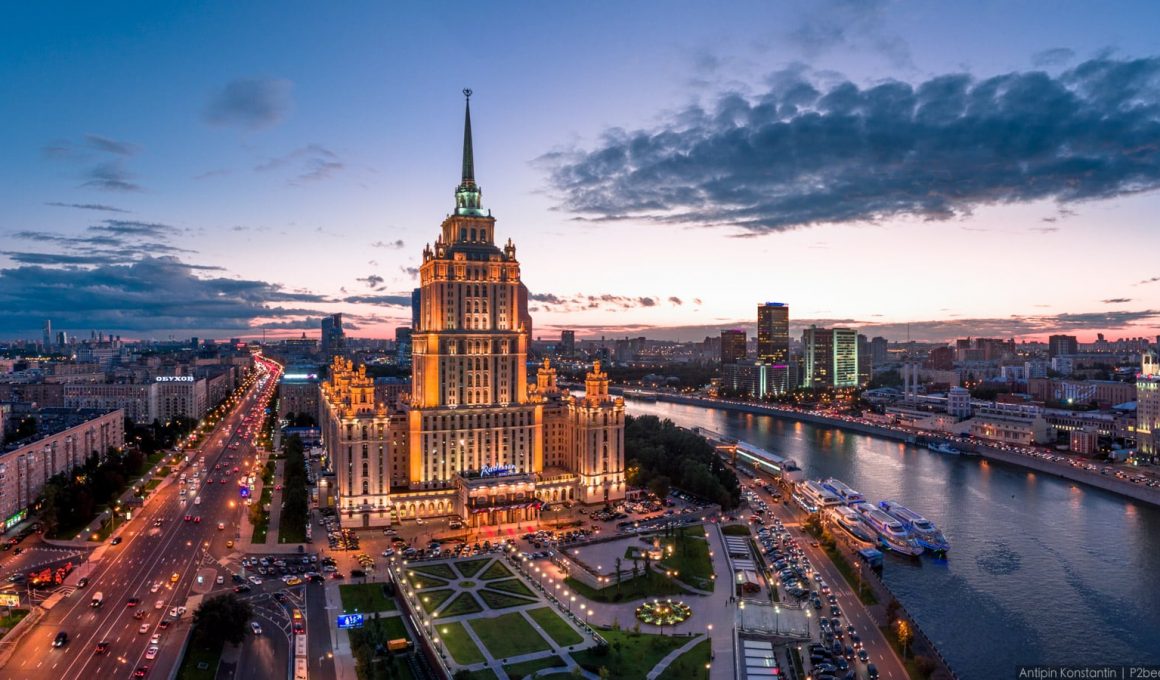
What are the best things to do in Moscow? What to do in Moscow? First, I will list the main places to visit by theme, passing by the must-sees, but also more unusual places in Moscow. Then, I will describe what to see in Moscow in one day and how to visit Moscow in 2, 3, 4, 5 or 6 days. Let’s go!
Good to know. For more information, click on the places to open the dedicated blog posts.
Main places to visit in Moscow & best things to do in Moscow
I worked in Moscow and I loved this city for its dynamism and energy. We find there from time to time to see friends, remember good memories and enjoy this giant city! Then the time has come for us to share with you our practical guide.
TOP 5 must-see places in Moscow
- Moscow Red Square
- St. Basil’s Cathedral
- Cathedral of Christ the Savior
- Bolshoi Theatre
Places of cultural, historical and religious interest in Moscow
- Novodevichy Convent and cemetery
- Tretyakov Gallery
- Pushkin Museum of Fine Arts
- Kremlin Izmaïlovo (pseudo-historic place, recently built in the image of the old, one of the best things to do in Moscow for your Instagram account 😉 )
- Park and ancient village of Kolomenskoye
Visit Moscow of the Soviet era
- Moscow State University and Sparrows Hill
- VDNKh and the Museum of Astronautics, one of the key landmarks of the Soviet era in Moscow
- GULAG Museum
- Metro stations
- The Stalinist skyscrapers, scattered all over the city
Less touristy places in Moscow
- Gorky Park and the GARAGE museum
- The old Krasny Oktyabr factory
- Zaryadye Park
- Center for Contemporary Art, WINZAVOD
- Business center, Moscow City
Main districts of Moscow to visit
- Patriarch Ponds
- Tchistye Prudy
- Kuznetsky most
- Arbat Street
However, regardless of the length of your stay, whether you are going to visit Moscow in 4 days or in 2, you need a visa. The article Obtaining a tourist visa for Russia could then be useful in any case.
What to do and see in Moscow in one day?
List of things to see and do in Moscow in one day:
- Go to Red Square
- Visit St. Basil’s Cathedral
- See Kremlin walls (but not to visit)
- Visit Cathedral of Christ the Savior
- Discover Kuznetsky most districts and see Bolshoi Theatre building
- And if you have time at the end of the day: go to the Sparrows Hill or to the Moscow City for a beautiful view
Things to do in Moscow in 2 days
If you want to visit Moscow in 2 days, there are 2 purposes: do not miss the essential places of Moscow and optimize travel.
- First day: Red Square , Saint Basil’s Cathedral , Zariadye Park, Bolshoi Theatre , Kremlin
- Day 2: Cathedral of Christ the Savior, the former Krasny Oktyabr factory on Balchug Island, Gorky Park, Moscow State University (one of the Seven Sisters buildings ) and Sparrow Hill
As 2 days os really short, be sure to choose an accommodation in the best districts where to stay in Moscow .
Walking on Red Square in Moscow: one of the unmissable things to do in Moscow
Iconic place and one of the must-see places in Moscow and even in Russia! Besides, if there was only one place to visit in Moscow in 2 days, this place would then be Red Square, without hesitation. Therefore, starting the city tour with Red Square is ideal . Several buildings are on the square, but not all of them have to be visited. Check out my blog post about Moscow’s Red Square in detail to learn more and not miss anything.
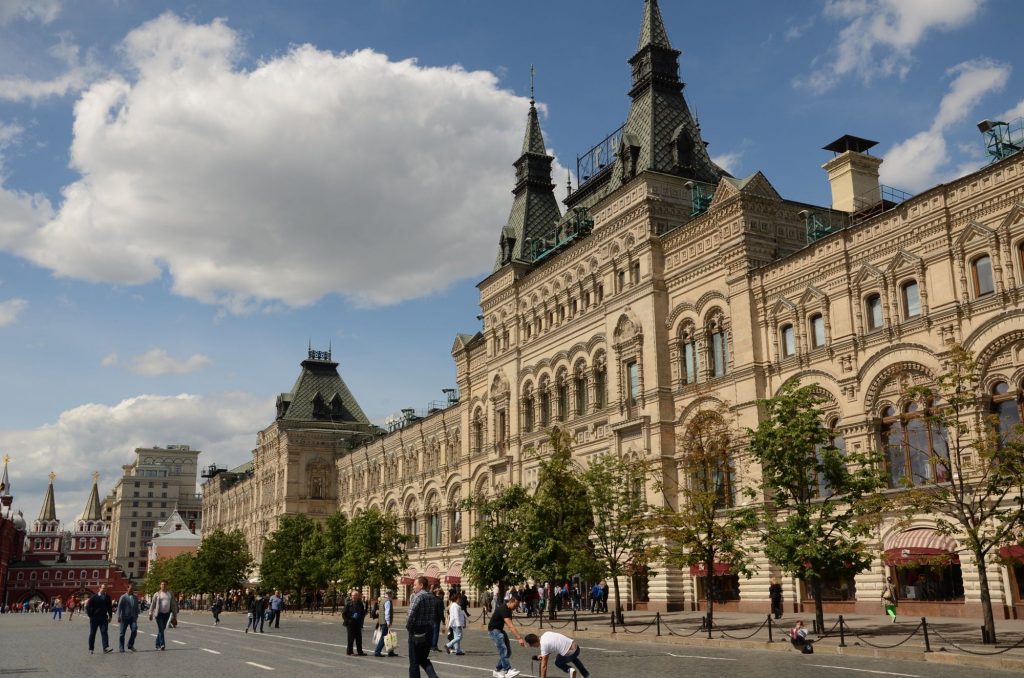
Visiting Saint-Basil’s Cathedral inside
Even more emblematic than Moscow’s Red Square! Built in the middle of the 16th century under the orders of Tsar Ivan Le Terrible, this cathedral is one of the most beautiful monuments of Orthodox art, and definitely one of the unmissable places in Moscow. Visiting Saint-Basil’s Cathedral inside is one of the most beautiful things to do in Moscow!
- Visit estimate time : 1h30
- Entry ticket : 700 RUB. Tickets can be purchased on the cathedral’s official website 45 days before the tour.
- Audio guide (recommended): 500 RUB
- Opening hours : June to August 10 am-6pm; from November to April: 11 am-5pm; May, September, October 11 am-5pm. Cathedral closed on Wednesdays. Entrance is closed 45 minutes before closing.
- Find out more in the dedicated article: Saint Basil’s Cathedral in Moscow
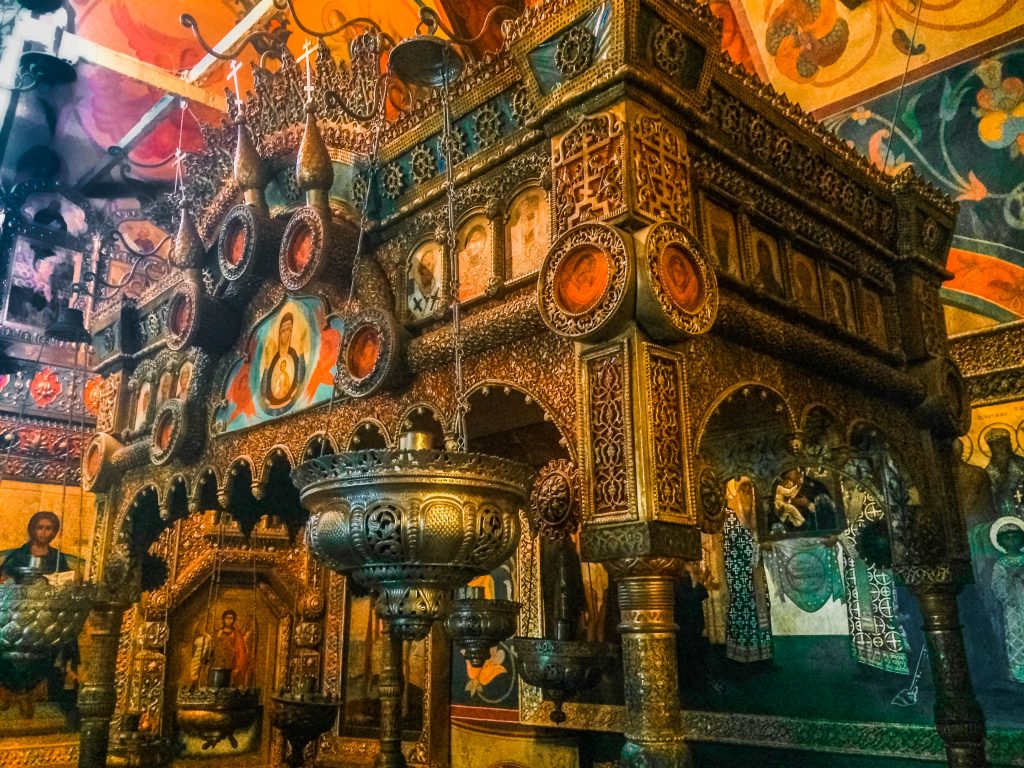
Take a walk in Zariadye park: one of the coolest things to do in Moscow after visiting Red Square
Zaryadie Park is just a 10-minute walk from St. Basil’s Cathedral, so it’s easy to include in your itinerary if you’re going to visit Moscow in 2 days. From its heights, you can see the red walls of the Kremlin. But, the most impressive point of view is the platform which overlooks the Moskva river. A must see! And clearly one of the coolest things to do in Moscow!
- Open 24 hours a day
- Good to know! Park Zaryadye is also a place to visit in Moscow in winter. Find out more here: What to do in Moscow in winter?
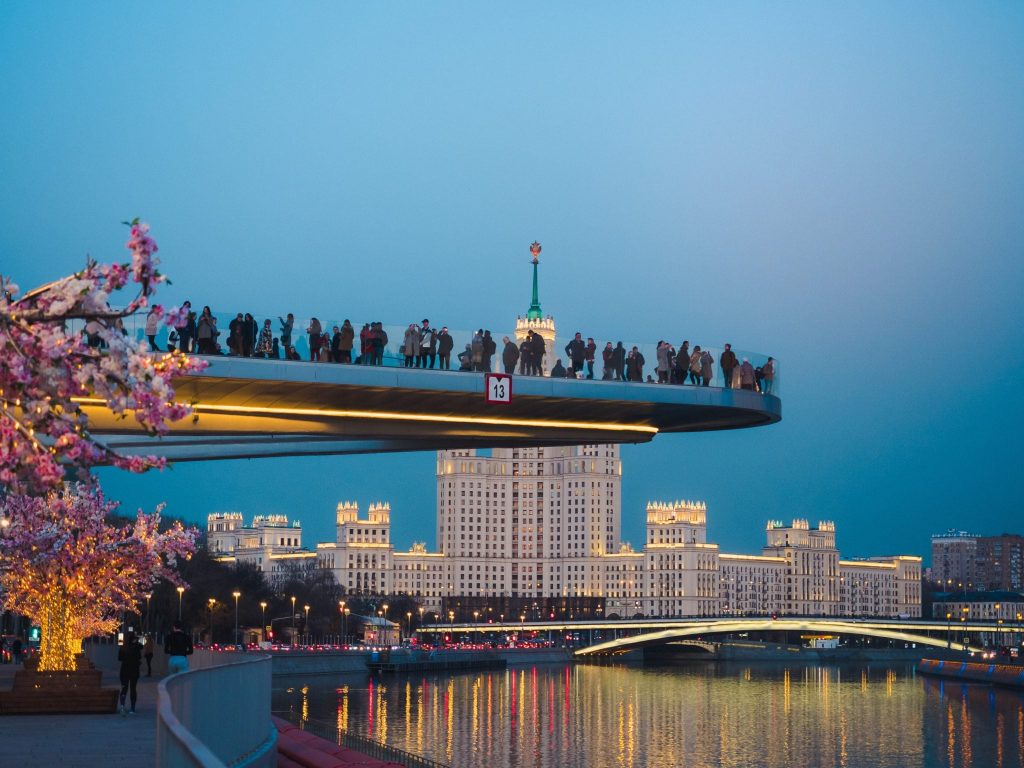
See the Bolshoi Theatre and discover the Kuznetsky Most district
The Bolshoi Theatre is the most famous Russian theater in the world. The most economical way to see a presentation at the Bolshoi Theater is to take the tickets on the theater’s official website in advance, so here is our tutorial to help you: How to buy entrance tickets to the Bolshoi? In addition, several pedestrian or one-way streets
The Bolshoi Theater is the most famous Russian theater in the world. The most economical way to see a presentation at the Bolshoi Theater is to take the tickets on the theater’s official website in advance, so here is our tutorial to help you: How to buy tickets to the Bolshoi? In addition, several pedestrian or one-way streets are located north of the theater. It is therefore very pleasant to find them to leave the main axes of the megalopolis.
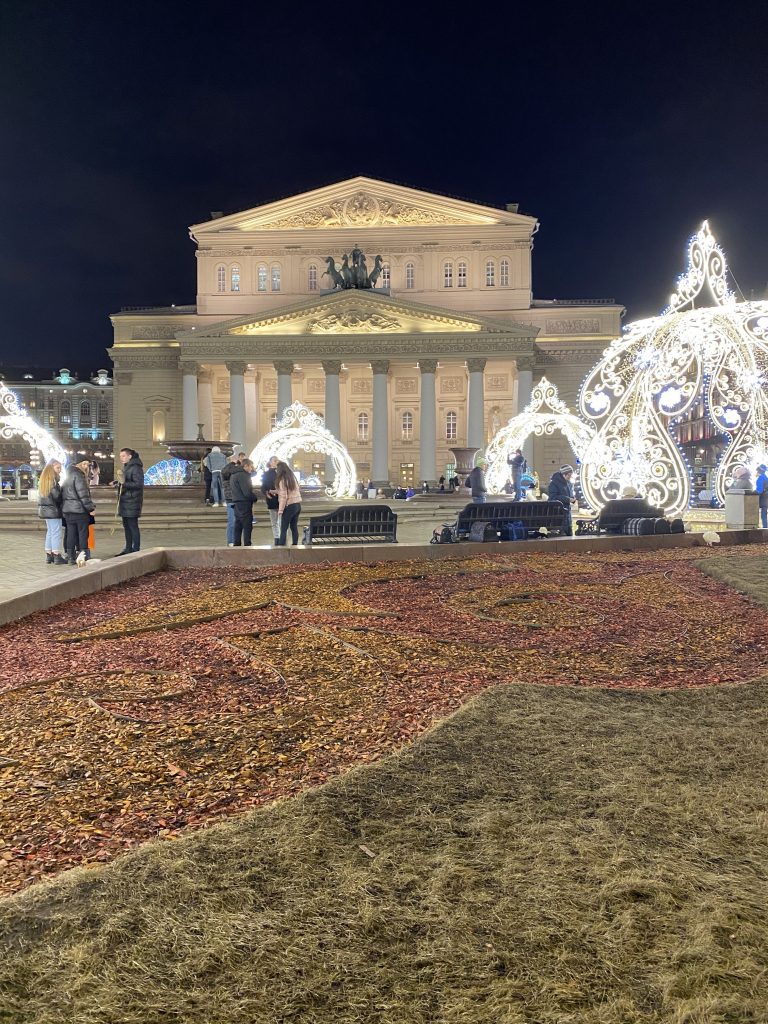
Visit the Moscow Kremlin
Visit Kremlin is on top of things to do in Moscow. A place of power for centuries, the Kremlin then shows us a whole different image when viewed from the inside. If you want to visit Moscow in 2 days, the Kremlin is certainly one of the must-see places in Moscow.
- Opening hours : Daily from 10 a.m. to 5 p.m., except Thursday.
- See our blog post about visiting the Moscow Kremlin
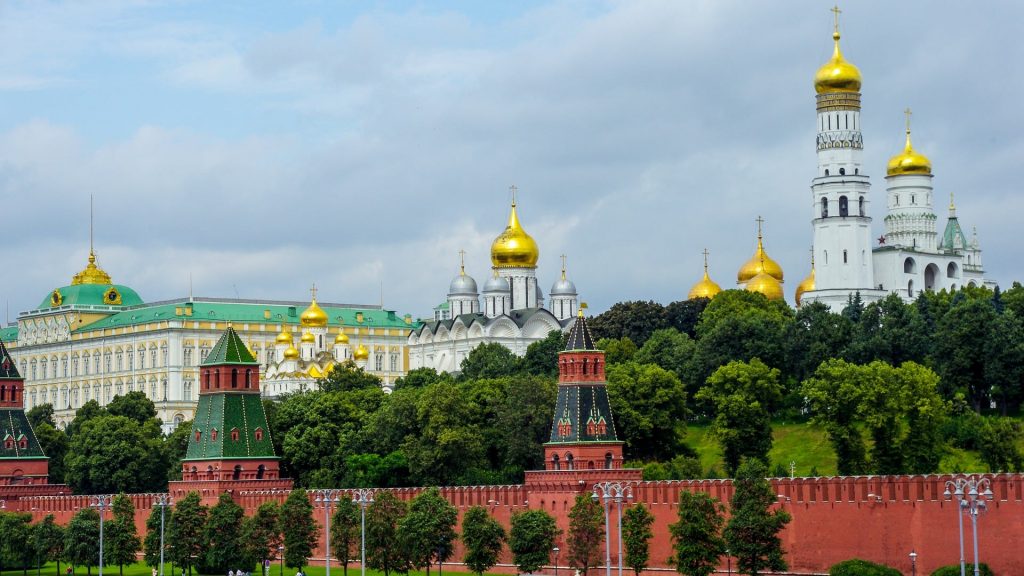
Visit the Cathedral of Christ the Savior
This impressive Moscow Cathedral is the seat of the Russian Orthodox Church. It is a must see if you visit Moscow in 2 days and clearly one of the things to do in Moscow. The Cathedral of Christ the Savior was first built in 1883 in memory of Russia’s victory over Napoleon’s Grand Army. Then in 1931 Stalin ordered its destruction. It was then rebuilt again (identically) only in 2000.
- Where? Ulitsa Volkhonka 15. At the foot of the Kropotkinskaya metro station.
- Opening hours . Daily: 10: 00-17: 00, except Monday: 13: 00-17: 00
- Free entry (some closing restrictions, for example a short)
Good to know! In orthodox religious places, one must avoid excessively uncovered clothing. Women should cover their heads. After visiting the Cathedral of Christ the Savior, you can explore Bolotny Island and Gorky Park. This is one of the routes our guide to Moscow.

The old Krasny Oktyabr factory: one of the coolest things to do in Moscow
If you cross the Moskva River by a pedestrian bridge which is located just in front of the Cathedral of Christ the Savior, you will enjoy a beautiful view of the city and at the same time you can discover Balchug Island. Furthermore, if you want to visit Moscow in 2 days, you can include this island in your itinerary between the cathedral and Gorky park. Here is the old confectionery factory Krasny Oktyabr, which has gradually turned into a fashionable micro-district. There are then some elements of street art, cafes and restaurants and some Moscow bohemian side. At the end of the island you can see a gigantic 98-meter-high monument dedicated to the Russian reforming tsar Pierre The Great.
Good to know! You can find on this island are the trendiest nightclubs in Moscow. On weekends, there are taxi caps after midnight so there are so many people. On the other hand, if you go there in winter and during the day, the island is quite empty and less interesting to see.
Gorky Park is one of the TOP places to visit in Moscow, because it allows you to better understand the life of the locals and their rhythm. In fact, it’s a huge entertainment park. For example, in winter there is a giant ice rink and in summer – free dance or yoga lessons, sandy beaches for playing volleyball, an outdoor cinema. So, like the locals, have a Stakantchik (ice cream or cooked corn), and enjoy the atmosphere of the place: that’s one of the interesting things to do in Moscow to discover the city.
- Where? Krymsky Val 9. 20 minutes’ walk from Krasny Oktyabr, along the quays.
Sparrow Hill and Moscow State University
The Sparrow Hill, Vorobiovy Gori in Russian, is the highest point in Moscow. It is rather known to Russians, but less to travelers. A nice view on Moscow opens from the hill, and in particular on the Luzhniki Stadium. In addition, on the hill itself is the Moscow State University: an impressive skyscraper from the Soviet era.
- How to get there? By bus T7 (35 min) from Oktyaborskaya station, near Gorki Park. By metro (Vorobiovy Gorki station) + climb the hill on foot. On foot along the Moskva along the Gorky Park (1h30) + climb in funiculars.
Good to know! It is possible to cross the Moskva river by funicular. We actually tested it and it was pretty cool! That is one of our favorite things to do in Moscow!
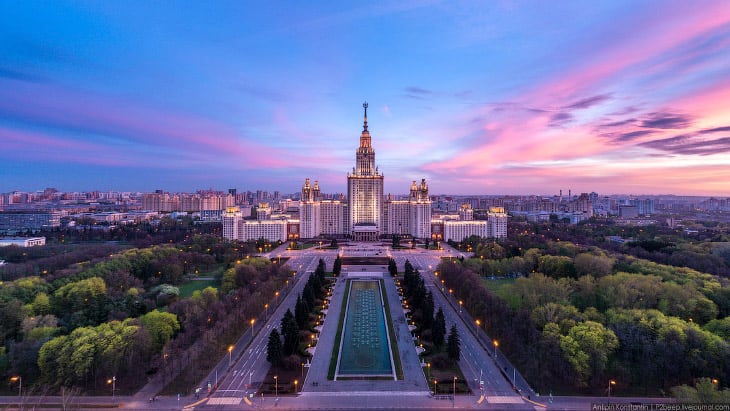
What to do in Moscow in 3 days?
If you are going to visit Moscow in 3 days, it would be interesting to dive into the Soviet era which strongly marked the country and the city. After the Bolshevik Revolution, the capital was transferred from Saint Petersburg to Moscow, in order to mark the change of power. Moscow then became the world showcase for communist ideology. Here are the best things to do in Moscow for 3-day-trip!
VDNKh, visit Moscow of the Soviet era
VDNKh is a large exhibition center in the north of Moscow, where there are still several striking witnesses of the USSR. The most interesting are the Museum of Cosmonauts and the Statue of the Worker and the Kolkhozian , which will certainly impress you with its size!
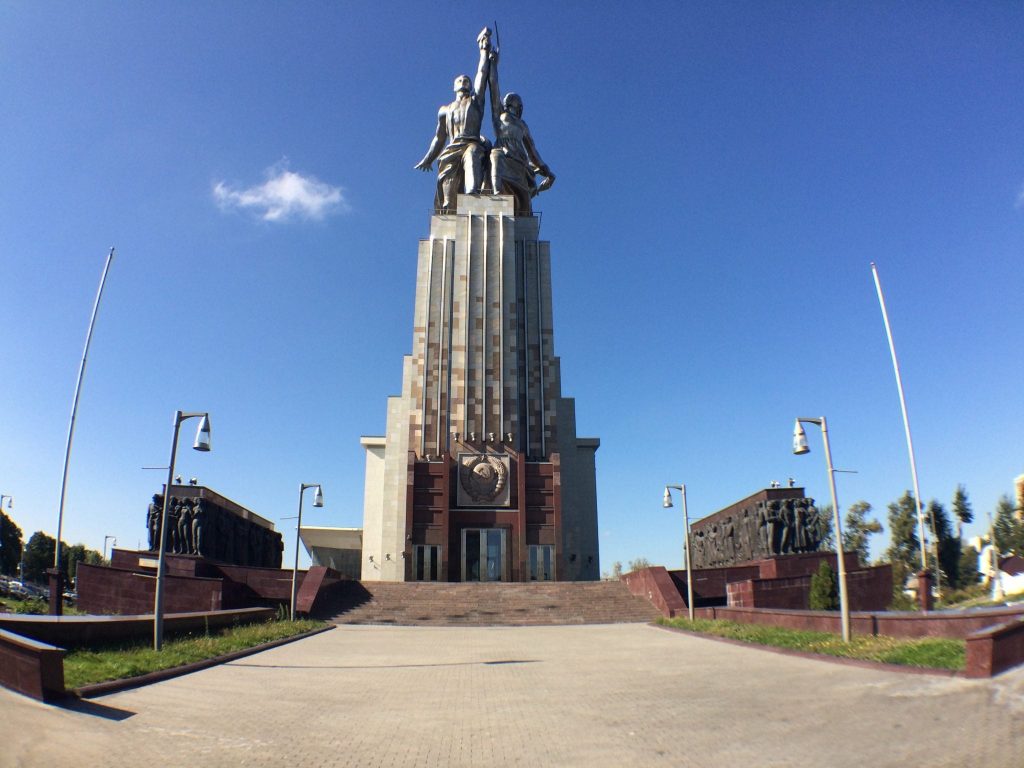
GULAG History Museum
The explanations of the museum are very well done. We really have the feeling of going back in time. If you are going to visit Moscow in 3 days and you are interested in history and this subject in particular, I recommend this museum. Visit the GULAG History Museum is one of the most interesting things to do in Moscow.

Discover the Patriarche Pounds district
It’s a nice neighborhood in Moscow where you can come across rather affluent locals, but not necessarily very bling-bling. Take a walk in this area is really a cool thing to do in Moscow! In addition, the Ponds of Patriarch is one of the places of Bulgakov’s novel “Master and Margarita”. As this is an interesting area to see, we have included it in a walking tour of Moscow. The route ends at the Moscow Kremlin, which is very convenient, because you will be able to visit Moscow in 3 days by optimizing your trips.

What to visit in Moscow in 4 days: TOP things to do in Moscow in 4 days
If you want to visit Moscow in 3 days, you will already see a lot of things. On the other hand, if you stay one more day, you have plenty to do! The Novodevichy Convent, the Tchistie Proudy district and the Izmaylovo Kremlin are very good candidates for you, if you are going to visit Moscow in 4 days.
Visiting Novodevichy Convent in Moscow
The Novodevichy Convent is one of the most brilliant examples of Russian architecture, according to UNESCO. This beautiful complex was built in 1524 and today consists of the convent, but also of a cemetery whose status could be compared to that of Père-Lachaise in Paris. Visiting Novodevichy Convent is one of the great things to do in Moscow, if you want to go a little bit outside of the center!
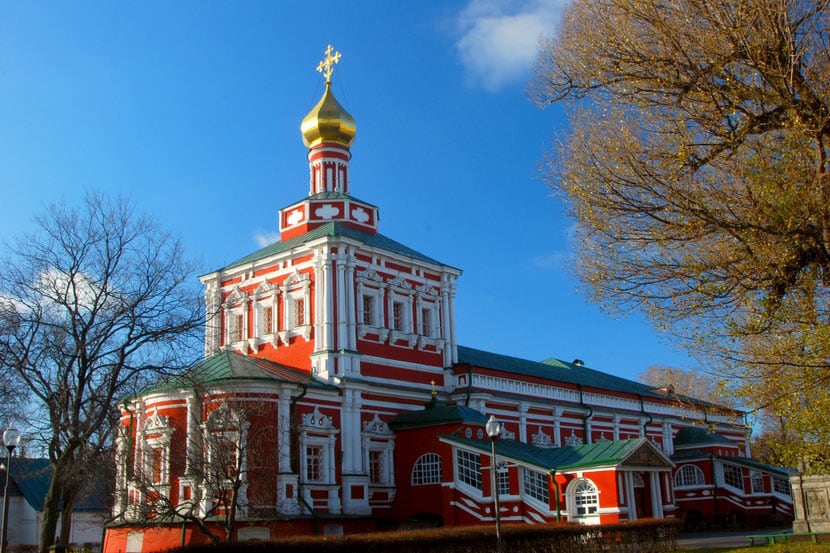
Discovering Tchistye Proudy district
It’s one of the most popular areas of Moscow, with many cafes, restaurants and bars nearby. It is therefore a place to discover if you want to visit Moscow in 4 days. It is just as pleasant for a stroll as for the discovery of local life. For example, in winter the pond turns into an ice rink.
Visiting the Izmaylovo Kremlin, one of the coolest things to do in Moscow!
The Izmaylovo Kremlin is more of a tourist than a historic place. On the other hand, it is a pretty impressive place to discover, especially on weekends. Inside the Kremlin, there is a flea market where you can find a little bit of everything, but mostly good souvenirs to bring from Moscow. For example, chapka, traditional Russian scarves or matryoshka (Russian dolls). Add the Kremlin and the Izmaïlovo market to your itinerary if you are going to visit Moscow in 4 days, because it is a nice and very colorful place! Visiting the Izmailovo Kremlin is one of the things to do in Moscow, if you want to put colors in your Instagram account! 😉

In 4 days, we will have the opportunity to see several Moscow: Classic Moscow, Moscow of old Russia, Soviet Moscow and a little bit of the new Moscow. So what to visit in Moscow on the 5th day of travel?
What to visit in Moscow in 5 days?
Art lovers will be delighted to discover the Tretyakov Gallery and the Pushkin Museum of Fine Arts, while others will prefer to stroll along Arbat Street, see the buildings of Moskva-City or visit Bunker 42.
Admiring Russian art at Tretyakov Gallery
Founded in 1856 by an industrialist and great lover of art, the gallery has grown over the decades, and then bequeathed to the state. Today the collection includes more than 140,000 pieces, 15,000 of which are paintings. Visiting the Tretyakov Gallery is one of the things to do in Moscow if you want to discover Russian art!
- Where? Pereoulok Lavrouchinski 10. A 5-minute walk from Tretiakovskaya station
- Opening hours. Open from 10 a.m. to 6 p.m. until 9 p.m. Thursday and Friday. Closed on Mondays.
- Entry tickets. 500 RUB.
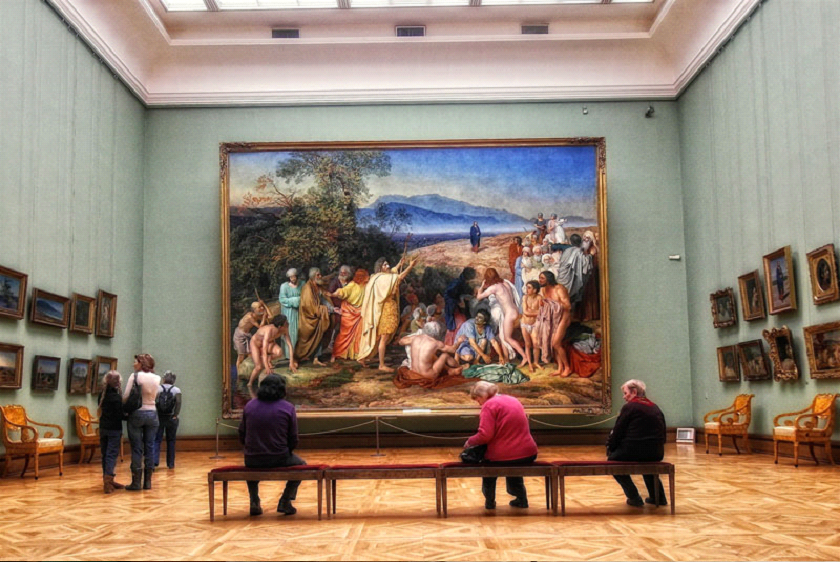
Visiting the Pushkin Museum of Fine Arts
The Pushkin Museum of Fine Arts presents the treasures of ancient Egypt, the paintings of Rembrandt and Cézanne, a fine collection of Impressionism.
- Where? Ulitsa Volkhonka 12
- Opening hours. Daily: 10: 00-20: 00, except Thursday: 11: 00-21: 00. Closed on Mondays. The boxes close an hour before closing.
- Entry tickets. The prices vary according to the collections from 300 to 750 RUB.
Walking on Arbat Street
All Russians know Rue Arbat. So, walking on Arbat street is one of the things to do in Moscow. However, after the years, little by little it became very touristy. This is a pedestrian street only. There are souvenir shops, restaurants and cafes there, but it is no longer the most authentic neighborhood in the city.
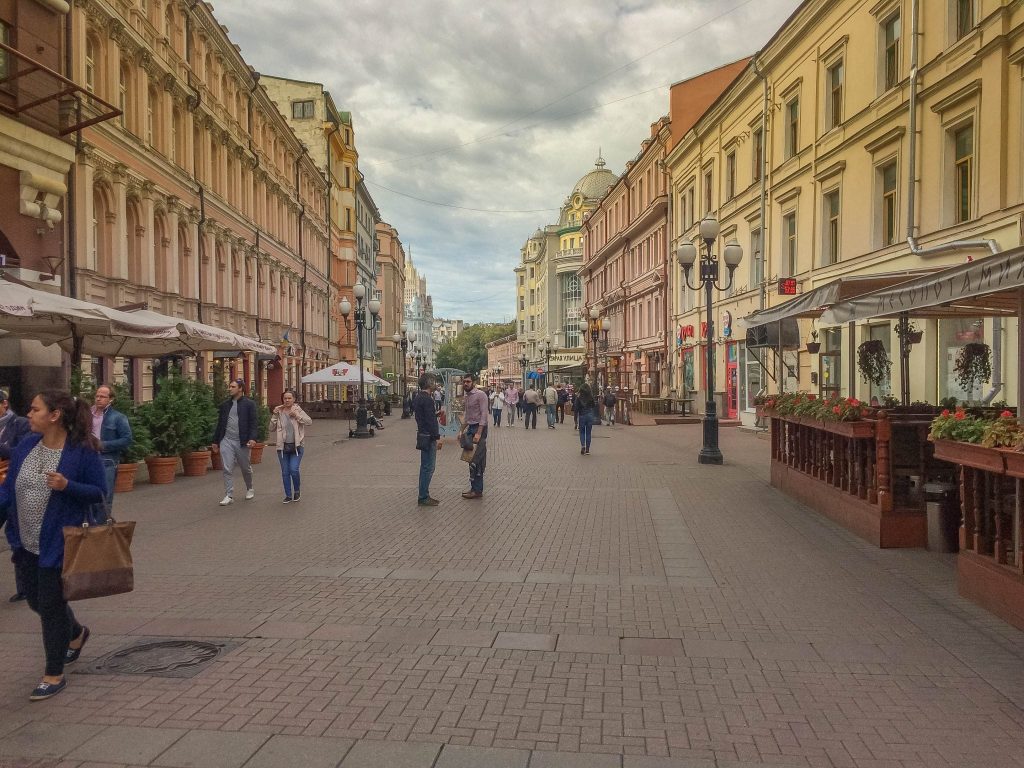
Seeing the buildings of Moskva-City (Moscow City)
Moskva-City is Moscow’s business center, much like Paris’s Defense district. The skyscrapers of Moskva-City are among the tallest in Europe: 373 meters high! Very nice place to see at dusk.
Good to know! You can admire a nice view of Moscow City from the docks of Tarasa Shevchenko. It’s especially beautiful in the evening with all the lights on.
Bunker 42, one of the most unusual things to do in Moscow
Bunker 42 is a secret military complex which was to be used by the Soviets in the event of a nuclear attack: a space of 7000 m² 65 meters underground!
- Where? 5 Kotelnitcheski Lane, 11.
- Prices. 2200 RUB per person
- Opening hours. Open daily from 10 a.m. to 8 p.m.
- Restaurant inside. Original, but rather a tourist trap.
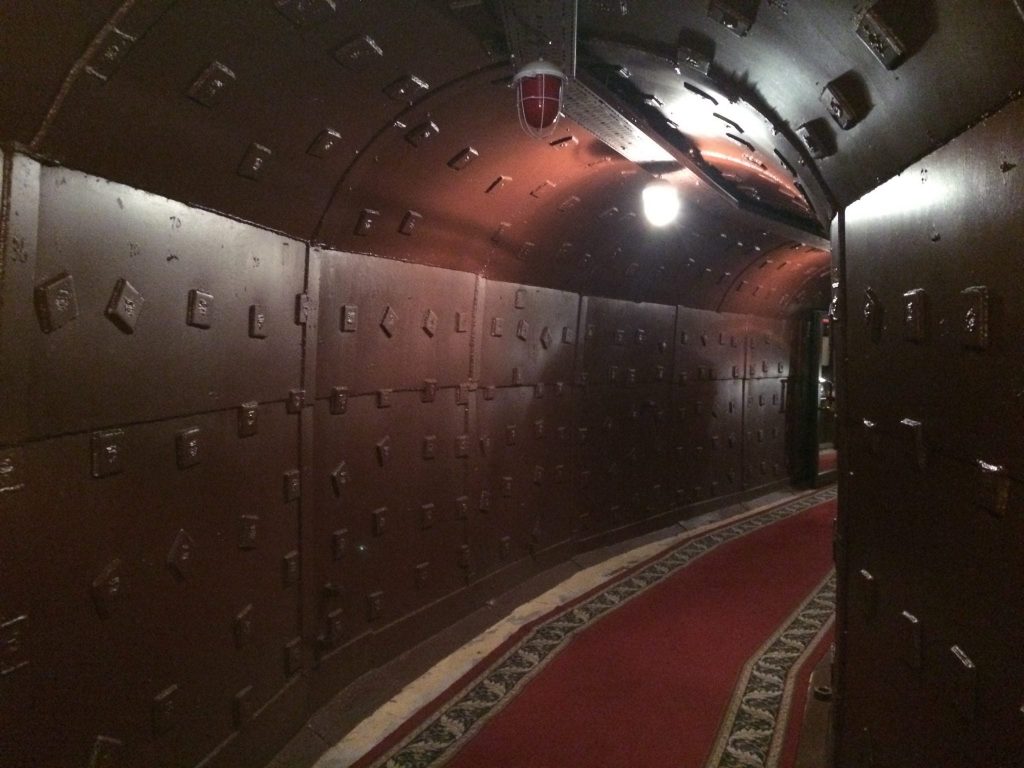
What to visit in Moscow in 6 days or more?
There are still so many places to see, because Moscow is a big megalopolis and there is always something exciting to do there. For example: the ancient Kolomenskoye village or the WINZAVOD contemporary art center .
If you are interested in history and want to see Russian cities on a rather “human scale”, it would certainly be interesting for you to discover the cities of the Golden Ring . For example, it is very easy to get to Sergey Posad from Moscow (less than 2 hours in train). Visiting the Golden Ring is one of the best things to do in Moscow if you are staying more than a 5-6 days.
There are still plenty of places to see in Moscow, however I did my best to list here the best things to do in Moscow, what to see in Moscow in one day, but also in 2, 3, 4 or 5 days in Moscow!
Moscow travel tips:
- Airport transfer: how to go to Moscow?
- Where to stay in Moscow (hotels, districts)?
- Tourist voucher for Russian visa
- Christmas and New Year in Moscow
- What is the best time to visit Moscow?
Leave a Reply Cancel reply
Your email address will not be published. Required fields are marked *
Save my name, email, and website in this browser for the next time I comment.
Novodevichy Convent and cemetery in Moscow: tickets, cemetery map
Hermitage museum in saint petersburg: tickets, best time to visit, you may also like.
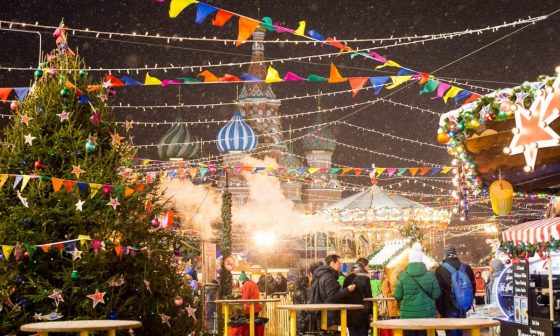
Moscow in winter | What to do in Moscow in winter? How to dress?
- October 1, 2023
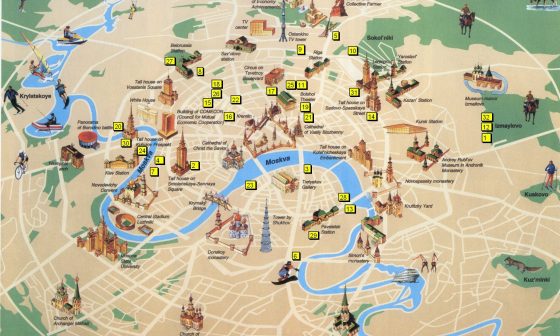
Free Moscow map in English: Moscow metro map and city centre map
- December 12, 2023

- August 26, 2023

Moscow transport: metro, bus & taxi in Moscow | How does it work?
- August 15, 2023
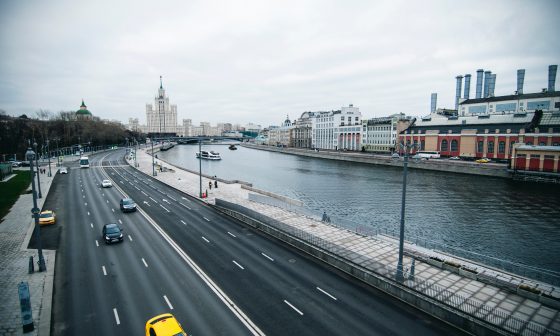
Weekend in Moscow | What to do in Moscow for a long weekend?
- June 22, 2023
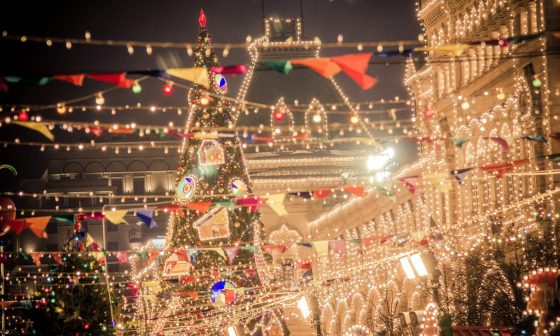
Christmas and New Year in Moscow: best markets and decorations to see
- September 18, 2023
Finnish-ing touches: all you need to know before your trip to Finland

Apr 24, 2022 • 9 min read

In Finland, the sauna is a way of life – and an essential experience for any visitor © Jonathan Stokes / Lonely Planet
Finland is the kind of place a child with a particularly vivid imagination might dream up, complete with flying reindeer, the real Santa and so much snow.
It’s a place of extremes – of darkness and light, of bitter cold and unfathomable wilderness. And it’s bound to be right up there with your Nordic dream destinations, whether you’ve come to dash through frozen forests by husky-drawn sleigh as the Northern Lights flash overhead in Lapland, or hunker down in a back-of-beyond summer cottage on the shores of a placid lake in the undying light of summer.
If you love saunas, silence and nature, you’ll fit right in. Here are the things to know to help you plan and prepare your trip and stay safe and healthy in Finland.
Planning your trip to Finland
Consider arriving outside of helsinki.
Helsinki is the country’s principal gateway, though if you’re coming to Finalnd for a non-urban adventure you might consider flying into a regional airport like Rovaniemi (gateway to Lapland and Santa HQ) or Tampere (gateway to the lakes) instead. Once you’re in Finland, public transport is pretty good and efficient, with trains and buses joining the dots between major cities and towns. But if you’re heading into the wilds, you should count on renting a car, as distances are vast. Pack drinks and snacks for the journey as there’s little in the way of services between hubs.
The roads that sweep north to Lapland are often empty, but you’ll need to watch out for reindeer (the Porokello app warns of high-risk reindeer-crash areas) and ice in winter.
Summers are for primeval pleasures; winters are for festive magic
Finland is too big for just one bite, so plan carefully and resist the temptation to cram everything into one trip.
Summer, you say? The Finns would agree: after long, dark, snowbound winters, they embrace the lighter days of summer with a truly biological urgency. June to August is a brilliant period for hiking and camping in wilderness areas like the reindeer-bobbled fells of Urho Kekkonen National Park in Northern Lapland , above the Arctic Circle. It’s also a great time to jump into a kayak to paddle the Lakeland (there are 188,000), waving to seals as you drift from one gorgeous little speck of an island to the next in Åland on the Baltic.
Summer is when Finns tiptoe away from the world and back to nature in middle-of-nowhere cottages, some of which are totally off the grid. Days are spent in gleefully primeval ways: foraging for berries, swimming in ice-cold lakes, relaxing in saunas and spending nights under a canopy of stars. The climax is Juhannus , or midsummer, in late June, when families come together for picnics and dancing around bonfires.
September is quiet and glorious in Lapland, with forests turning gold and crimson and reindeer beginning to rut. As snow arrives in October, a hush falls over the land and many sights and hotels close. But winter brings festive sparkle and visits to Santa in the Arctic north. As the days get shorter, you’ll enjoy the full-on Narnia effect, with dogsledding, snowmobiling, skiing and overnight stays in ice hotels . Get lucky in Lapland and you’ll see the Northern Lights come out to play (statistically October, November and March are best).

Keep costs down by eating at markets and camping
Finland isn’t cheap, but there are ways to cut costs and save a few euros. Make lunch your main meal of the day, as many restaurants and cafes serve a good-value all-you-can-eat lunch buffet that includes soups, salads and day specials. Most big towns also have a kauppahalli (covered market hall), where you can grab picnic fixings (breads, cheeses, deli produce, smoked fish) and graze at one of the stalls or cafes selling snacks.
Camping is an inexpensive way to travel around. Most campsites are excellent, with cabins to rent as well as plenty of space to pitch a tent – but they tend to only open from June to August. If you’re willing to forego the warm shower, you can wild-camp thanks to jokamiehenoikeus (everyman’s right) – a great (if adventurous) option in a country with 41 national parks and almost endless expanses of nature.
Etiquette in Finland: how to fit in with the locals
Keep things casual .
Even in the heart of Helsinki, you can just tell that the Finns are craving the space and solace of the great outdoors, counting down the minutes and hours until they can give civilization the slip and escape to their mökki (summer cottage). The way they dress reflects their nature-loving spirit: casual, practical, sustainable and well suited to the extremes of the seasons. There’s no need to pack lots of fancy clothes, especially if you’re heading beyond the city (as you most likely are). Pack loose layers, thermals and sturdy walking shoes instead.
Say hello, Finnish style
Kissing on the cheek? No. As a nation that prizes extreme apartness, Finns are a touch more reserved when it comes to greetings. Making eye contact and shaking hands is pretty standard; friends and family tend to hug. “ Hei ” and “ moi ” are two ways to say “hello.” Repeat the latter twice (“ moi moi ”) and it doubles as goodbye. Oh, and remember to be punctual – the Finns always are.
Remember that silence is golden
The old “silence is golden” proverb never rings truer than in Finland. Deep and introspective, the Finns aren’t fans of idle chitchat. Silence here is rarely seen as awkward; if there’s nothing pertinent to say, that’s just fine. You’ll often see friends together in the sauna, silent, perfectly happy in each other’s quiet company. So if a conversation comes to a natural halt, don’t feel as though you have to fill in the gaps with small talk.
And if you’re planning on having a lively chat with your mates in the sauna, think again. In Finland, the sauna demands deep respect – legend even has it that if you behave immodestly, you’ll have to face the fury of the saunatonttu , or sauna elf, who might burn it down in fury.

Give the sauna a whirl – and take it seriously
Stripping naked, roasting in a sauna heated to 175°F (80°C), beating yourself with a circulation-boosting birch whisk (a vasta or vihta ), then diving into an avanto (ice hole): this is a Finn’s idea of fun. Sounds masochistic? This country has 1001 ways to toughen you up and the ritual of the sauna (pronounced “sah-OO-nah” rather than “SAW-nuh”) is just one of them.
The sauna isn’t a luxury in Finland: it’s a way of life. Marriage, divorce, birth, death, new job: you name the life event and you can bet a sauna is involved. There are around three million saunas in Finland, in a country with a population of just 5.5 million. This is where the Finns socialize, do business, put the world to rights, rest, meditate and cleanse. Learning the art of sauna-going is offers a window into the country’s soul.
Public saunas are nearly always separated by gender. To sauna like a Finn, shower first, get naked, keep quiet, take a towel to sit on and ladle water onto the stove to produce fragrant löyly (steam), taking care not to splash too freely. You should work up a sweat in around 15 minutes – but remember, it’s not a competition. Take frequent breaks and drink water to rehydrate.

Embrace the outlandish
This isolated land of extremes has bred a nation of fiercely independent and idiosyncratic people. Squeaky cheese ( leipäjuusto ) you dunk in coffee, salty licorice ( salmiakki ), ice swimming, flying reindeer, Moomins: Finns love things that the rest of the world consider...odd. If you single out any of these quirky institutions for praise, you just might make friends for life here. This passion for the weird and wonderful extends to a crazy line-up of events, with world championships for everything from wife-carrying to air-guitar playing and swamp soccer.
Health and safety in Finland
Green, clean and conscientious, Finland is incredibly safe. Still, it’s worth bearing a few things in mind to make sure you stay healthy and happy.
Bring the bug spray
Though not exactly a health risk, the swarms of blood-thirsty insects that descend on the country’s north in summer can be a real bugbear. The mosquitoes, sandflies, midges and horse flies are at their most ferocious in July, but all summer long you’ll need to go armed with strong repellent, especially around lakes and in swampy, densely forested areas. In the wilderness, there are plenty of remote huts where you can crash with a mat and sleeping bag, but bringing along your own tent generally offers more protection from the mosquito storms.
Besides repellent, you might want to bring along a mosquito cap or hat and a travel net to cover your bed or your tent flap to keep the pesky biters at bay.
If you encounter any health issues, you’ll be in good hands
Perhaps it’s the air, the crystal-clear water at the turn of a tap, the vast open spaces, the long forest hikes, or the immune system-boosting saunas and ice swims: Finland radiates good health like few other places on earth. And the country has some of the best health care in the world – so if you do get sick you’ll be in the very best hands. As with all the Nordic countries, the level of care is extraordinarily high and doctors and medical staff generally speak excellent English.
There are specific travel vaccinations to worry about, though you’ll want to make sure you have decent travel insurance all the same, especially if you’re planning on a winter-sports extravaganza in Lapland or straying from the well-trodden-path in the wilds of a national park.
If you’re a citizen of the EU, European Economic Area (EEA) or UK, you’re entitled to emergency medical treatment with a European Health Insurance Card (EHIC) or UK Global Health Insurance Card (GHIC), though you will still have to pay a daily or per-appointment fee as a Finn would. Otherwise, look into whether your country has a reciprocal arrangement for free medical care in Finland.
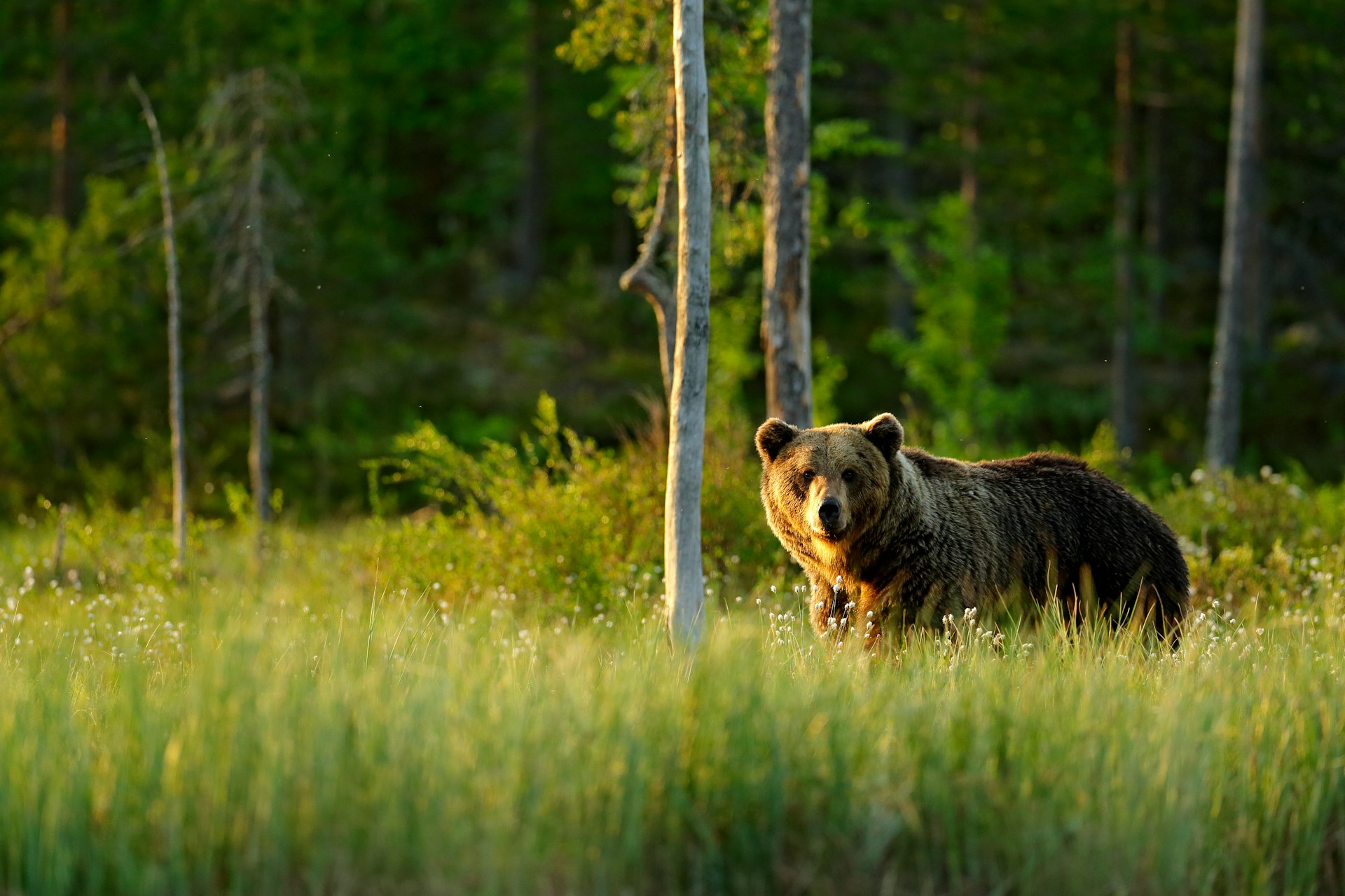
Keep an eye out in the wild
Beyond the cities, Finland is a wild, wild place. As with all extreme climates, there are the obvious risks of exposure, hypothermia and frostbite in the Arctic north, and rivers can be prone to flooding when the snow melts. It goes without saying that you should venture out well prepared with the right thermal gear if you are visiting Lapland in winter, when temperatures can plummet to a bitterly cold -22°F (-30°C). Always take a good map and compass, and inform someone of your whereabouts if you’re heading out into one of the vast national parks in the north.
Predators like brown bears and wolves roam the forested wilds on the Russian border in the country’s east, though they generally mind their own business and pose no real threat.
You might also like: Capital gains: Helsinki on a budget Autumn in Finland: an alternative fall foliage tour Reindeer, bears and elusive seals: Finland’s finest wildlife experiences
Explore related stories

Train Travel
Mar 22, 2024 • 4 min read
Nightjet sleeper trains have a new mini cabin, perfect for solo travelers or those wanting privacy.
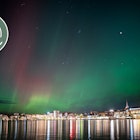
Jan 5, 2024 • 10 min read

Nov 1, 2023 • 4 min read

Oct 27, 2023 • 5 min read

Sep 5, 2023 • 7 min read

Aug 4, 2023 • 11 min read

Aug 3, 2023 • 7 min read

Jan 3, 2023 • 7 min read

Dec 10, 2022 • 7 min read
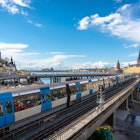
Dec 9, 2022 • 9 min read

IMAGES
VIDEO
COMMENTS
Wer mit F.A.T. reist, lernt Spanien, die Spanier, deren Vorlieben und Gebräuche, die lokalen Spezialitäten und Besonderheiten hautnah und genussvoll kennen und hoffentlich auch lieben. Sie veranstalten Reisen nach Spanien? Dann Sind Sie unser Kunde! Seit über 30 Jahren betreuen wir als Incoming-Agentur (DMC) erfolgreich Reiseveranstalter.
FAT Finn Andalus Travel GmbH | 6 followers on LinkedIn. Spanien mit allen Sinnen erleben | FAT-Finn-Andalus-Travel is a hospitality company based out of WALDSTR. 14, Korntal-Münchingen, Germany.
FAT-Finn-Andalus-Travel in Korntal-Münchingen, reviews by real people. Yelp is a fun and easy way to find, recommend and talk about what's great and not so great in Korntal-Münchingen and beyond.
Finn Andalus Travel. Hospitality · Botswana · <25 Employees. Finn Andalus Travel is a company that operates in the Leisure, Travel & Tourism industry. It employs 1-5 people and has $1M-$5M of revenue. The company is headquartered in Botswana. Read More. View Company Info for Free
FAT GmbH is a company that operates in the Leisure, Travel & Tourism industry. It employs 6-10 people and has $1M-$5M of revenue. The company is headquartered in Korntal-Münchingen, Baden-Wuerttemberg, Germany. Read More. View Company Info for Free
Find company research, competitor information, contact details & financial data for FAT finn andalus travel GmbH of Korntal-Münchingen, Baden-Württemberg. Get the latest business insights from Dun & Bradstreet.
Explore Recent Photos; Trending
FAT finn andalus travel GmbH, Korntal-Münchingen, Germany, District Court of Stuttgart HRB 204648: Total assets, Earnings, Revenue, Network, Financial information. North Data Home Premium Services Data Services Login. Premium Services Data Services Login. European Companies Search Engine
Discover FAT - FINN-ANDALUS-TRAVEL GMBH on Europages and contact them directly for more information, to request a quote, etc.
Discover FAT finn andalus travel GmbH on Implisense, the B2B company information portal. Profile, contact details, news - everything at a glance!
The Andalusia region is the southernmost region of Spain. Its west side borders Portugal and the east side with Murcia, and the northern part borders the regions of Extremadura and Castilla-La Mancha. Andalusia's coastline is bathed by both the Mediterranean Sea and the Atlantic Ocean. This Spanish region is divided into 17 provinces.
Get information on Andalusia Travel Guide - Expert Picks for your Vacation hotels, restaurants, entertainment, shopping, sightseeing, and activities. Read the Fodor's reviews, or post your own.
Journey: Sauna meets design - the Finnish way. 0°C. Helsinki region: cloudy. Use this guide to plan a trip to Finland and immerse yourself in the country's nature, forests, lakes and culture.
Our favourite spot to holiday is in Al-Andalus, an area in the south of Spain that was ruled by the Umayyads from 711CE till the early 11th Century. They left behind their architectural mark, flora and fauna, as well as their agricultural advances and techniques. The Andalusian part of Spain encompasses so much antiquity and culture that ...
The whole experience took on the prelapsarian air of travel in a bygone age. I had made no hotel bookings in advance. ... In 1998, the Hammam al-Andalus became the first Arab-style bathhouse to ...
There are lots to see in the city centre of Moscow, so we decided to start our series of Russia travel videos by showing you around the most historical part ...
Rough Guides® is a trademark owned by Apa Group with its headquarters at 7 Bell Yard London WC2A 2JR, United Kingdom. Plan your visit to Andalusia, Spain: find out where to go and what to do in Andalusia with Rough Guides. Read about itineraries, activities, places to stay and travel essentials and get inspiration from the blog in the best ...
Andalous Travel US, New York, New York. 1,156 likes · 1 talking about this. We are Certified Travel Agency by ARC, IATA and Authorized agent listed by ministry of Hajj & Umra
EPIC MOSCOW Itinerary! (2024) Moscow is the heart of Mother Russia. Just the mention of this city conjures images of colorful bulbous pointed domes, crisp temperatures, and a uniquely original spirit! Moscow has an incredibly turbulent history, a seemingly resilient culture, and a unique enchantment that pulls countless tourists to the city ...
Catch a Flamenco Performance. Getting to know a place's culture is one of the more rewarding parts of travel, and flamenco is a great inroad to Andalusian culture. Combining song, dance, guitar, and body percussion, this communal art form has been performed in Andalusia for centuries and developed many variations and complexities along the way.
Day 6 - Explore the Golden Ring. Creating the Moscow itinerary may keep you busy for days with the seemingly endless amount of things to do. Visiting the so-called Golden Ring is like stepping back in time. Golden Ring is a "theme route" devised by promotion-minded journalist and writer Yuri Bychkov.
Things to do in Moscow in 2 days. If you want to visit Moscow in 2 days, there are 2 purposes: do not miss the essential places of Moscow and optimize travel. First day: Red Square, Saint Basil's Cathedral, Zariadye Park, Bolshoi Theatre, Kremlin. Day 2: Cathedral of Christ the Savior, the former Krasny Oktyabr factory on Balchug Island ...
As a nation that prizes extreme apartness, Finns are a touch more reserved when it comes to greetings. Making eye contact and shaking hands is pretty standard; friends and family tend to hug. " Hei " and " moi " are two ways to say "hello.". Repeat the latter twice (" moi moi ") and it doubles as goodbye.